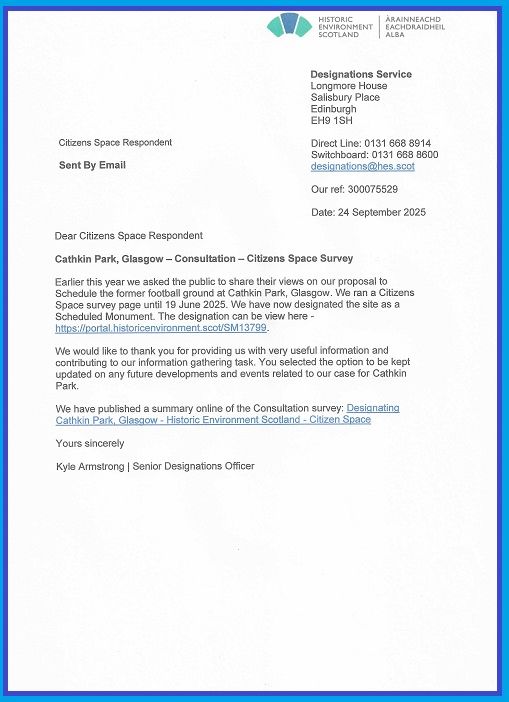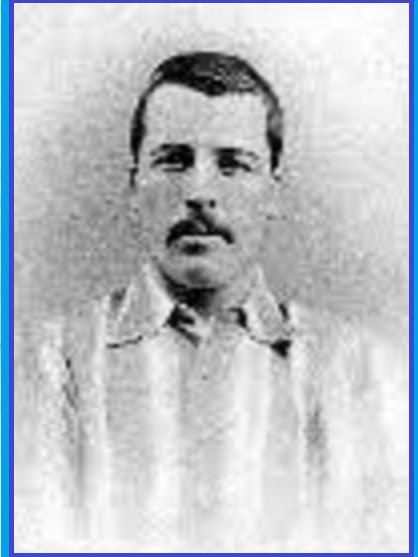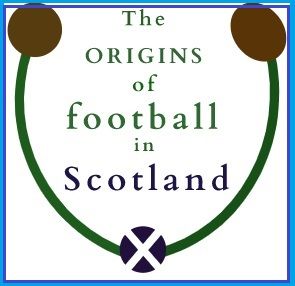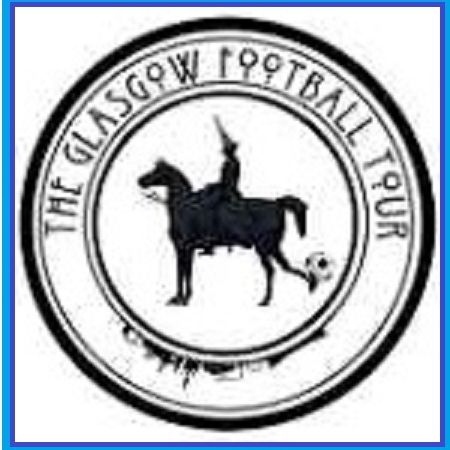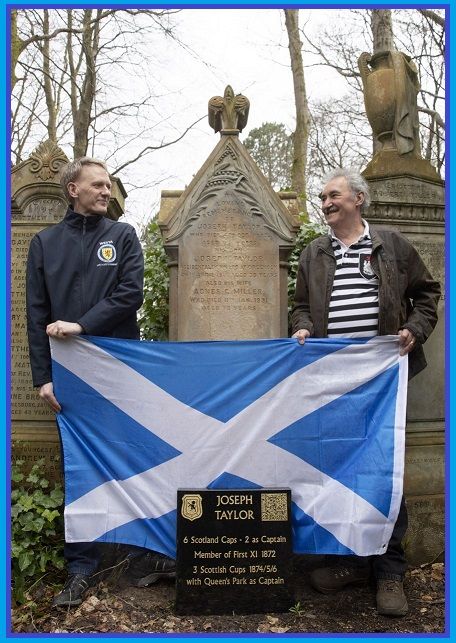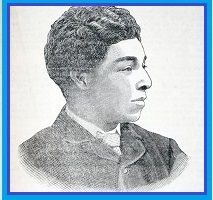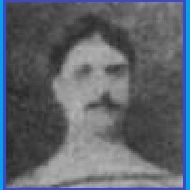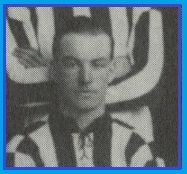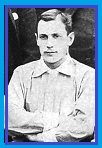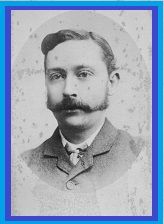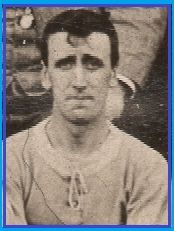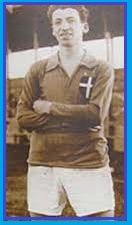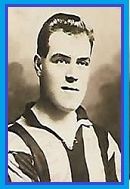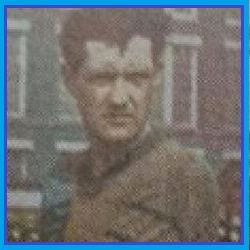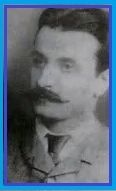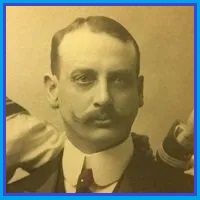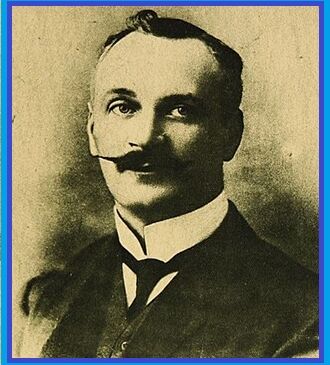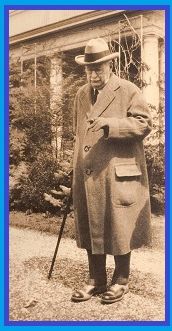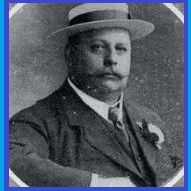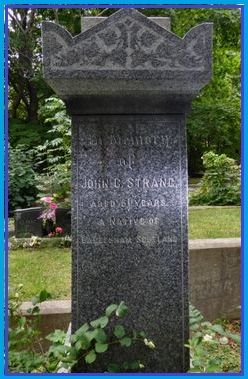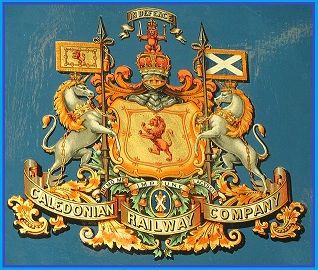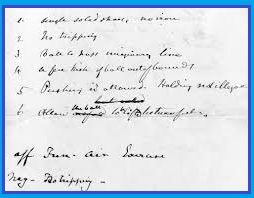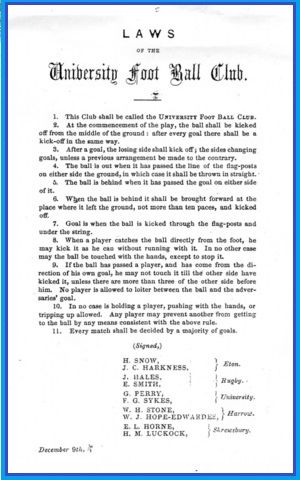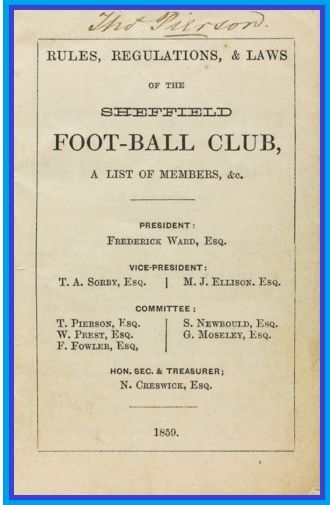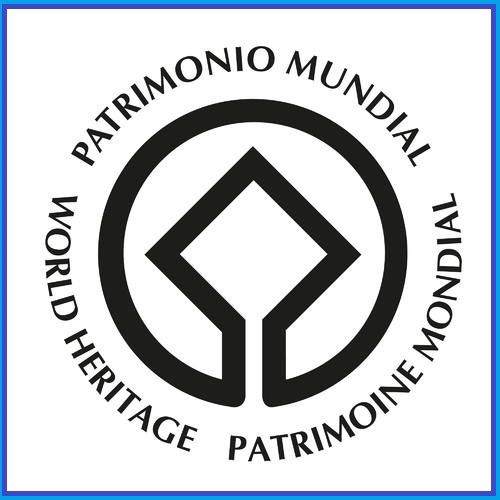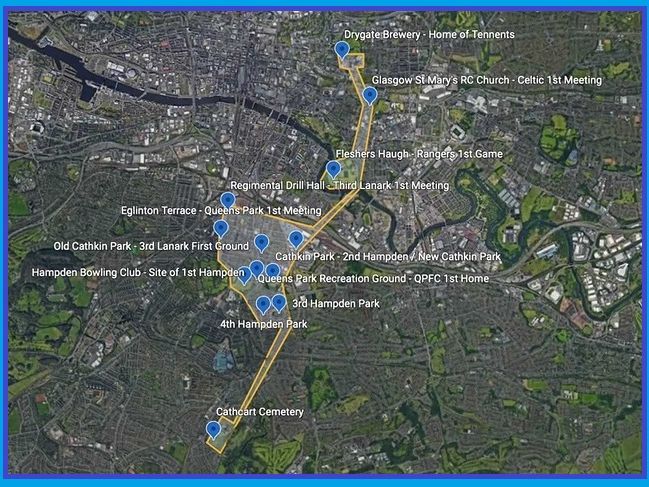The Scots Football Historians' Group
(serious football history, factual facts and stats with actual numbers)

This site is dedicated to the serious, fact-based exploration of Scottish football, that is the modern game largely created here, and Scots football, taken to the World in passion, minds and feet by our forebears, largely amateur in the true sense, who in so doing created the beautiful, global game. Our aim is to un-cover and relate the real stories of and backgrounds to this passion for the World game and preserve the legacies no matter what and where globally. We research, spotlight, advocate, mark, preserve and restore, all voluntarily. Now we even comment, so before scrolling on to enjoy or use our content first consider a donation.
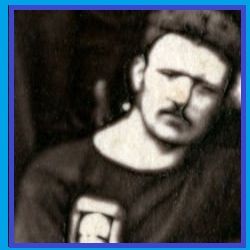
The "Short, an' tae Feet" Podcasts
Now - the first of another way of SFHG putting Scots football-history reet! More to come.
Bo'ness - Ramsays and Easton, Finland and Chile
And to come:
Newmilns & Darvel, Sweden and Spain
Lybster to Logie - the Andalusian Way
Geo Genovese and Doig - the Letham Boys
For more click on: Podcasts
and now read on.
And just released with our cooperation and therefore approval is this short on the life and times of Glasgow's Jimmy Lang, a World's first professional footballer. To view, click HERE.
----------------------------------------------------------------------
"Fifty Scottish Footballers"
The Scots Football Historians' Group's first ever publication is out and available to buy.
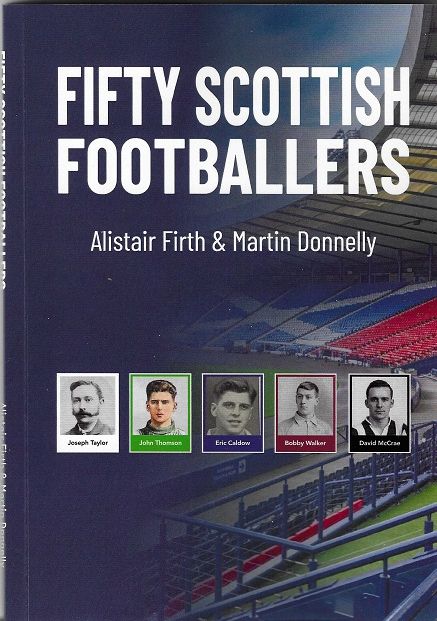
Get your copies for Christmas, allowing 10 days for posting, by clicking on:
"Fifty Scottish Footballers" by Alistair Firth and Martin Donnelly
The inestimable Andy Mitchell in his foreword says of it, "This is a book that is close to my heart............This array of 50 Scotland internationalists is a wonderful way to raise awareness of this work... (the tracing and preservation of these and other football graves) ...and the proceeds from this book should help to ensure it continues.
Martin and Alistair have selected an eclectic range of men who won caps in the early (and more recent) years, some of them stars of the day like Bobby Walker and RS McColl, but many of them simply honest pros who had an interesting life (and death) beyond the football field. All of them have a story to tell, all of them have a grave that can be visited (and honoured)"
And there is and will be more to come. Read on Below.
----------------------------------------------------------------------
Sheffield - At it again!
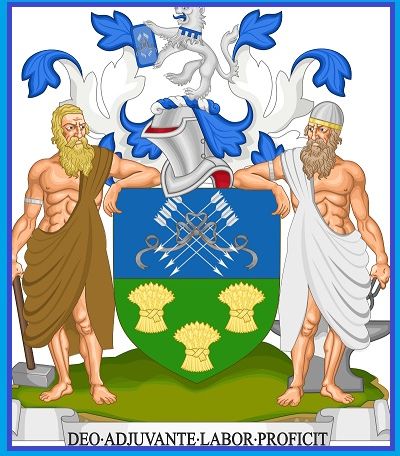
This time the ruse is to claim that, as most of the Scottish players involved in the five "unofficial" internationals of 1870-72 would have qualified under today's grand-parent rule, the games should be seen as official. Then, instead of the third, Scotland didn't win its first international until the eighth. To which the emotional response is "So What" and "Whatever. Sheffield football from the mid-1870s collapsed and Scotland gubbed English teams at club and international levels for the next fifteen years. In fact Steel City football only recovered when The Wednesday recruited half-a-dozen Scots."
But at SFHG we try to be more cerebral. So, one, the "Scotch" teams were chosen by the English FA not us and, two, Sheffield constantly gets into a tail-spin over the distinction between football and Association football. The latter did not exist as an 11-a-side game in Scotland officially until Queen's Park agreed in late 1871 to play in the FA Cup and thus to full FA rules. But in practice it was not until 5th March 1872, when QP actually played its first game in the trophy. So until either of the two dates there was no means of Scottish, Association footballers to be selected, only ex-pats, even the Smiths. Which means either two or none of the "unofficial" matches might be counted. You make your choice. We're not desperate either way, just a wee bit weary.
Recreativo v Aguilas
i.e. Spanish Scotland v Spanish Scotland
Top-of-the table Aguilas came to Huelva today, Sunday 30th, playing out a 0-0 draw. Game excellent, grass pitch perfect, winter sunshine beautiful. Just like beloved East Fife!!
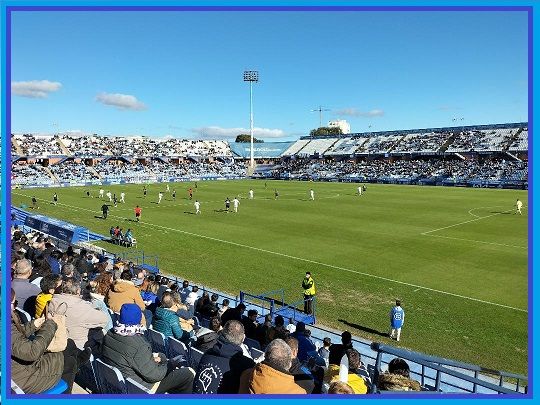
----------------------------------------------------------------------
____________________________________________________________________________________________________________________________________________________________________________________________________________________________________________________________
Update and Urgent Appeal!!
Hampden Bowling Club, the First Hampden - Scotland's, your and the World's unique footballing history under threat
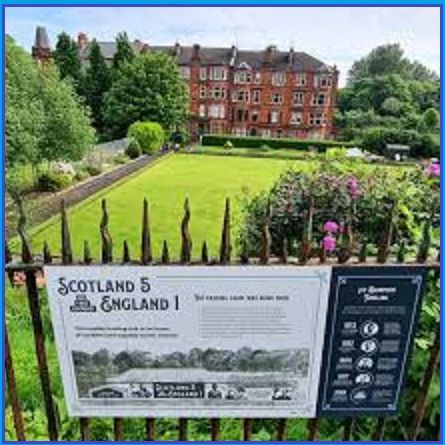
Over the last period the Cathkin Park site, in Glasgow's southern suburbs, actually in a public open-space and still used for football, and the therefore the remains of the second of Queen's Park's Hampden Parks and Third Lanark's former ground had been under threat from commercial encroachment. However, in the last few weeks, after a campaign with SFHG heavily involved, it has been made relatively safer by official "designation" by the government agency, Historic Environment Scotland (HES). It is under the Minister of Culture and all involved are due praise and thanks.
However, matters do not end there. Also within the last weeks the site, just a few hundred yards away, of the first Hampden, the Global Game's first ever purpose-built stadium has come under similar threat. The grounds have been used for the last one hundred and twenty years by Hampden Bowling Club (HBC), which due to onerous lease-demands from Glasgow City Council will be dissolved in February next. The land will then be in limbo. Meanwhile, requests for separate designation of it are being filed with HES, with also the suggestion of Cathkin's being extended to both locations and even the possibility of them being used for a new Scottish Football Museum, starting not in 1945 but 1871, even earlier perhaps, and actually covering our Golden Eras, Hampdens One and Two included.
The more voices added to those requests the better. We urge you to write to HES and to the Ministry of Culture with your concerns. The addresses and emails are easily found on the Net.
____________________________________________________________________________________________________________________________________________________________________________________________________________________________________________________________
Renton & The Vale -
The Making, Unmaking, Remaking, Breaking and Who
(But the creation of the Scottish Game)
(with massive thanks to the incredible London Hearts Supporters Club archive)
Intro
In previous pieces on the SFHG web-site we have looked in greater depths at the history and, as it seems to turn out, the myths of not the foundations of modern football, because, contrary to some versions, it did not happen all in a one, but its "creation" over thirty to a hundred years, depending on stand-point and, sadly sometimes, prejudice. Those looks, with huge thanks to the top-quality research done by our colleagues in that city, have included the great role Sheffield played not just through the formulation of its own version of the game but also in the encouragement almost to the point of midwifery of the Association one at its London birth in 1863 and in its early, very rocky first half-dozen years. Also there have been the challenges to Sheffield's then role from 1870 and even to the idea that Association football began as a game of the Public Schools and upper-classes. In the former, as the full Association game began to prosper, not least with the arrival of it in 1871 to Scotland, the Yorkshire city's game first imploded, seemingly due to local politics and mismanagement, and over the best part of two decades struggled as it gradually subsumed it own take on kicking a specifically round ball into that of the London-based one.
In the latter the facts seem to show that the Football Association in London was begun by well-to-do members of the upper middle-class, most of whom having not been anywhere near Eton etc. and was then infiltrated and usurped by the Public schools to be subsequently, and falsely, even distastefully claimed as their own.
But closer to home there is a third area of football myth to challenge, that of the creation of Scottish football and more particularly the way that Scotland took to the game and then carried it forward. Here one team, Glasgow's Queen's Park and "its passing game", which in fact had already been used in both Sheffield and London, has been and is still often presented as both the Standard-Bearer and standard-maker, see the inexact gas-lighting by again Glasgow's Football Square Mile, when the reality is there were two more, both from the Vale of Leven, the valley of the Dunbartonshire River Leven so outwith Glasgow; they being Vale of Leven, F.C., "The Vale", from the parish of Bonhill and the town of Alexandria and just to the south from the parish of Cardross and the village of Renton, Renton F.C.. And, whilst here at SFHG, because our approach aspires to be, first, neutral, second national and at all times philosophically forensic, even scientific, we have and will continue to look at the role of the Glasgow former, it is on the Leven latter that the five episodes of this piece concentrate. - IPCW
Episode 1: The Making
So the story begins not in late but early 1872. In March Queen's Park, having from November 1871 received byes to the semi-final of the first London FA Challenge Cup, the FA Cup, travelled to London to face The Wanderers. The result was a draw and, with the visitors unable to finance travel to the replay, they had to default and the home team went on to take the trophy.
Yet the one meeting that did take place tells us several things. The first is that, in order to take part Queen's Park had agreed a twofold acceptance; that Association football was a winter game and the London rules rather than its own would from now on apply. The second is two facts emerge, a) we know the Queen's Park team - Gardner, Edmiston, Hepburn, Ker, Leckie, J Smith, R. Smith, Taylor, Walker, Weir and Wotherspoon - and b) just now we do not know the formation. Moreover, we are also aware from contemporary source that, whilst the internationals between England and Scotland, now designated as unofficial, all of which had taken place also in London, the first in March 1870 and last just a month earlier, had had not inconsiderable Press-attention, this club-match generated still more but also actually not much on-field activity. A month later a single match - also a nil-nil draw - was played by Queen's Park against Granville, newly officially-formed just up a few hundred yards up the road at Myrtle Park. But that was it.
In fact the game after that was not to be until 28th August and the one after that on 19th October; initially against Airdrie, an emphatic 6-0 win, and then Granville once more, again a win, 4-0,. But there was a difference. In both cases we have the teams - Gardner, Wotherspoon, Taylor, Thomson, McKenzie, Leckie, Weir, Ker, McKinnon, Rae and then Thomson, Taylor, Gardner, Hepburn, Leckie, Weir, Wotherspoon, Grant, Rhind, McKinnon and Rae respectively with captain, Robert Gardiner, in the first playing in goal and in the second as a half-back. But crucially we also have the formations. In the second match, just as The Vale is reported as in Alexandria holding its first practice, Queen's Park, according to The Glasgow Herald, seems to have played, as was the case with English teams of the era, 1-2-7 but in the former, again from the Herald, it had been a completely innovative 2-2-6, the same shape that was to be employed, in the penultimate encounter of the year, played now in Glasgow and the World's first official international.
Now at this point we have to wind back slightly. At some point still in 1872, said to have been in the Summer or Autumn but seemingly before December, Queen's Park, as part of its programme of demonstrating specifically the Association game and creating opponents had travelled to the valley of the Dunbartonshire Leven, specifically to the Park Neuk recreation-ground in Alexandria. No-one knows exactly when it was but Vale of Leven Football Club is said to have been formed on 20th August, suggesting, albeit as a longish shot, it may have been then with the possibility that it could even have been the source of the formational experimentation just a fortnight later.
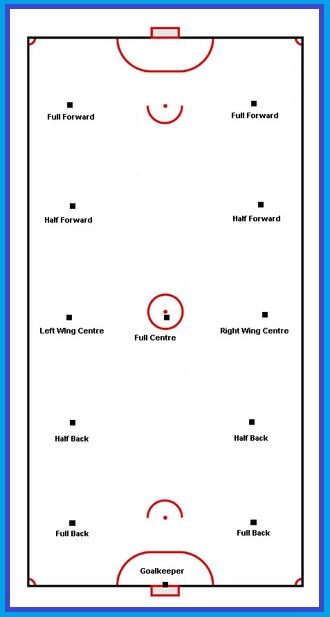
And the reason may well be Scotland's ancient game of shinty, now finally start-ing to achieve rightful recognition as an origin of ice-hockey and even golf. In the upper valley of the Leven, where the Orr Ewing brothers, Alexander and John, had in the 1830s founded their calico printing-works, employing often near-Highland labour, it had become the winter game. The first recorded shinty match between the two establishments had been in 1852. In 1870, so just two years before the visit of Queen's Park, 2,000 or so spectators are said to have come to the annual encounter. They and the young men on the field-of-play were thoroughly versed in the old game and its stands to reason that they would have approached the new one with it in mind. It is even said that when they were invited to take the field at Park Neuk to play against the Glasgow men first they did so in shinty formation.
That said, even today with shinty formations differing between the north and south Highlands two things stand out as being not just potentially transferable but one hundred and fifty years ago actually transferred to the football field. The first is the block-four defence; what turns out to have been Queen's Park captain Gardner's perhaps novelty but one he might already have been aware of, picked up from the shinty he must have seen or even played in Glasgow, his home-town, or Paisley, that of his parents, but with the possibility it had on Park Neuk been noted for its effectiveness and adopted. The second is the vertical forward pairings.
Here the use of the words "perhaps novelty" should be explained. Reason one is it is well-documented that in the World's first official football international, played in Glasgow on 30th November 1872 between an England team and a Scottish one, captained by Robert Gardner and drawn mainly from Queen's Park, the English played 1-1-1-7 and we 2-2-6, i.e. the block-four. Reason two is because on the 21st December 1872 The Vale travelled to Glasgow to Queen's Park for the first of four encounters over the rest of the 1872-3 season. Again we know the team - William Ker, Joe Taylor, David Wotherspoon, James Thomson, Jimmy Weir, Bob Leckie, Alex Rhind, Willie Mackinnon, Andrew Spiers, William Keay and Archie Rae but no Gardner - and that Queen's Park would win easily, 3-0 but just now have no formation. However, that would not be the case for the remaining three encounters and here is the crux. Queen's Park, even with Gardner back in the elevens as twice goalkeeper and then a forward and contrary to myth, played 1-2-7 again twice and then 2-1-7, i.e. Queen's Park went back, indeed backwards, to the English way. Yet their up-country, newly-come opponents took the field on all three occasions as a 2-2-6, the apparently new Scottish way, either because they were either very good and fast learners (as incidentally Clydesdale must have been also) or because, it has to be said once more, it was what they already knew from old, were comfortable with and, having passed it on once for it just now to be seemingly rejected, ensured, whether deliberately or not, it was to be carried forward and ad infinitum. Even today it is the foundation, on which a back three, four or five plus matching mid-field is laid with the steps from then to now quite clearly discernible.
In fact Queen's Park, after the third Vale match, two draws and a Queen's Park win, was that season to play just one more fixture, a home win, 1-0, over Glasgow Wanderers from this time just down the road in Cathcart. Moreover, it seems also to have been the last one for The Spiders for Bob Gardner. There was to be an extensive falling out, whether generated within the club or perhaps by international defeat in early March 1873 in London, where England played 1-1-2-6 and Scotland 2-2-6 once more, is unknown. But by October 1873 Gardner's friend, Wotherspoon, had moved the mile or so across to equally near neighbours, Clydesdale, to be joined later by Gardner himself. A J. Gardner plays there at full- or half-back on 15th November behind Wotherspoon, as had a Gardner for almost equally nearby Dumbreck nine months earlier, but that may be, rather than a mistake in the initial, simply another or even his elder brother, James. An R. Gardner definitively first plays between the sticks and as captain on 13th December, by when the Titwood Park club, having previously again played English-style had re-adopted 2-2-6, as, whilst Vale continued with it, had Granville and another and still newer club was seen from the start to be using it too. It was Renton.
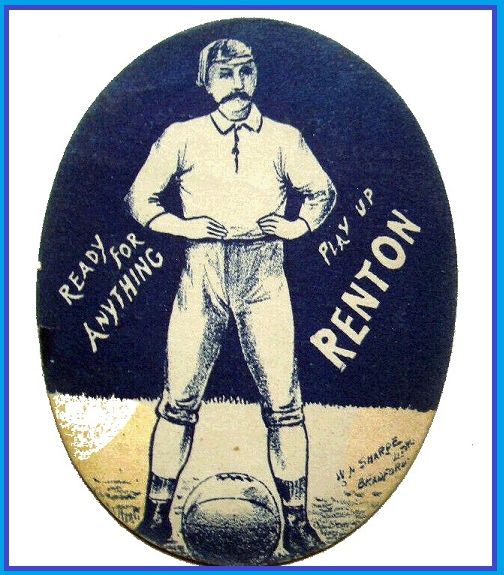
Whilst Renton F.C. was clearly not in the very first wave of Scotland's football clubs (it had not been a founder member of the SFA) and its actual foundation-date is un-known it was one of the entries seven month's later into the first Scottish Cup. Moreover, at that initial attempt it would reach the Quarter-Final, losing only to Queen's Park, the eventual title winners, 2-0. Furthermore it would do it with a team that we know in detail (see below), one which included, for later reference, a Melville and remained largely unchanged when the club would the following year go all the way to the final, held at the first Hampden Park and won by the home team once more, this time 3-0.
But here again there is something else that is, if anything, more worthy of notice. In that December 1873 encounter with Queen's Park both teams lined up as notionally 2-2-6 but in a contemporary report in The Scotsman no less more detail of Renton's positioning is given.
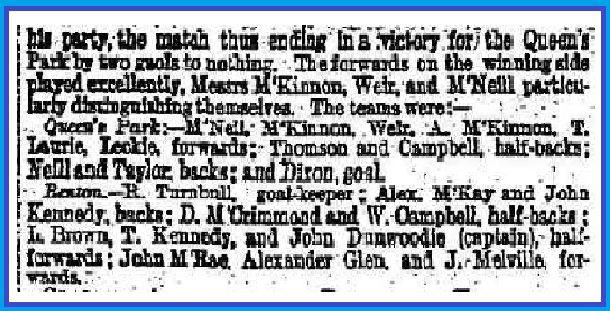
Alex McKay and John Kennedy were the full-backs, McCrimmond and Campbell the half-backs. But in front of them were three "half-forwards" and beyond them three "forwards". In other words there were firstly three pairs and secondly they were not horizontal across the pitch but vertical. The Renton formation was actually 2-2-3-3 and still more to the point, like the block-four defence, the term "half-forward" comes straight from Southern shinty with full-forwards in front of them.
In other words Renton was observed as a first playing football using an almost fully Camanachd formation that retained the full-centre (see again above), added another but was, in order to reduce to eleven players, less the two wing-centres.
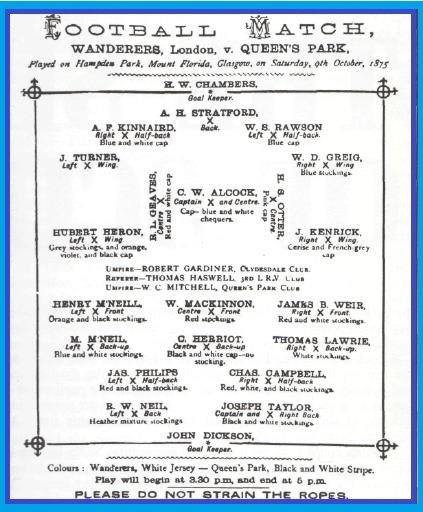
Moreover, the horizontal to vertical adjustment clearly worked, with more to come and the following implications. From these new tactics and not known passing, used in any case for two millennia in the ancient game, would rapidly emerge a, in fact THE, distinctively Scottish style of play, which can and in both parts be seen almost as quickly to be adopted by other teams; even if Queen's Park proved to be one of the most tardy. The earliest reporting of it and vertical forwards would be on 9th October 1875. It was versus The Wanderers once more and this time with both Arthur Kinnaird and Charles Alcock in the Londoners' line-up. Lawrie, in front, and Weir were on the right, McKinnon and Herriot in the middle and the McNeill brothers, Harry, a known shinty-player, and Moses, on the left. FYI Queens at home at Hampden won 5-0.
At this point Queen's Park had been and would remain undefeated. But that was to change and it was to be The Wanderers, which were first to make it happen. In the follow-up friendly to the above game and four months later in February 1876 they back in London would be victorious by 2-0 but then Queen's Park, playing essentially with ten men, had something of an off-day, rectified with a 6-0 win away against the same opposition in November that same year. However, that was to be just seven weeks before invincibility in Scotland also came to an end. It happened on 30th December in the Scottish Cup and at the hands of Vale of Leven. It had, after the Ferguson affair, essentially seen elimination from the first two Scottish Cups, but had been building up a head of steam. In its first year it had gathered a pool of twenty-four or so players that was then reduced over three seasons to a squad of sixteen to twenty, Ferguson included; one which essentially knew each other's game. They were drawn from the same calico works that had previously supplied the shinty players. In fact, a number of them were also accomplished at the game. And they would soon constitute the World's first consistently successful working-class club. Renton, equally if not more working-class, had had its moment first but, having just eliminated Scotland's previously unvanquished doyen, The Vale would not only take that Scottish Cup that year and but for two more consecutively after that and in 1878 in beating the English FA Cup holders, The Wanderers once more, be ipso facto the first best club in the World.
(Here the work done at Stirling University, as shown in Scottish Football Origins, in examining the back-grounds of the players from the Vale of Leven, including Dumbarton, from the valley's three main teams, makes the point far better than we can.)
That is, however, not to say, meantime and a mile and a half down the road Renton had been just a one-off wonder. It too was prospering. Whilst in 1875-76 it had been knocked out of the Scottish Cup in just the second round and by The Vale it not only had an established group of players but one which it was able to re-build still from local talent. And, although it would in 1876-77 be eliminated in round one again locally by Dumbarton, in 1877-8 with the new squad it too would find a wave, one of its own, making it all the way to the penultimate round and only lose to Third Lanark on a replay, this as The Vale had been granted a semi-final bye. Who knows how it might have turned out had it been the other way round but it is not inconceivable, as Renton was about at last in Tontine Park to have its own, proper ground, that first, the final would have been all-Leven and, second even, that Renton might in winning have gone on instead to become both Scottish and World champions. Such are the fine margins of fate.
Known Renton, Renton Thistle, Vale of Leven and other Upper Vale Teams
- N/A
- N/A
- N/A
- N/A
- N/A
- N/A
- N/A
- N/A
- N/A
- N/A
- N/A
1872-3
_________________________________________
- Cunningham
- Wylie
- Fergus
- Ferguson
- MacDermid
- Moodie
- Graham
- McKechnie
- MacDonald
- Lang
- Edmunds
1872-3 - Jamestown
_________________________________________
- Robert Parlane
- Archie Michie
- J. M. Campbell
- James White
- John C. McGregor
- George McGregor
- Robert Lindsay
- Robert Jardine
- J. McNichol
- John Ferguson
- J. Campbell
McLay, Ewing, Bryan, Sandy McLintock, Wright, (Robert) Paton, Partington, Colquhoun, Duncan Cameron, D. MacFarlane, Matthew Nicholson, Charles Glen, William Kinloch
1872-3 Vale of Leven
_________________________________________
- R. Turnbull
- John Kennedy
- Alex. Mackay
- W. Campbell
- A. Strachan
- Brown
- John McCrae
- L. Brown
- J. (G)Mel(ville)in
- Alexander Glen
- F. Kennedy
D. McCrimmond, T. Kennedy, John Dunwoodie, N (M). Campbell, D. Kennedy, J. McRain (McCrae?)
1873-4 Renton
_________________________________________
- Robert Parlane
- Archie Michie
- P. Paton
- D. McFarlane
- A. Mcintoal(McIntyre)
- W. MacDonald
- M. McGregor
- George McGregor
- Duncan Cameron
- J. McGowan
- Robert Lindsay
John Ferguson, J. M. Campbell, T. Wood, J. McNichol, Sandy McLintock, John McGregor, John McInlay, James Williamson, (A.) McEwan
_________________________________________
- Turnbull
- Mackay
- J. Kennedy
- Scallion
- McGregor
- (Mc)Rae
- Melville
- J. Brown
- M. Kennedy
- Alexander Glen
- L. Brown
_________________________________________
- William McLennan
- P. McKinlay
- P. Docherty
- J. M'Nichol
- A. M'Kinley
- R. Milne
- H. Irvine
- J.McAllister
- P. McAllister
- John McDougall
- George Smith
James Peters, James McDougall
[John Forbes, A. McEwan, J. McPherson and J. McNichol playing for Star of Leven.]
_________________________________________
- Robert Parlane
- Archie Michie
- A(ndrew). McIntyre
- J. M. McIntyre
- James Baird
- (Charles) Glen
- Partington
- Robert Paton
- McDougall
- B. Russell
- John Baird
John Ferguson, Sandy McLintock, Robert Lindsay, (John or James) McDougall, McGregor
1874- 5 Vale of Leven
_________________________________________
- Turnbull
- McKay
- Kennedy
- Scallion
- Jenkins
- L. Brown
- Kennedy
- J. Brown
- Glen
- Melvin
- McRae
Joyce, Miller, Nelson, McCrimmon
_________________________________________
- McCrimmon
- Grant
- P. McGregor
- Davidson
- Cameron
- Burnholme
- (McIn)Tyre
- Grant
- J. McGregor
- McRae
- Ritchie
_________________________________________
- (William) Wood
- (Will) Jamieson
- A. McIntyre
- (James) McIntyre
- Sandy McLintock
- (John or James) McDougall
- John Campbell Baird
- James Baird
- McGregor
- (Robert) Paton
- (John) Ferguson
Lamont, (Robert) Lindsay
1875-6 Vale of Leven
_________________________________________
- W. Kennedy
- Grant
- Turnbull
- McArthur
- M. Kennedy
- Miller
- McRae
- McCrimmon
- Burnham
- Grant
- (James)(John) McIntyre
1876-7 Renton
_________________________________________
- White
- McPherson
- McLeish
- Jones
- McEwan
- McFarlane
- McLean
- Strachan
- Russell
- Burns
- Lamont
_________________________________________
- William Wood
- Andrew McIntyre
- Archie Michie
- Will Jamieson
- Sandy McLintock
- John Ferguson
- John McGregor
- David Lindsay
- Robert Paton
- John McDougall
- John Baird
John McPherson, Robert Parlane, James McIntyre, John McFarlane, James Baird, Jones, May
1876-7 Vale of Leven
_________________________________________
- Kennedy
- Grant
- McKay
- N/A
- McArthur
- Miller
- McRae
- Burns
- N/A
- McCrimmon
- McAllister
Colquhoun, McLearie, (Denton), Grant, Loy, Fagans, Davidson, Fraser, McIntyre
_________________________________________
- N/A
- N/A
- N/A
- N/A
- N/A
- N/A
- N/A
- N/A
- N/A
- N/A
- N/A
1877-8
_________________________________________
- Robert Parlane
- Andrew McIntyre
- James McIntyre
- John McPherson
- Will Jamieson
- John Ferguson
- Robert Paton
- John McDougall
- James Baird
- John Campbell Baird
- Johnny McFarlane
Sandy McLintock, John Baird, Strathearn John McGregor, May, Jones, George McGregor
_________________________________________
- McIntyre
- W. Grant
- McArthur
- Colquhoun
- McLearie
- Burman
- McCrimmon
- Fagan(s)
- A. Grant
- McRae
- Loy
McKinnon, Kennedy, Cameron
_________________________________________
- Woodroe
- Moir
- Collins
- R. Sharp
- W. Sharp
- Brown
- More
- McIntyre
- McCulloch
- Lindsay
- Stewart
_________________________________________
- Robert Parlane
- Andrew McIntyre
- Sandy McLintock
- Will Jamieson
- John McPherson
- John Campbell Baird
- John McDougall
- James Baird
- John McGregor
- John McFarlane
- John Ferguson
Robert Paton, W. Strathearn, H. McLeish, J. McIntyre, Paton, P. Logan, T. Taylor, W. Taylor, J. Stewart, J. Murie (Murray)
_________________________________________
Episode 2 : Our Scots Game's First Eleven
On 13th December 1873 Queen's Park F.C. played a just third match ever at home at the First Hampden Park, the same Hampden that is just now under threat from rapacious philistinism. The Spiders won 2-0. It was in the initial Scottish Cup and could be seen as the first of the Scottish Game, the distinctive Scots Game. But it probably wasn't, because this was third round and both teams had won at least twice already, very possibly employing the same formations as each used that day. And nor was it Queen's Park, as convention has been claimed for the last one hundred and fifty years, that tactically led the way. It was opponents Renton, a grouping of eleven, very ordinary, working men living within just a few hundred yards of each other in a Dunbartonshire village, who without them knowing were changing the World forever. And that was because they were taking the first steps, they were inventing not Association football itself but beginning the creation of what has become the global phenomenon the Game is today.
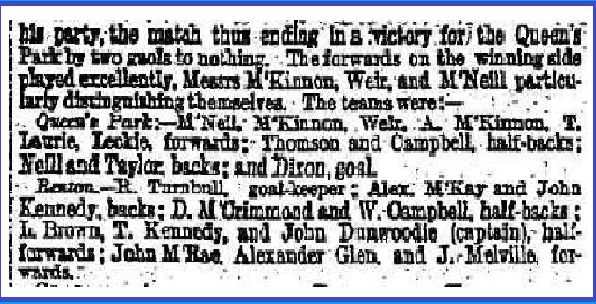
And the source of this claim is none other than The Scotsman newspaper. Its report of the match has Queen's Park taking the field as two full-backs, two half-backs and six forwards, a 2-2-6. It was the system that the previous season Vale of Leven, aka "The Vale", Renton's neighbours from just up the road, had made its own and preserved. This when Queen's Park after the Scotland-England international of November 1872 had reverted to playing the English, the failing English 1-2-7 or 2-1-7, but now seen the error of its ways.
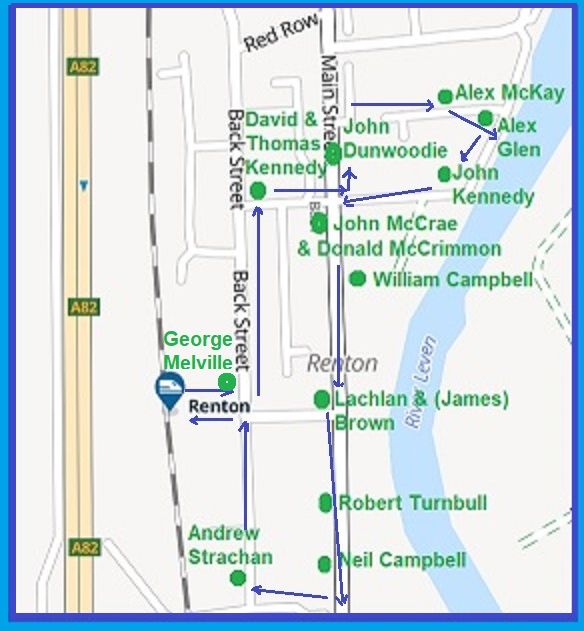
However, the paper also describes Renton, having not just followed The Vale's 2-2-6 example, but actually going further. It has set its attack as two rows of three, a 2-2-3-3, something also drawn from shinty and which it may have done for some two months already. It is just we do not have the confirmation. But the fact is that from December 1873 we do, in black and white. And there is more. The Scotsman would even name the eleven, who filled the positions, both old and new, including the captain on the day; a skipper and players who might be considered, after Robert Gardiner, the game's second, if utterly unknowing, wave of genius. After all, they were very probably doing not what they planned but what they already knew from whatever source, be it sporting or cultural
So who do we think they were and what became of them with passable answers to both question proving relatively easy to those who know how and where to look? In goal R. Turnbull, Robert Turnbull, was a Block Printer, aged at the time twenty-three or twenty-four and living on Renton's Main St. at number fifty-seven. He was Renton-born too, as was his mother but his father had come from Dunipace, fitba' country. He would marry a Kinloch (see Alex Wylie below) and his maternal grandmother was a Glen (See below also). And he would live to eight-two and die in 1930, still locally in Dumbarton. Then at full-back there were two presumably robustly powerful men, Alex McKay and John Kennedy, the former a Blacksmith, the latter then a Quarry Labourer. McKay was twenty-three or twenty -four. He had been born in Renton or possibly the village of Buchlyvie in Stirlingshire, so fitba' country once more, and again probably die in Dumbarton, in his case at eighty-six. But in the meantime he had married, would raise family in Renton and in 1881 would be living midst the Kellys and Kelsos, Lindsays and Bradys at 16, Thimble St., quite possibly the most important wee road in football history. And as to John Kennedy he was twenty-two or twenty-three, stayed just around the corner at 19, Burns St., was definitely Renton-born, would marry in the village and at some point after 1881 probably emigrate to Canada. His youngest daughter, Jessie, would in 1911 marry in Cobalt in up-country Ontario, her father now recorded as an engineer.
Then at half-back, in the engine-room, would be two men, who clearly also played shinty. They would both feature in the local teams that seven years later would take and then almost take the games' foremost regional trophy. The first, William Campbell, a Block Printer, had been born Bonhill in about 1850, so was twenty-two or twenty-three. But in the interim he had grown up in Renton at 129, Main St., his mother's home village, his father, a tailor, born in Argyll, so shinty country. And it appears he was the elder brother of George Campbell, a half- or a full-back too, who between 1888 and 1890 was to play, also for Renton, before three seasons with Aston Villa, two more as captain of Dundee, retirement in 1895 and an early death of heart failure in Dysart in 1898. The second was Donald McCrimmon, in 1871 a labourer in the dye-works, and living at 54, Main St. And his parents were both Highlanders. His father, a tailor once more, had been born in Klimarie on Skye, as was Donald, possibly in Stein, and his mother was a McCrae, from just across the water in Kintail. They were almost certainly Gaelic-speakers and steeped in shinty, with him, indeed both men, quite naturally transferring the skills, the passing and the combination, of what for both was a first not a second sport.
So to the half-forwards, novel to football at least and in shinty the link between defence and attack. On the right of the three was L. Brown, Lachlan Brown, a young, 17 or 18 year-old Yarn Works Labourer and also a shinty boy. He stayed at 103, Main St., the son of a Mclean mother born on Argyle's Cowal Peninsular and a father born in Kilmodan, slightly more west still. Marrying still on the Cowal before moving first to Old Kilpatrick and then Cardross, where Lachlan would be born, they too were steeped in the ancient game, as would be their children. But Lachlan, it seems would move on, perhaps on reaching twenty-one in 1876. And he would go South. He married in West Ham in London to Scots girl originally from Govan, in 1911 they were living in East Ham with three children. They later moved to Ilford and Romford, and it was in the latter that Lachlan would die in 1927. Then in the middle we have T., Thomas, Kennedy, his elder brother, David, also a Renton player that same season. David was a Block Printer once more and age 27 or 28. Tom, another tailor, was 23 or 24. Both had been born in Thornliebank, their father from Ayrshire and their mother from Neilston but had moved to Renton, living on the junction of King St. and Back St.. But by 1881 Thomas, having already in 1875 in Renton married Janet Thomson had moved, first with their young family to Alexandria, then more permanently to Glasgow. She would die there but he, curiously perhaps, passed away in 1915 on a trip to Australia. And finally on the left was John Dunwoodie, young at 17 or 18 but as captain presumably considered the best player or perhaps a driving-force in the club's foundation. He was a joiner, staying at 171, Main St.. And his background was that he had been born in nearby Kilmaronock in 1855, but of Irish parents so little shinty likely in the family. And even in Renton he would not stay long, seemingly soon also emigrating and again to Australia, where in Queensland in 1890 he had married a girl originally from Aberdeen but in 1897 died, aged just forty-three, to be buried, it seems, on Fife Island off the state's northern coast. It was quite a journey in such a short life.
And finally to the three forwards that led the new-style Renton attack - John Rae, Alexander Glen and George Melville. Starting on and with the left-wing Melville seems to have been the uncle of James McCall, a noted left-winger himself, indeed a future international, the youngest of the three McCall half-brothers who were to have so much to do with the success of the Renton team of a decade and half later. Whereas George and Archie McCall's mother was a Leishman, she had died in 1862 and her husband, George Snr. had remarried George Melville's sister. He himself had been born in Renton in 1846, their father from the village and their mother a Glaswegian McDonald, so in 1873 was already 25 or 26 , married and living just off Back St. But from the 1870s, a ship's carpenter to trade, he was also on the move. By 1881 he was living in Dumbarton, was there still in 1891 but be back in Renton in 1901, living now on Burns St.. Yet he might very well have died in England. There is no record of his death in Scotland and his wife, Mary McLeish Mckechnie, a name also to note, seems to have passed away there, in Leicester, in 1939.
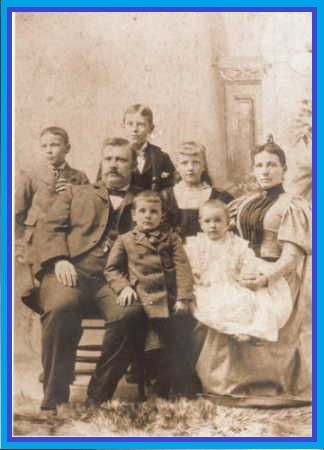
Then to the right. There there was a youngster, John McRae. He in 1873 was just seventeen, an Apprentice Pattern Drawer and staying with his widowed mother at 155, Main St. She had been born in Northern Ireland but had been in the village for some time, She and John's father had married there in 1848, he, originally from Glasgow, a Clerk in the Calico Print Works, who had died in 1871. John himself would marry in 1879 and in Alexandria, his wife Mary Taylor from the town, but around 1885 the couple, with by then two young boys, would emigrate to the USA. There they would settle in New York in Richmond, what is now Staten Island, where he continued his trade, first working as a Designer and later the owner of a Print Cutting Shop.
The house, where they lived on Warren St. in Clifton is no longer there but similar clap-board houses on either side are. There is even this photo of the family taken in about 1893. And it would be still on Staten Island that John would pass away in 1916 at the age of sixty.
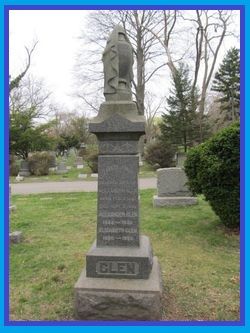
So finally we have the man who on the day led the line in that first uniquely Scots-style football team. He was Alexander Glen, another who would end his days in New York. He would die there in 1933 at eighty, also on Staten Island, and be buried there too, unlauded, in the Moravian Cemetery in New Dorp. But the grave with its magnificent stone is still there to be recognised and honoured by Scots and Scotland and, with the World Cup in part in America this coming year, perhaps the wider footballing World as a whole.
However, back in 1873 the young Alex, aged twenty or twenty-one, was an Apprentice, perhaps newly-qualified Engine Fitter and was yet another living on Thimble St., at number 33. His father was a Dye Works Labourer born on the shores of Loch Lomond in Luss, his McNee mother, from there also. But she would die still on Thimble St. in 1874, in 1877 Alex would marry Isabella Millar from Old Kilpatrick and in 1880 the couple would emigrate. Two sons would be born in America in 1882 and 1883.
Yet, Isabella would come home to Old Kilpatrick in 1884 and to die, aged just twenty-four, with Alex returning to and remaining in America, there in 1886 marrying once more. His new wife was Elizabeth Worth. They would settle on Wild Avenue in Travis-Chelsea , eight miles from the McRae's, he working as an engineer. And there they would have three children before again her early death in 1906, aged thirty-nine, with him this time not remarrying, continuing to work, now as a chief-engineer, until retirement and then living until his passing in 1933 not just with his two daughters but, from 1930 at least, his nephew, Daniel Glen, also Renton-born, a foreman in the local lino-factory, next door with his family. A wee Renton-enclave across the water.
Episode 3 : The Unmaking
So it was that at the end of the 1877-8 season the valley of the Dunbartonshire Leven would have the Cup-Winner, The Vale itself, and a semi-finalist, Renton, which had failed to make the final only on the second replay. And it was to be superficially much the same the following season, except that, whilst the Alexandria club would go on to take the trophy for a third time in a row, having meantime also defeated the English Cup-Winners, The Wanderers, to become ipso facto World Champions, Renton's slot would be filled by Dumbarton. To do so, with Renton having gained from a first-round walk-over, it had in October 1878 in the second round and watched by 4,000 crushed the Tontine Park club away 1-6. As it turned out It was not a good omen. Whilst a new and third village club, Renton Wanderers, played its first recorded game in January 1879 Renton itself was perhaps already struggling with worse to come. The next year's Cup would see them get through rounds one and two on replays, one against the Dumbarton club, Lennox, before in the third Dumbarton itself overwhelmed them once more, this time 5-0 albeit away. And after that there is for the loser of that encounter not a single game recorded for the rest of the season.
Moreover, Renton's premier team would not be alone. In October 1878 Renton Thistle, until then the village's second of two clubs, had lost in the Cup's first round, in fact to Lennox, then played a single last fixture and was dissolved. There would be no obvious explanation and, furthermore, turn out to be a precursor of what was to come next.
In September 1879 The Vale had lost its Cup crown, going down in the first round and to the growing power of Dumbarton once more in what much have been a great match, 4-3, away. But it continued to play on with a programme of friendlies, a full squad and, in 1880-81, would reach the Cup quarter finals with Renton, firstly, be one of its victims on the way, again in October in just the second round, 0-1 at home, and, secondly, the Tontine club once more having not a single further, recorded game. Then in September 1881, whilst Renton had entered that season's Cup, it allowed itself in the first round to be walked over by another local club, Jamestown, and in addition did not obviousally feature anywhere again. Indeed, by the end of the season, so the summer of 1882, it had even resigned from the Scottish Football Association. The club had seemingly collapsed.
There is, as previously with Thistle, to this point no obvious explanation for this turn of events. And, whilst several theories have been suggested, none seems enough on its own, although together they might have been sufficient. The first is that through the 1870s, on-field, whilst The Vale had regularly drawn from a pool of at least twenty players, climbing to thirty in 1880-81as its rival just down the road seems by 1878-9 to have had just fourteen at its disposal, and from that point perhaps simply struggled to put together a team. The second is off-field. By that time its Secretary, the man who organised it and the fixtures, was James Thomson, who in 1878 married a girl from Dumbarton, moved there with no replacement found. The third, somewhat tortuously, is that there was almost an edict had been handed down in the village that specifically football should cease, although not all sport. Shinty was still acceptable. It seems unlikely. The fourth is that early exits from the Cup redirected the village's sporting talent, and in 1879-80 that of Alexandria also, back to the ancient game.
This fourth has, in fact, been for sometime the preferred thesis as in 1880 "Vale of Leven" won the premier, Glasgow shinty trophy, the Glasgow Celtic Society Cup and in 1881 and 1882 "Renton" was twice runners-up. However, we now have uncovered the GCSC teams and, whilst there is some cross-over of personnel from both football clubs, notably David Lindsay, W(illiam) Campbell and A(lex) McCrimmond, and therefore a continuing intermixing of tactical thinking, it was simply not enough numerically to have weakened either club fatally. In the case of The Vale in fact there was the opposite, which suggests the shinty "Vale of Leven" may have been geographical rather than club. Indeed, the Alexandria team, with half-a-dozen new recruits, can be seen to have rebuilt its specifically footballing side starting after the 1879 set-back,and to immediate success. In season 1880-81it was to be a Cup semi-finalist, losing to Dumbarton, and in 1881-2, whilst exit would be in the second round it would be to the same opposition, again 0-2 and at home, with The Sons of the Rock once more going on to the last hurdle and a second loss to an also rebuilt and importation-rejuvenated Queen's Park.
And the fifth theory is due perhaps to a disruption in patronage and thus finances, not in the form of sinecure jobs, as the academic historian, Matthew McDowell, has suggested but with seemingly little indication beyond normal practice everywhere at the time, and certainly no evidence for these early years, but in terms of facilities. Tontine Park, rudimentary as it was with, for example, no grandstand until 1886, had to paid for in terms of both land and infrastructure, never mind running-costs.
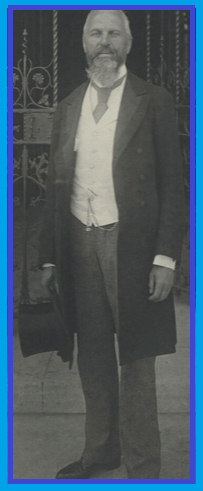
So, from the formation of Renton Football Club it seems Alexander Wylie had been its President, Honorary or otherwise. A Wylie had even played for Jamestown in its earliest, known team, as had, for future reference, a McKechnie. His father, John, had been the one to bring Turkey-Red dyeing to the valley. He had come in from Balfron, Perthshire fitba' country. But Alex's mother was local, Bonhill parish born. In fact she was a Kinloch (See Vale of Leven's first ever squad) with Alexander himself born in 1839 in Alexandria itself and working initially for the Orr Ewings. But in 1873, so at the age of thirty-four, he joined William Stirling and Sons in Renton at the Cordale and Dalquhurn works, being part of the consortium that acquired the business in 1878 and becoming its manager in 1880. And that was the same year he wed Ann Mylrea and might simply have turned his attention to newly-married life with the football relegated to the back-burner.
However, sadly it was not to last. In 1883 Ann Wylie died in the village aged just twenty-seven and is buried in the graveyard of Cardross i.e. Renton's Old Parish Church, with her husband never remarrying.
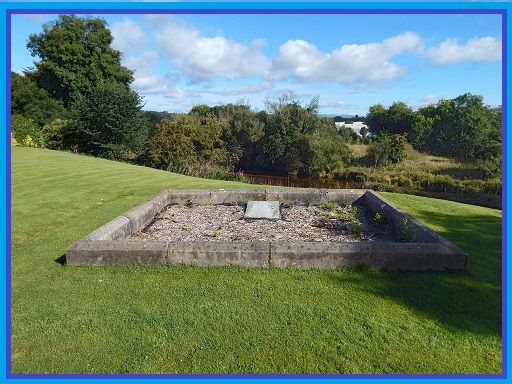
In fact he would outlive her by almost forty years, dying in February 1921, aged eighty-one, to be buried with his brother and sisters in the family plot still in Renton but at its Trinity Church. The timings are significant. It is unlikely to have been coincidence that in 1883 a new, well-run and -funded Renton football club emerged, of which he would be President and also almost four decades what remained of the same, by then long outwith the top-flight, indeed, the League, was wound up within months of his passing.
And so to Alex Wylie himself. He is, perhaps best described, as, for example, Alexander Watson Hutton is of the Argentine game, as the Father, and twice over, of Renton football and therefore much more. He would see his remarkable village-club in five years from rebirth rise right to the top in Scotland, then in Britain and therefore the then Football World. But it would in that same time also develop what would become not just its tactics and therefore style but Scotland's as a whole, thus should he not also be considered the Father of our game? Furthermore, with the Scottish Game provably the one that was taken round the World, should he not then be lauded too as the Father of the Global Game. Yet where is the recognition, where are the laurels? Unlike the arguably less significant AHW, AKW's last resting-place is adorned neither by stone nor bloom.
Known Renton, Renton Thistle, Vale of Leven and other Upper Vale Teams (cont.)
- James Smith
- R. Kilpatrick
- D. Lindsay
- J. McLean
- W. Campbell
- John Smith
- John Docherty
- James Williamson
- Thomas Kinroy
- James McComish
- A. McClaren
_________________________________________
- Cunningham
- Collins
- Sharp
- Cranmer
- McCulloch
- Brown
- Stewart
- McIntyre
- Hendry
- Coubrough
- Graham
_________________________________________
- Robert Parlane(28)
- Andrew McIntyre (23)
- W. Strathearn(18-20)
- John McPherson(23)
- James McIntyre
- John Ferguson
- John McFarlane
- James Baird
- William Taylor
- John McDougall(23)
- M. Gilles
Will Jamieson, Paton, McGregor, John Baird (23), Sandy McLintock (26), John Forbes, G. Cranmer/Cranbury, (Mc)Rae, D. F(L)indlay, D. McLean, J. Brown, A. McLeish, Cunningham
_________________________________________
- James Towie
- D. Gordon
- W. McKay
- H. McKinney
- A. MacCrimmond
- M. Kennedy
- Joseph McIntyre
- J. Munro
- James McIntyre
- T. Watson
- James Watt
- Alex. McKinney
1880-81 Renton Shinty
_________________________________________
- Lindsay
- McIntyre
- N/A
- N/A
- N/A
- N/A
- N/A
- N/A
- N/A
- N/A
- N/A
- N/A
_________________________________________
- Robert Parlane
- W. Strathearn
- Sandy McLintock
- James McIntyre
- Andrew McIntyre
- John McPherson
- Peter Logan
- John Campbell Baird
- James Baird
- Robert Paton
- John McFarlane
M. Gillies, J. McRae, C. McRae, John Ferguson, John Forbes, R. Murie, H. McLeish, D. Lindsay, D. McLean, John McGregor, W. Taylor, J. Cranmer, Cunningham/Cumming, Kerr, Wilson, McLaren, Chapman, Walker
_________________________________________
- M. Kennedy
- J. McKimie
- A. McLaren
- D. Gordon
- J. Towie
- John Smith
- James Smith
- T. Watson
- A. McKimie
- J. Baxter
- Joseph McIntyre
- James Munro
1881-82 Renton Shinty
_________________________________________
- A. Sharp
- J. Millar
- W. Collins
- T. Hendry
- D. McLean
- J. Brown
- H. McCulloch
- A. McCrimmond
- D. McIntyre
- J. MacFadyean
- William Mann
_________________________________________
- Sandy McLintock
- John Forbes
- John McFarlane
- John McPherson
- (Robert) McRae
- Peter Logan
- J. Abraham
- William Struthers - from Rangers
- Dan Friel
- James Brown
- D. Kennedy
Andrew McIntyre, M. Gillies, Kerr, W. Strathern (Strachan), J/G.Cranmer, Cumming, Gillies, C. McRae, J. McCrae, McLeish, John Miller, J. Wilson, W. B. Johnstone, Kennedy, McNee
_________________________________________
Episode 4 - The Remaking
So first a resume, a rapid recapitulation. In 1878, having made it to the second round of the Cup only to be thrashed 11-0 by Vale of Leven, Renton Thistle, the village's second but still senior club, allowed a first round walk-over in the September of the following season and was then, having played one further game in October, seemingly dissolved. And in 1881 the pattern of walk-over and dissolution was repeated by Renton F.C. itself, this as The Vale stuttered in 1879 but regrouped, rebuilt and came again to reach successive Cup finals in 1883 and 1884.
But this is, as newly identified, not to say that football ceased in Renton. The fire was still smouldering and through a third club, exploits of which are monitorable only in the local papers of the time. It was Renton Wanderers, the name of which implies a somewhat ad hoc nature and, albeit Tontine Park must have been under-employed, no fixed ground. In 1880 it had at least one match, in October, two more at the end of the 1880-81 season, one in January 1882, another in February and a third in December, so the following season. And two names for the future, Andrew Hannah and John McNee are said by 1882, then aged 18 and 16 and living on Renton Main St. and at Succoth Farm respectively, to have emerged from it, plus David Hannah, aged fifteen and in Park Buildings, from non-existent Renton Thistle, so perhaps a third. Moreover, we know from the 1880 fixture two of the players to have shown up the best, Lindsay and McIntyre, the former perhaps in David Lindsay a link to the past via shinty and The Vale and the latter a link forward to the near future.
The emergence itself would be from early September 1882. Having re-joined the SFA that summer Renton - version two - was once more eligible to enter the Cup. And that it did, going from nowhere on a mini-run, albeit with a team, of which just now we have not one detail. In the first round it defeated Dumbarton's Alcutha 1-3 away. In the second on the last day of the month it was Southfield from Slamannan, away once more and impressively 1-14. Then at the end of October Falkirk was accounted for 4-1 at home, after a 2-2 draw away. Only in fourth round did the opposition prove too much. Lugar Boswell came to Tontine and won, but it must still have been an epic encounter, the final score being 3-5.
However, despite the successes the second thing, after team-sheets, that did not re-emerge was Press interest. But it would, when on 8th September 1883, with the initial Cup rounds played regionally, the holder, Dumbarton, travelled the ten minutes on the railway to Tontine and was defeated, 2-1. It was to prove seismic, albeit initially sedately so. The Glasgow Herald would quietly write:
"It may be remembered that the Renton club succeeded some years ago in running into the final tie, and played with the Queen's Park but on that occasion they were unsuccessful, since then the club has been little heard of, Saturday's team being an entirely new one."
And, whilst this time the run only went as far as third round, a win 6-1 win at home over Kings Park from Stirling but then a loss up the road away to The Vale, 4-1, there are team-sheets known and finally further reports of other, friendly games. In terms of the latter in a 6-1 victory over Paisley Athletic its "brilliant passing had been very much admired" and at the end of the season in April, it would again lose to Vale of Leven, 4-2, but do so in a match that was "well-contested", The Vale having just been runner-up in the Cup-final and on a walk-over. And in terms of the former three things become clear.
The first is that the Renton players were by the footballing standards of the times not in the flush of youth. Whilst Bob Kelso and James McCall might have been just eighteen and Andrew Hanna by now nineteen, Archie McCall and Donald McKechnie were already twenty-two, the younger of the two McIntyres, along with several others, twenty-one and his probable, older brother appears to have been an old man of twenty-three.
The second is that they, about eighteen in total, were a very local, close, village group, although one which remarkably was within five years to prove of national, indeed, international, importance. Of the main eleven Archie McCall, half-brother, James, plus Donald McKechnie, John Lindsay and Andrew Hannah were all living on Main St.. Alick Barbour was on Back St., as was Joseph Thomson, Hannah's future brother-in-law. Meanwhile Bob Kelso stayed on Thimble St.. Then throw into the mix the McIntyres, probably Alexander and John, both from Stirling St., aged 23 and 21 respectively, whose elder sister, Christina, had a decade earlier married John Kelso, Bob Kelso's elder brother. And that leaves just John Mall, perhaps McColl, possibly an Irishman, who emigrated to America, or maybe from Jamestown.
And third is that, having been aged between fourteen and nineteen or twenty when the first Renton folded, they must somewhere have learned and, under the radar, had considerable practice, perhaps mostly in-house, at what they were obviously able to do so well, with really only one candidate known, the shadowy but clearly very effective Renton Wanderers.
But the Dumbarton Cup-tie would not be the first game Renton had played that season. A week earlier on 30th August there had been an odd one on-the-face-of-it, again at home, a first against non-Scottish opposition, won substantially 10-1 but also perhaps the result of former more glorious times. The away-team was Irwell Springs, the club from the Irwell Springs Dyeing Works, the Irwell being Manchester's river. The team still exists today, now as Bacup Borough, Bacup being the adjacent town. The club had been formed in 1879, one of the last in that East Lancashire footballing hot-spot and by two brothers, John and Robert Rankine, said both to have been "former Vale of Leven players", the assumption being that they had played for The Vale. It is unlikely. They were not Vale-men. Both had been born in Rutherglen, where its football club had been founded in 1875, but there is a link and it is not to Alexandria.
Both John and Robert were in the textile trade and it was that, which had in 1878 taken them, the former aged twenty-two and the latter twenty, from Scotland to Bacup in the first place. John was a Turkey-Red Dyer, Robert, a cotton yarn dyer, who would eventually become the works manager but a clear, Scottish passion for football was in the meantime and in what would become their permanent home a driving force outwith their professional lives. And in settling John would marry a local, Bacup girl, whilst Robert would shortly after arrival return to Rutherglen for his bride, Annie, with whom he would have seven children. But in 1891 she died and a year later Robert at thirty-four would remarry. His new wife would be twenty-four. Her name was Magdaline Gillespie. She had been born in 1868 in Dumbarton and as a girl in 1881 had been living there on on the east side of the river in Levenbank St. so in the parish of Cardross, the same parish as Renton, and was still there in 1891 by then a Printfield Worker, presumably at Dalquhurn.
It suggests that certainly Robert knew the valley of the Leven, had maintained contacts there, might even have briefly worked and lived there in the mid-1870s, could even with his brother have played football there and be held in high enough esteem in wider Cardross not just for the 1883 visit, but another exactly a year later and then a third game, on 2nd April 1885 this time in Bacup. It would be the first but far from the last time Renton would demonstrate its emerging abilities outwith Scotland. Indeed, that third game would be part of a Lancashire tour, but one which still suggested frailties. Irwell would be beaten, yet this time only 1-3 , but the game the following day against Blackburn Olympic was lost 3-1 and the one the day after that against Bolton Wanderers was also a defeat, 2-1.
In the meantime the 1883-4 season in Scotland had seen, as already mentioned, the Tontine team after the knocking out of The Sons of Rock progress to a third round defeat to The Vale, which itself would go to the defaulted final. Then Renton's 1884-5 campaign would start with a narrow first round win over Alexandria's other team, Vale of Leven Wanderers, be followed by a far easier 2-10 victory over East Stirlingshire in the second and another, 9-2, over Northern from Glasgow in the third, this as notional Cup-winner, Queen's Park, was knocked out. Then November's fourth round would produce a narrow home win over St. Mirren and the there was a stroke of luck, perhaps two. The club was granted a bye into the quarter finals and there defeated Rangers, did the same to Hibernian in Edinburgh in the semi-final and thus had only to face Vale of Leven in the last match and this time emerge with a replay- victory.
And over the same period there had been other changes. More generally the first player from the whole valley of the Leven to have gone South professionally had been Dan Friel. It had been in the summer of 1883, he had played for The Vale, been twenty-two, had left for Accrington but was uncapped. But the next to go the following season and from the same club was more immediately notable. It was Sandy McLintock, capped three times, aged thirty and Burnley-bound. This was as his home-club was, albeit that Johnny Ferguson was still playing at thirty-four, rebuilding for a second time. As to Renton by the end of the 1884-5 season and the final, whilst the defence remained settled, Alex Grant had had come in for the younger McIntyre and in the wing-pairing with Alick Barbour the replacement of the mysterious Mall was a certain, nineteen year-old James Kelly.
And the 1885-6 campaign was for that same club in terms of personnel to start much the same. John Lindsay was in goal. Hannah and Archie McCall were the full-backs, McKechnie and Kelso the preferred half-backs in a 2-2-6. That is until December against Cowlairs. There for apparently the first time three half-backs was tried with a player called Watt between the two incumbents. It, the 2-3-5 system, was, however, not new. A formation to have come out of Wales in 1878, Midland and now Northern teams in England were already using it, Edinburgh football had also turned to it early with Nick Ross, even when he had joined Preston from Hearts, a notable exponent. And from Auld Reekie it had been creeping westward, in addition to which all the international teams except Scotland now employed it too. Nor did it even at Tontine go away but went change-about. For the following game 2-2-6 was reverted to but against Edinburgh's Hibernian in the one after that, man-on-man, it appeared to be back with now erstwhile half-cum inside- forward, Alex Grant, in the middle of the three, whilst for the Cup Final against Queen's Park on 13th February the line-up was back to Renton conventional.
But then came the PNE debacle. It was to be the clubs' first meeting. It took place on 27th March 1886 and in Preston at Deepdale. There were nineteen Scots on the pitch on the day. North End, as they had for much of a season that had see them undefeated and only handful of draws, fielded eight as Renton was massacred 7-0 but with no possibility clearly that it was anything to do with national styles. It was personnel or tactics, this as Dewhurst scored after fifteen minutes, then young Jimmy Ross hit two, his brother Nick one, from full-back, as did John Goodall, Jack Gordon and even known hard-tackler, Davie Russell, from defensive, repeat defensive centre-half one also. And it led after the match to Renton's then captain, a soul-searching Alick Barbour, sitting down with his opposite number, Nick Ross, and getting him to explain in detail what Preston was doing and Renton was not. It proved to be a revolutionary conversation although not quite yet. The club had first to return to a home-match against Hibernian once more, a 3-5 defeat.
However, obviously more thinking was needed and change necessary with both perhaps first showing their faces in a 6-2 defeat in a friendly at home of Aston Villa on about 20th August 1886, but with no team and therefore formation known. However, we do know on the 25th September 1886 at the start of the new home season Renton faced Rangers and again played three half-backs, Kelso, Kelly and a new name from the second team, Allison, with Barbour and an another new-comer, seventeen-year-old John Campbell as the right-wing pairing. But then it was back to the more conventional but with Kelly then being moved about still more. He and Barbour were at right-wing for the next game and three weeks later with Campbell back he and and McIntyre, presumably the more advanced of the two, were the central pairing.
And it is at this point that in still captain Alick Barbour's mind something must have been taking more solid shape. Throughout November, December and into January 1887 the formation remained the same against home-grown clubs and in defeat of visitors alike; Accrington in October, a home draw with Blackburn Rovers in November and an away win in Blackburn in December. Indeed, if something were gelling, it needed to not least because in January Preston was coming north not for one but two games a week apart, a friendly and an FA Cup tie.
The friendly was on 15th and ended as a 2-2 draw. But on 22nd Preston got down to business. The result for Renton was a 0-2 home defeat, the response to which and the fact that the Dunbartonshire team had never yet beaten the Lancashire one was that first Barbour dropped himself, bringing in a further new name, Neil McCallum from Bonhill, himself replaced Kelly for the game after that, then brought him back and played himself on the wing with either Campbell or McCallum for the remainder of the season, which was going more or less to end with an April tour to, you have guessed it, Lancashire once more.
It would not go well. The first game was yet again against North End. It was a 2-1 defeat. Then came draws at both Burnley and Bolton Wanderers, at which point but aged just twenty-five Barbour clearly decided at his home-town club at least he had done what he could. That summer he joined the Bolton club and, whilst he returned to Renton or more specifically to Bonhill village to live out his life after football, he would spend the rest of his on-field and coaching days across The Border.
As such he would be the first Renton player to make such a move, although there had been more leakage from The Vale. In the summer of 1886 Robert McRae had gone effectively from its second team. Without him having played a first-team game of note again Burnley acquired his services Then the summer after it would be Will McColl to Morton with George Davie at twenty-three and a centre-forward moving briefly to Renton and eighteen year-old James Cowan going the other way, both probably feeling their paths blocked by talent ahead. And this was as, meanwhile, the captain's armband at Renton would between the end of season 1886-7 and start of 1887-8 be passed to Archie McCall.
And at that point quite simply something extra happened. Perhaps it was generally maturity and timing, perhaps it was that McCall's by then twenty-six year-old head had in it ideas for fine-tuning or that he just had different leadership qualities. The suspicion is that it was a little of all three, a combination of more experience throughout the team, an adjustment of Kelly as the normally central one in the half-back trio from an emphasis on defensive duties a la Preston to more attacking ones, as might befit a player, who had begun as a proto-inside-forward, and an ability to cajole a still relatively inexperienced Kelly, perhaps by McColl himself and now from behind, to hold a position behind the five forwards but not between but in front of the Scottish tradition of just two half-backs. And the results were to be spectacular. With a fairly steady first-team and a total pool of about twenty-five players by the turn of the year they were in the Cup semi-final with a tally of thirty-nine goals for and six against and here is the run of games from then, the 1st January, to the denouement at the season's end.
2nd January 1888 Dundee Harp - Renton 0 - 5
3rd January 1888 Forfar Athletic - Renton 0 - 4
14th January 1888 Renton - Queen's Park 3 - 1
in the Scottish Cup semi-final
21st January 1888 Dumbarton Athletic - Renton 0 - 2
in the Dunbartonshire Cup
4th February 1888 Renton - Cambuslang 6 - 1
for the Scottish Cup Final
11th February 1888 Renton - Vale of Leven 1 - 2
for the Dunbartonshire Cup Final
25th February 1888 Hearts - Renton 0 - 3
3rd March 1888 Rangers - Renton 3 - 7
(10th March 1888 Scotland - Wales)
and Queen's Park - Renton 1 - 1
(17th March 1888 Scotland - England) 4 players in Scotland team
(24th March 1888 Ireland - Scotland)
and Partick Thistle - Renton 2 - 4
31st March 1888 Renton - St Mirren 3 - 2
7th April 1888 Kilmarnock - Renton 1 - 1
14th April 1888 Renton - Morton 2 - 2
19th April 1888 Queen's Park - Renton 2 - 2
for the Glasgow Charity Cup
21st April 1888 Sunderland - Renton 2 - 4
28th April 1888 Vale of Leven - Renton 0 - 5
2nd May 1888 Queen's Park - Renton 0 - 2
for the Glasgow Charity Cup replay
8th May 1888 Rangers - Renton 1 - 5
12th May 1888 Renton - Cambuslang 4 - 1
for the Glasgow Merchants Charity Cup
19th May 1888 Renton - West Bromwich Albion 4 - 1
for the "World Championship"
26th May 1888 Scoto-English played Scoto-Welsh
(The Scotland players against England v the Scotland players against Wales)
28th May 1888 Celtic's first game
2nd June 1888 Renton - Preston NE 4 - 2
for the "World Championship" II
In the twenty-six games over five months four finals (and they say modern, professional footballers play too much) were reached and three won. There was just the one defeat, to The Vale in the Dunbartonshire Cup. There were three draws, two when resources were stretched by internationals, one to Queen's Park. Seventy-two goals were scored for and twenty-four conceded, exactly 3:1 and, as well as taking the Scottish Cup then playing and roundly defeating the English Cup winners, West Bromwich, to become de jure World Champions, they finally beat Preston, which the following year would be the World's first Double-winners.
Oh, to have seen a rematch that following season but it would never be because at that moment the Renton World as was would fall apart, a combination of rapaciousness and from each side of the border. First came the departure to newly-formed Celtic of both James Kelly himself, there to be captain, and Neilly McCallum, but it should be remembered that also Andrew Hannah went initially to West Bromwich, Frank Dyer to Bolton, George Davie to Everton and William Brady to Burnley, a ration of 2 to 1, South of the Border to North. And Vale of Leven almost by proximity was not immune either. It lost James Coyne also to Everton and from its first eleven John Forbes to Blackburn and Tom McLean to Notts Co., so two North and seven South so far.
And the drain would continue at the end of the following campaign with from Renton John Lindsay going and once more to Accrington, Andrew Hannah, another to Everton, Harry Campbell also to Blackburn, John McNee to Bolton Wanderers and even Frank Dyer brought back from Bolton to replace Kelly taking himself to Vale of Leven. And to that, never mind Dumbarton was now being similarly impacted, must be added The Vale's further losses of John Baird to Aston Villa, Frank Dyer off again, this time to Warwick County and James Cowan again to Warwick County before Aston Villa, so from the two upper-Leven clubs one North and seven South from that season alone and totalling three and fourteen overall thus far.
But even then it did not stop. In the summer of 1890 Renton was virtually cleaned out. John Harvey and John Campbell went to Sunderland, David Hannah to again Sunderland and then Liverpool, Patrick Gordon to Everton, Billy Fraser to Stoke and Robert McDermid to Accrington. Whilst the exodus from The Vale comprised John Murray to Sunderland, Alex Paton to West Manchester, Archie Osborne to Notts County, James McLachlan to Derby Co., John Walker to Grimsby Town and Daniel Paton to Aston Villa. That is twelve, all heading South, so now three still North and twenty-six South.
And by the middle of 1891 it was even worse. From Renton Duncan McLean had moved to Everton, George Campbell and James Brown to Aston Villa, Harry Gardiner to Bolton, Duncan McNair to Middlesbrough Ironopolis, John McNee back to Bolton, John Cameron to Stoke, John Duncan to Notts Forest, Willie McArthur to Sunderland Albion and George Davie to Arsenal. Whilst from The Vale they were accompanied by Andrew Whitelaw to Notts Co., James Sharp to Preston, John Baird to Aston Villa, James McMillan to Everton, the returned McCallum to Nottingham Forest and Malcolm McVean to Liverpool.
Moreover, still there was no end. 1892 would see the departures or re-departures from Renton of Andrew Hannah, James McBride and James Kelso, all to Liverpool, and Thomas Towie briefly to Celtic and then Derby County. In 1893 its was Gilbert Rankin across to Vale of Leven, Robert Glen to The Wednesday, John Cowan to Preston North End and Aston Villa and Andrew Hannah back to Liverpool, whilst in 1894 it would Jack McNee, now to Newcastle Utd and Jock Bell to Wolverhampton Wanderers. This as The Vale saw the departures in 1892 of Daniel Bruce to Rangers and Johnny Darroch also to The Wednesday, in 1893 amazingly none and finally in 1894 Duncan (Mc)Nichol to Darwen.
It meant in the seven season from 1888 there were something like seventy-eight net out-flows to English clubs and and ten to Scottish ones, eighty-eight in all or eight teams, one plus a season. It was, of course, unsustainable. Indeed, the clubs would begin a long wither-on-the-vine, this whilst ex-players and the few originals who remained in Scotland taught and/or demonstrated to the rest of the nation the distinctive Renton cum Leven way of play, those who went as a new wave of this time more properly qualified "Scotch Professors" to England did the same there and with in time, largely but not entirely the former, taking the same to the wider World. It would be a still distinctive but now renewed Scottish style of play, the new Scottish Game with a mobile, attacking, passing rather than defensive, non-Preston, pivotal centre-half, essentially the first, dedicated mid-field and, dare it be said, not unlike shinty's "full-centre". He would be positioned in front of narrow half-backs with full-backs now able to widen and all behind a forward-line, already operating in vertical pairings that had or would soon produce from the back-up- or half-forwards of the old system inside-forwards, right and left. And from those adjustments would emerge the concept of those same inside-forwards fetching and carrying, the one-man mid-field becoming at times three, and almost organically until really the Hungarians the again Scottish adaption of the half-backs marking inside-forwards and full-backs the wingers. The long-term superiority of this final concept was nowhere better expressed than by Jimmy Mullen, the experienced Scotland captain a full forty years later on the victory of the Wembley Wizards of 1928. He said:
"I want to emphasise that all our forwards are inherently clever. ... But I wish to say that the English tactics were wrong. The Saxon wing-halves paid more attention to the wingers than the inside forwards – therefore the latter were given a lot of space. It is a common thing in England to let wing halves, and not fullbacks, mark the wingers. It doesn’t pay and I don’t know why they pursue it."
To which he might have added. "I feel sure that the wider, global, footballing World will not make the same mistake."
Known Renton, Renton Thistle, Vale of Leven and other Upper Vale Teams (cont.)
- Re-joined SFA
- Andrew Hannah - aged 18 -from Renton Wanderers
- David Hannah - aged 15 - from Renton Thistle (Wanderers)
- ((John) McNee aged 16 - from Renton Wanderers)
- N/A
- N/A
- N/A
- N/A
- N/A
- N/A
- N/A
_________________________________________
- Cunningham
- Collins
- Miller
- Wilson
- Hendry
- Sharp
- McIntyre
- McGregor
- McCulloch
- Weir
- Muir
1882-83 Jamestown
_________________________________________
- Dan Friel - to Accrington
- Sandy McLintock
- Andrew McIntyre
- John Forbes
- John McPherson
- A. McLeish
- John McFarlane
- (D.) Kennedy
- M. Gilles
- Robert McRae
- W. B. Johnstone
Peter Logan, W. Strathearn, James Brown,A. Kennedy, James Wilson, A. McLellan, (D.) Lind(say) McCulloch, D. McIntyre
_________________________________________
- John Lindsay (21)
- Archie McCall (22)
- Bob Kelso (18)
- Donald McKechnie (22)
- James McCall (18)
- Alick Barbour (21)
- John M(H)all(McColl) (21)
- Joseph Thomson (20)
- John McIntyre (21)
- Alex McIntyre (23)
- Andrew Hannah (19)
_________________________________________
- Sandy McLintock - to Burnley
- James Wilson
- John Forbes
- Andrew McIntyre
- John McPherson
- Peter Logan
- Robert McRae
- D. Kennedy
- D. McIntyre
- W. B. Johnston(e)
- M. D. Gillies
John McFarlane, A. McLeish, Cramner, W. Strathearn, James Brown, Abraham, Gilles, McCulloch, McLean, Cumming, McLellan, Kerr, Sinclair, McBrayne, J. Galloway, Campbell, Graham, Roxburgh, Tait
_________________________________________
- John Lindsay
- Archie McCall
- Andrew Hannah
- Bob Kelso
- Donald McKechnie
- James McCall
- Alick Barbour
- James Kelly
- Joseph Thomson
- Alex McIntyre
- Alex Grant
(Robert) Allison,John McNee, David Hannah, Burton, Baxter
_________________________________________
- W. Collins
- T. Sharp
- A. Roxbrough
- R. Sharp
- T. Hendry
- William Wilson
- William McColl
- J. McCallum
- A. Whitelaw
- C. McLaren
- A. McLaren
_________________________________________
- James Wilson
- Andrew McIntyre
- John Forbes
- J. Abraham
- J. Galloway
- David McIntyre
- John Ferguson
- W. H(B). Johnston(e)
- M. D. Gillies
- D. Kennedy
- R. Wilson
John McPherson, John McFarlane, J. McLeish, A. Kerr, James Brown, Sinclair, Coleman, J. Davie, Reid, McNaught, Murray, Whitelaw
_________________________________________
- John Lindsay
- Archie McCall
- Andrew Hannah
- Bob Kelso
- Donald McKechnie
- James McCall
- Alick Barbour
- James Kelly
- Alex Grant
- John McIntyre
- Joseph Thomson
Alex McIntyre, David Hannah, John McNee, Watt, John Campbell, Neill McCallum, McLaren, Ralston, Daniel Grant
_________________________________________
- McCallum
- McLean
- Buchanan
- McLeod
- Tom McLean
- T. McLeod
- Brodie
- Robb
- Reid
- Reid
- Neil
_________________________________________
- James Wilson
- Andrew Whitelaw
- John Forbes
- W(R). Wilson
- John Murray
- D. McIntyre
- Coleman
- M. D. Gilles
- Robert McRae - to Burnley
- McLeod
- William McColl
(Mc)Nichol, Brown, Abraham, Davie, Sinclair, Reid, Lewis Brodie, G. Willis, McNeill, Robb, Campbell, Watt, Muir, T. Nicholl, A. Nicholl
_________________________________________
- John Lindsay
- Archie McCall
- Andrew Hannah
- Bob Kelso
- Donald McKechnie
- Alick Barbour - to Bolton
- Neill McCallum
- John Campbell
- James McCall
- John McNee
- Harry Campbell
James Cowan - to Vale of Leven, George Davie, James Kelly, David Hannah, Alex McIntyre, (Robert) Allison, J. McIntyre, J.C. Nicholson, A. McDermid, Robert McDermid, H. Campbell,
1886-7 Renton 2nd XI: W.Jardine, F. Shaw, J. McAdam, T.Allison, A.P. Mackay, J.B. Brodie, P. McCallum, R.A. McCall, D. or P.(eter) Campbell, J.C. Nicholson
_________________________________________
- White
- Busby
- Kemp
- Harrison
- Cormick
- Bruce
- Campbell
- McGregor
- McMillan
- Warnock
- Muir
1886-7 - Bonhill
-----------------------------------------------------
- Cranmer
- Roxburgh
- McLaren
- Hendry
- McCulloch
- McLaren
- Munro
- Lavel
- Stevenson
- Curran
- Paul
_________________________________________
- William McColl - to Morton
- James Wilson
- Andrew Whitelaw
- John Forbes
- (William) Wilson
- (John) McNichol
- John Murray
- McLeod
- M. D. Gilles
- Coleman
- George. Davie - to Renton
James McLaren, Nichol, Brodie, D. Kennedy, T. McNichol, Merry (Murray), Tom McLean, (T.) Sharp, James Coyne, D. McNee, Graham, McLeod (2)
_________________________________________
- Andrew Hannah - to West Bromwich
- James Kelly - to CelticJohn Lindsay
- Neill McCallum - to Celtic
- Archie McCall
- Bob Kelso
- Donald McKechnie
- Harry Campbell
- John Campbell
- James McCall
- John McNee
- Frank Dyer - to Bolton
George Davie - to Everton, William Brady - to Burnley, David Hannah, A. McDermid, Nicholson Duncan, McRae, George Campbell, , (James) Brown, , P. Jardine, (James) Brown,, Patrick Gordon
_________________________________________
- T. McLeod
- L. Glass
- J. Davie
- R. McLeod
- J. Ferguson
- R. Crawford
- T. McLeod
- A. McLeod
- N. Blair
- D. Kennedy
- L. Brodie
J. Reid, J.Buchanan, M. McLean, Nichol, McGregor, F. McLeod
_________________________________________
- John Forbes - to Blackburn
- Tom McLean - to Notts Co.
- James Wilson
- Andrew Whitelaw
- John Murray
- D. McIntyre
- Graham
- James McLaren
- James Cowan
- Gilbert Rankin
- James McLachlan
James Coyne - to Everton, Graham, Gilles, McGregor, John Baird, Paterson, Gow, Currie, McMillan, McCallum, Osborne, McLaughlan, Bruce, Coleman, McIntyre, Daniel (Patten)Paton,
_________________________________________
- John Lindsay - to Accrington
- Harry Campbell - to Blackburn
- Andrew Hannah - to Everton
- John McNee to Bolton Wanderers
- Archie McCall
- George Campbell
- Harry Gardiner
- James Brown
- John Harvey
- John Campbell
- James McCall
Frank Dyer - from Bolton to replace Kelly, to Vale of Leven, A. McKay, (H) Duncan, Willocks, D McLean, McIntyre, Mathieson, James Kelso, McNee, David Hannah, McDiarmid, A. O'Neill, Patrick Gordon, Davie
_________________________________________
- John Baird - to Aston Villa
- James Cowan - to Warwick County & Aston Villa
- John Gow
- Andrew Whitelaw
- John Murray
- Collins
- James McLachlan
- Campbell - from Bonhill
- (Daniel)(J) Paton
- James McMillan
- McIntyre
Frank Dyer - to Warwick County, John Walker, Gilbert Rankin, Daniel Bruce, Latta - to Everton, Archie Osborne, John Forbes, William Murray, John McNichol, McLeod, James Cowan, (Lewis) Brodie, James Wilson, A. Paton
_________________________________________
- Johnny Darroch - to Vale of Leven
- John Harvey - to Sunderland
- David Hannah - to Sunderland and Liverpool
- Patrick Gordon - to Everton
- Harry Gardiner - to Bolton Wanderers
- John Campbell - to Sunderland
- George Campbell - to Aston Villa
- Billy Fraser - to Stoke
- Duncan McLean - from Renton Union
- James Kelso
- James Brown
Robert McDermid - to Accrington, John Gow, Duncan McNair, (James or John) Brady, James McCall, John Cameron, Currie, Willie McArthur, McLean, O'Neill, McKenzie, Belger, MacAdam, Mathieson, John McNee, John Duncan, Archie McCall, George Davie, Harrison, Mackay, J. Burleigh
_________________________________________
- Graham
- Wilson
- Crawford
- McLellan
- Ferguson
- Harrison
- McVean
- A McLeod
- R. Mcleod
- Hillfordy
- McFarlane
1889-90 Vale of Leven Wanderers
- Caldwell
- Kelsken
- Howell
- (G ., D. or J.)Sharp
- (W or A) Graham
- Balfour
- McKay
- Courtney
- Stevenson
- Mansland
- Stevenson
1889-90 Jamestown
_________________________________________
- John Murray - to Sunderland
- Alex Paton - to West Manchester
- Archie Osborne - to Notts County
- James McLachlan - to Derby Co
- James Wilson
- Andrew Whitelaw
- James Sharp
- James Paton
- Daniel Bruce
- Gilbert Rankin
- James McMillan
John Walker - to Grimsby Town, Daniel Paton - to Aston Villa, William Murray, John (Mc)Nichol, Newton, John Baird - back from Aston Vila , Paterson, (W. or A) Graham, Gilles, McLaren, Allan, Cormack (Carnock), McLeod (Dumbarton), Mckenzie & Pollock (Clyde), John Cowan
_________________________________________
- John Gow - to Blackburn Rovers
- Duncan McLean - to Everton
- George Campbell - to Aston Villa
- James Brown - to Aston Villa
- Harry Gardiner - to Bolton
- Duncan McNair - Middlesbrough Ir.
- John McNee - to Bolton
- John Cameron - to Stoke
- John Duncan - to Notts Forest
- Willie McArthur - to Sunderland Albion
- George Davie - to Arsenal
- James McCall
- (Alex) Currie - Iron Moulder, who moved to Greenock
Carlyle, MacAdam, Hendry, Mathieson, John McIntyre, J. Burleigh, James McBride - from Renton Wanderers, Joe Lindsay - from Dumbarton, Daniel Devine, Murray, Mackay, Harvie, (James, John or Joe) Brady, Abraham, James Kelso
_________________________________________
- Caldwell
- Ken(l)ski(e)n
- Darroch
- McKenzie
- Balfour
- Graham
- (Mc)Courtney
- Rice
- McAusland
- Gillies
- Mills
_________________________________________
- Andrew Whitelaw - to Notts Co.
- James Sharp - to PNE
- John Baird - to Aston Villa
- James Wilson
- William Murray
- (John) Corma(i)ck (Cornoch(k))
- McLeod
- Gilbert Rankin
- John Cowan
- Buchanan
- Daniel Bruce
James McMillan - to Everton, (Neill) McCallum - to Notts. F., (Jack) Bell - from Dumbarton?, Rice, W(alter) Bruce, Turnbull, McGregor, Mackenzie, Raeside, W. Graham, A. Graham, McIntyre, Paterson, (John) Gallagher (Gallacher), (John) Docherty, W. Smith, G (J.) Sharp, (D). Sharp, McAdam, James M(a)cAdam, Reid, John McNichol, Thomas Graham, Mills, Malcolm McVean to Liverpool, Johnny Darroch
_________________________________________
- Joe Lindsay
- Andrew Hannah - to Liverpool
- Archie McCall
- Devine
- (Robert) Allison
- James McBride - to Liverpool
- Mathieson
- Murray
- John Cowan
- James McCall
- (James , John or Joe) Brady
Thomas Towie, Archie McQuilkie, Robert Glen, Billy Fraser, Brodie (Bradley), Fairlie (Fairley), McNeil, McKechnie, Abr(ah)am, Duncan, McBride, Gillard, Johnstone, James Kelso to Liverpool, John Lindsay, Carlyle, (John) Cameron
_________________________________________
- James Wilson
- Busby
- (Thomas) Connoch (Cormack)(Cornock)
- A. Paterson
- David Tait
- McAdam
- John Cowan - to Renton
- James Logan - from Ayr
- Daniel Bruce - to Rangers
- Paterson
- McFarlane
Gilbert Rankin(e) - out of retirement?, (James) Henderson, Walter Bruce, John Galla(g)cher, Barr, Bob Robertson, J. Bain, Joe Hutchi(n)son, (Duncan), Kerr, (Murphy), George Fowler, Park, McFarlane, McNichol, Murray, James Fleming, Robertson, Mathieson, Clark, McLafferty, (T. Wilson), W. Smith, D. Sharp, John McNichol, Dan Friel, Johnny Darroch - to The Wednesday, W. Graham, D. Paton, Buchanan
_________________________________________
- Joe Lindsay
- Haig
- Archie McCall
- Gilbert Rankin - to VofL
- (Robert) Allison
- Robert Glen - to The Wednesday
- Mathieson
- John Cowan - to Vale of Leven
- McGregor
- James McCall
- Bell
Andrew Hannah - back to Liverpool, Murray, McKechnie, Archie McQuilkie (McQuigley) - to Arsenal, Dan Devine - to Arsenal, John Lindsay, Thomas Towie - to Arsenal, Celtic, Derby County, George Davie, Robert McDermid - from Lincoln, McLeod, David Tait, John Fleming, John McNee, Bell, Joe Brady - from Sheffield United, James Wilson?, Robert Duncan, Alick Barbour - back from Nottingham Forest, William White, (McGregor - from Methlan Park), Wilson, Henderson, Robert Glen, Taylor, Beattie, Mills/Milne, T. Wilson - from Levendale, Baird
_________________________________________
- T. Wilson
- Busby
- Henderson
- Gallocher
- Tait
- Hastie
- McFarlane
- Logan
- Mills
- Ritchie
- Muir
_________________________________________
- Archie Graham
- T. Graham
- Daniel Paton
- Cross
- D. (Duncan) (Mc)Nichol
- (Patrick Gallocher - from Accrington)
- Walter Bruce
- Crawford
- Keir
- W. McFarlane
- John (Mc)Nichol
Mills, Cowan - to PNE & AV, McLintock - out of retirement?, Haggerty, Row, T. Wilson, (William) McColl - from ???, Millar, T. (Mc)Nichol, McAslan, Duncan, P. McFarlane, (R.) Allison, A. Paterson, W. Graham, P. Graham, W. Gallacher, J. Nieal, Busbie, J. Wilson, McCallum, Logan
_________________________________________
----------------------------------------------------------------------
Episode 5, the last, follows soonest.
----------------------------------------------------------------------

V.
The Caledonian Clash
- Spanish Style
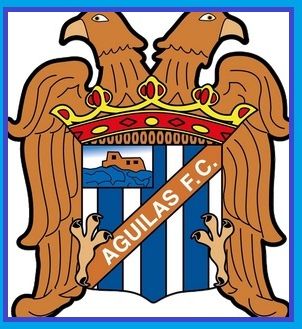
This season something unusual has happened. Spain's two Scottish teams find themselves in the same division, the Segunda Federacion - Group 4. It means they will face each other twice, the second on 8th February next, at Aguilas, founded originally as Sporting Club Aguileno, in 1896 and by Kelso and Edinburgh's John Gray. But the first, at time of writing, is just four weeks away at 5pm on Sunday, 30th November at the Nuovo Colombino. It is the home stadium in the Andalusian city of Huelva of Recreativo, Spain's oldest still existing football club, the country's doyen, its equivalent of our Queen's Park and founded in 1889 by Lybster's William Alexander Mackay and Paisley's Charles Adam. And we shall be there.
----------------------------------------------------------------------
The Battle for Scottish Football Heritage Preservation
- One Flank Held, Another Front Opening and a Proposal
South Glasgow is dotted with unique locations of importance to the origins of Scottish and therefore global football. There is, simply put, no place elsewhere in the World for the game like the parish of Cathcart. Yet those sites have been under attack first by the harshness of passing time, latterly by neglect, not least by cash-strapped councils, to a degree Renfrewshire but overwhelmingly Glasgow, and even by privatised and privatising greed.
Most prominent on a list of locations has been Cathkin Park, the second Hampden Park, the second ground of this country's doyen club, Queen's Park, and the site of the final vestiges of Third Lanark, another of those first clubs to root here and therefore anywhere.
Ged O’Brien, Founder of the Scottish Football Museum, has put it thus:
“It is hard to understate the importance of this stadium. Two founders of modern world football played on this site. It exists as a crucial example of the way in which Scotland developed the concept of the early modern football stadium.
Cathkin Park is a living monument to Scotland’s influence on many stadiums around the world.”
However, the ground had been under threat, and to a degree still is, from essentially de-communalisation of public space and the almost certain limiting of access to and probable mis-use even to the point of destruction of what remains visibly and archaeologically of both The Spiders' and Thirds' eras.
However, a campaign was mounted first to halt and then reverse the direction of travel and it has met with some success. On 24th Sept. (2025) a letter was received from Historic Environment Scotland confirming designation. It can be read by clicking on its image. The former football ground at Cathkin Park is a "Scheduled Monument" and it would be good to think the matter is now put to bed.
But, lucre is conversational always. It might not talk for now but it always whispers in the ears of those too willing to listen so with that in mind attention by us at SFHG and others still needs to paid to those who might still wish for a personal slice of the sod here, there or elsewhere.
And it is to the elsewhere we now turn. The first purpose-built, international football stadium, perhaps even the first purpose-built football stadium in Scotland and Britain so the World, the first Hampden Park, once stood again in Cathcart parish. In fact it was on the corners of Queen's Park Ave., Kingsley Ave. and Queen's Drive with now on its fourth side the railway-line, next stop south Mount Florida and today's third Hampden, which would eventually see its demise and conversion to in part Kingsley Gardens and otherwise Hampden Bowling Club. Indeed, you might have seen from the train the football mural on the back of one of the club's ground's building celebrating the victory there in 1882 over what else but England, 5-1.
The land itself is owned, you guessed it, by Glasgow Council and Hampden Bowling Club is in trouble. Since 2014 it has been operating with an annually renewed lease. It now also does not have enough members and therefore income to cover itself financially year-on-year, although the deficits are not bank-breaking. And just now it has been presented with a new lease that requires repair of "dilapidations", i.e. putting all things back to what they had been, for which it does not have the money either.
But there is more. Once again there are questions about Glasgow Council's both motives and motivation. It is, currently, an imminent Cathkin replay and equally needs resisting. So we suggest two solutions.
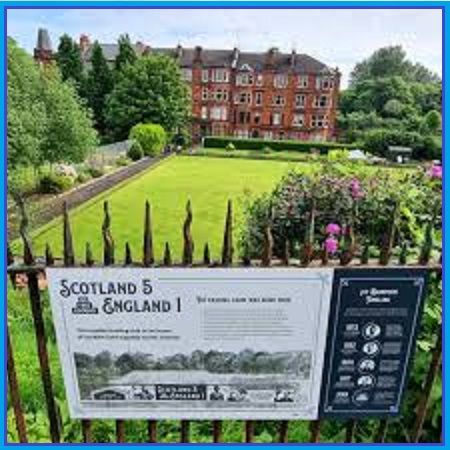
One is that you or youse, who read this, presumably with a love of the Scottish game and more to the point one that goes back to its very birth, indeed of it as a gift from this country to the World, dig into your pockets or pocket, collectively or individually, as a Patriotic Millionaire or just a patriot, to fund whatever Hampden Bowling Club needs now and for the foreseeable future. The bowling club would no doubt be happy to receive your donations, as would we on its behalf.
The second is that the football authorities, indeed the football industry, step in either do the same or find a parallel use for the site as it stands, one that allows the folk of the district still to roll shiny, black spheres over immaculate lawn but has a second purpose. And here is the crux in the form of a proposal.
The Scottish Football Museum is in comparison to similar others not bad as far as it goes. But that going does not reach back beyond 1945, certainly not into three of the four "Golden" eras of the Scottish game, 1874-1887, 1921-26 and 1935-39, and, indeed barely even touches the 1961-65 fourth. It would be good to rectify at least specifically the first three gaps and where better than where it more or less all started. The first Hampden, the "Bowling Club" Hampden, was opened in 1873. It staged its first international in 1878 before Cathkin, just 500 yards away, took over in 1884.
So the thinking is that the Scottish Football Museum (SFM), in essence the Scottish Football Association (SFA), for it holds the purse-strings, take on the proposed Hampden Bowling Club lease, funding the reparation of the dilapidations in full, guaranteeing the continuation of current use. But that is not all. It should also utilise in situ the historic buildings at the club to create a second exhibition space, an SFM annexe, solely dedicated to coverage, at the moment almost entirely missing, of Scottish, indeed also Diasporan Scots football, before 1939, when for much of the previous seventy years it had been the the World-leader. It could, dare we say it, even provide the opportunity for a new, purpose-built Scottish "National" Football Museum matching the German Football Museum in quality, housing what we now have and what could be created for the pre-1939 years and by being built up and over, by bridging the railway line just a mile from Crosshill station link physically and symbolically the first and the second Hampdens. SPHG, not only as specialists in the period to that date from as far back as you care to go but with curatorial expertise in its ranks, would be more than happy to cooperate in every way.
----------------------------------------------------------------------
Anwoth
- the oldest, known football ground in the World confirmed!
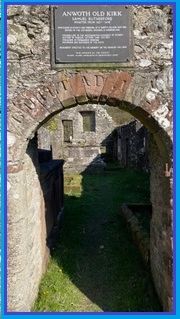
That football, although, of course, not yet the Association version, was played and in Kirkcudbright almost exactly 400 years ago has been known at the very least for almost one hundred and fifty years. The fact, albeit in passing, was restated in 1886 by a J.G. Barbour in his ‘Unique Traditions Chiefly of the West and South of Scotland’, reiterated on-line on The Modern Antiquarian with the original source being nigh on impeccable. It was to be found in the papers and letters of a certain Samuel Rutherford, Presbyterian Minister of Anwoth Kirk, now the ruined Old Kirk, and later a theologian of some distinction at St. Andrew's University, who arrived to take over the parish in 1627 and was appalled to find his parishioners playing the game on the Sabbath.
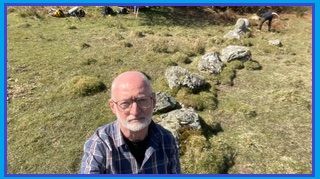
Now the site existed and still exists. The Modern Antiquarian visited it as just such and Barbour's telling or re-telling of the tale, to which can be added that more stones, fourteen in all, were laid, at the behest of Rutherford presumably, across the ground to stop the heinous practice, is fine but today we can do more, much more, now with the emphasis not on folklore but sport.
And that is exactly what Ged O'Brien, one of the founder members of SFHG, has done. He too located and visited the site but has done so with two experts from no less than Archaeology Scotland.
And they confirm firstly that the stone row has neither the form nor the nature of a medieval or post-medieval agricultural feature. Nor has it appeared on historical mapping as having any of those attributes, i.e. the rocks were not intended to mark a boundary, or croplands, or to help pen in livestock. And from analysis of the sub-soil that the stones were indeed placed deliberately across the ground,
“These small interventions showed that the stones were loosely set on an older ground surface and not in cut slots.”
Moreover, soil analysis suggests that the arrangement dates back some 400 years, to very much about when Rutherford voiced his objections.
So what does this mean? It tells us that a form of football was certainly played on a piece of identifiable ground in South-West Scotland two hundred and fifty years before Association football's rules were first compiled in 1863 in London. But it is what the new evidence implies that is still more important. Apart from the ground itself being roughly football-pitch shaped with dimension that are also about those of the small football grounds, on which early Scottish "soccer" was, often by necessity, played, there are the further implications. Anwoth's football was played at least weekly. It meant there was drawing on an established group of players, who turned up regularly. In other words it was organised. It was also known to be on a Sunday with work on Monday. That meant injury needing to be kept to a minimum, which in turn implies agreed rules to avoid such undesired outcomes. They might not have been written down. Who knows if the participants could even write. But they, the rules, were understood. And finally it looks as if it was a summer past-time, because it was played in the evenings and, if we know our weather, a flat piece of ground on top a Scottish hill would in winter be an unplayable bog. Unless, of course, they had early Astroturf!
PS: And this is how Television Francaise, the French equivalent of BBC 1, reported Anwoth in its coverage of the Women's Euro Cup Final. On BBC 1 and BBC Scotland there was zip, whereas on French TV the story is right out there as an "Historic Discovery" -GO.
----------------------------------------------------------------------

Sheffield -
more on the Story of Football Love/Hate, Freefall Certainly and Aided Resurrection
In other pieces on this site, in the light of the city's current claim to be "The Home" and not a home of the game, the role of Sheffield in the origin of Association football has been discussed in depth. In one the characters involved in its life-saving input in the 1860s have been recognised and praised, as has the rescue itself. In another the new personalities and their roles in what has to be seen as something of an 1870s implosion and then that in the 1880s of the Cleggs' in arresting and reversing the drift has been picked over in some detail not done elsewhere. And in a third piece the plain facts of club formation over the almost two and half generations from 1857 in Sheffield and in the other parts of England were spotlighted and directly compared with the same particularly from 1872 in Scotland as we contend our football and players fully took the game over and carried it forward. So now in a final piece, again with the baton of Scottish replacement of Sheffield in hand, we specifically look at direct result-comparison, at Sheffield's then seeming disengagement and the full nature of its 1890s comeback.
Today Sheffield football, at least in its top level echelon is in turmoil. Wednesday has been for some time one of the barely walking wounded of the English Football pyramid and both it and United, on writing, prop up the Championship South of the Border. Nor is it the first time that it has found itself in a similar position. One hundred and fifty years ago it was teetering on a similar cliff and once again one of its own making.
Yet the Yorkshire city has the oldest acknowledged and surviving football club in the World, the oldest derby match that is still played and, we reiterate, its contribution of sensible laws to our the modern game, albeit from without, is second-to-none. And It should, we repeat, also be recognised that without the morale support in the 1860s of Sheffield Rules football the London Rules game, the one that still forms the core of what we play today, might not have survived. Be clear, in 1866 our game was within one vote of turning off its own life-support and it was the guardians of the Steel City variant, who seem to have been pivotal in the switch not being thrown, who then, with the Youdan Cup, provided the template for the FA Cup, having already introduced the inter-city game and to facilitate their Southern brothers agreeing to play either to its own code and London's as circumstances required.
Moreover, in Scottish terms, with the coming in 1872 of Association football to Scotland, it was already by 1874 that Sheffield accepted to play city-on-city, North of the Border and by 1876 that a first Sheffield club did so club-to-club. The first inter-city encounter was in Yorkshire and a 2-2 draw with Glasgow, the initial inter-club ones when Clydesdale met Sheffield Wednesday, winning 2-0 and Alexandra Athletic would beat Sheffield Albion 1-0, both in Glasgow.
But that for Sheffield for the remainder of the decade was to be the limit of success. As each city took turnabout to host, Glasgow won every meeting, thirteen goals scored to three, the 1875 win probably the trigger for Peter Andrews to be "invited" to move South and the one in 1876 prompting a similar one for James "Reddie" Lang. And this was as in 1877 and 1879 Third Lanark first drew with and then beat Andrew's Sheffield Heeley, whilst in 1878 Alexandra Athletic was once more victorious away over Sheffield Albion and at home Lang's Wednesday lost to Rangers. In all it was ten goals to three.
Moreover, as the 1870s became the 1880s, in fact until 1888 Sheffield would win just one Glasgow game in nine, in 1884 at home. Its only real successes would be in the four seasons from 1880, when it faced Edinburgh for the first time, lost but then won two of the remaining three encounters so 50%. And at club level it would be much the same as far as it went. In 1880-1 and 1881-2 six matches took place. The Scots teams won the first five and lost the last but with an overall goal difference over the piece of twenty-six to two.
But with that it changed. Sheffield clubs simply disengaged for the foreseeable with one exception in 1886 and even then with a proviso. A team from the city did travel north for two games, a 3-1 defeat by St. Johnstone and a 16-1 gubbing by Dumbarton but it was Sheffield Caledonian, of which there is no other mention but must be assumed to be the city's own Scots club. Sheffield's Caledonian Society has existed since 1822. It seems unlikely that in the 1880s, as everywhere almost globally, a football club would not have emerged from its membership.
Yet all was not quite lost. In 1882 a first ever Sheffield club had reached the FA Cup semi-final. It was The Wednesday, Sheffield Wednesday. Then in 1890, albeit after a very noticeable gap of eight seasons, the same club was to go one stage further but only to lose very heavily in the final to Blackburn Rovers. Moreover, four seasons later the pattern was repeated. In 1894 Wednesday reached the semi-final, this time to be defeated by Bolton Wanderers. And, there was better to come in still shorter time. In 1896 the penultimate hurdle was cleared, and with ultimate success. Wolves were beaten 2-1 in the Final but again victory came with a proviso. Six years earlier the losing team had been all English, although hardly Sheffield at all. This time in victory it was with five of the eleven - Brandon, Petrie, Brash, Brady and Bell - all Scots.
Furthermore, the Wednesday success was soon to be replicated, this time by the city's new and rising team, Sheffield United.It had only been formed in 1889 with Charles Clegg as its initial president. It entered the FA Cup for the first time the following year only to be beaten in the Second Round 13-0 and by Bolton. And the pattern of early exit would continue to 1897-8 but in 1898-9 that would all change. Wednesday would lose in the First Round. United would trounce Derby in the final, 4-1.
But that was not all. Additionally, The Blades had joined the Football League in 1892, been promoted at the end of the season, wobbled slightly but by the end of 1896-7 had finished second to Aston Villa and in 1898 as champion and eligible in turn for a "Champion of Great Britain" clash with the Scottish league winner. That club was Celtic.
The match, or rather the matches home and away, took place in April. United won 1-0 at Bramhall Lane, drew 1-1 at Celtic Park and thus found itself, with the Cup-wins still to come, at the peak of the global game. Furthermore, unlike Wednesday it would achieve all with teams that were ten elevenths English, the only exception for the League-triumph being a single Scot, Bob Cain, at full-back and for its Cup successes no Scots, his replacement being Irish-born Peter Boyle. But here there are two caveats, the first that the Cup-run would almost cost it its league-status. United finished sixteenth of eighteen. The only consolation was perhaps that Wednesday was relegated. The second was Boyle was not exactly what he seemed. Although in all he would play for Ireland five times as a boy he had moved across the water with his family. In fact he had been raised and learned the game in Coatbridge, recruited to Steel City from Sunderland but via the town's Albion Rovers. So it was that even as resurrection was complete, with the Cup defeat in 1900 to Tottenham and a second and last Cup victory in 1901 as icing on the cake, one way or another Scotland had still been there or thereabouts.
----------------------------------------------------------------------
Nine Games that Made Football
- and the Tenth the Modern Game.
That the initial international in 1872 (1) was pivotal to the Scottish and therefore the World game is beyond doubt. It, as number one of the nine, was the first to have an obvious defined defence, the two full-back, two half-back box - 2-2 - that was to epitomise for a decade and half football North of the Border and much of Northern England as well. Indeed for half a dozen seasons it was ubiquitous in the game everywhere before new thinking in the form of 2-3-5 emerged from Wales, albeit at club level only, in a regularly-applied form, rather than the simply experimental one recorded earlier and elsewhere.

But in 1882 (2) that would change. The Pyramid, as the new formation would come to be known, would be employed, the second game of the nine, for the first time at a higher level and by Wales in the international encounter with England, where it would win for the first time, 5-3, with goals from an Owen, a Vaughan, a Jones and a Morgan, but one an English own-goal. We'll leave you to find out which one. And it would be followed, if not exactly replicated in 1883 (3), the third of the nonet, in the final of the FA Cup. In 1882 that final had been between Blackburn Rovers, the first participation of a northern club, and Old Etonians (OE). The latter had won; the last southern club to do so for almost two decades. Both had lined up at 2-2-6. But the following season with OE there once more the opposition was provided by the team from across the Lancashire town, Blackburn Olympic. And it had made preparations. First it had brought in from the Sheffield game as player/coach the England international Jack Hunter. Second it found a way to finance a stay by the squad for the fortnight before the match away from work and in Blackpool. There Hunter drilled into team-mates his way of playing, in a 2-3-5, with him at left-half, with a passing game in the middle of the formation and the two wingers supplying long cross-balls. Moreover it worked. OE were defeated, albeit by the best of just three with the winning goal coming only in the second half of extra-time.

And that seemed to be at least and for the moment a partial trigger. In international matches in 1884 (4), whilst Wales actually reverted to 2-2-6, Ireland and England used both it and 2-3-5, including for the English, in the fourth match of note, for the first time against the Scots; albeit they did with a Scot, a Gaelic-speaking Highlander, Stuart MacRae at centre-half and still lost, if only by a single and very early goal. However, 1885 (5) was to see partial become almost whole. At international level Wales, England and Ireland would all turn fully to it. And In the FA Cup final, a repeat of the previous year's between again Blackburn Rovers and Queen's Park, the English side, but with four Scots in the side including at centre-half, would employ it also and win. Only the Scots Scotland would defer. Both in the internationals and for the Glasgow team 2-2-6 would continue as the formation of choice.

And this would continue to be the case until 1887. In the sixth match of our set, the one, which also in 1885 (6) would see the re-emergence of Renton in beating Vale of Leven in the Scottish Cup Final both outfits remained traditionally set-up. And the same would be true the following season as the final was once more reached but the Dunbartonshire club was vanquished by Queen's Park. However, in the 1887 (7) showpiece, the seventh of our base nine, both Hibernian, perhaps unsurprisingly as an East Coast side, and even West-Coast Dumbarton had switched. It looked as if 2-2-6 was about to be confined to the past as, indeed, it would be but not in quite the way that might have been expected.
In the Renton Cup-Final teams of 1885 and 1886 James Kelly had played as a forward. Now in the 1888 (8) final, Renton there once more this time to face a 2-3-5 Cambuslang side and our eighth spotlighted match, he was notionally at centre-half in the what looked 2-3-5 also. But it wasn't. Kelly was actually playing in a new position of false-forward between and so behind the remaining five of the attack and in front of the still box-four defence. The formation was thus 2-2-1-5 with him as the link between the two, and also the team-pivot, a passer and header with a tackle.
And it worked unimaginably well. That season, before Kelly would for the next season, indeed the rest of his career, join newly Celtic, Renton after taking both the Glasgow Charity and the Cup Finals would go on first in the last of our base-nine to defeat the English Cup winners, West Bromwich, thus being declared "World Champions" (9), and then, having suffered reversal the year before, the following season's English Double-winners, Preston North End.
Which leaves the tenth game, the one that changed the World. The full development and implementation of the "Kelly" role, what was to become the specifically Scottish Centre-Half, took for a number of seasons. Impediments were notably amateurism both on- and off-field, the rapid expansion from 1888 of the English league-system and its demand for players and the continuation of the residence qualification for international players therefore eliminating Anglos. It meant for seven seasons many of the best Scots players were not available for their country, even as England played three what would today be considered just that in Goodall, Stewart and Weir. Results inevitably suffered. Indeed they would not revive until on April 4th 1896 (10), amongst others, Ned Doig, of Sunderland via Letham Angus, was back in goal and Jimmy Cowan from the Vale of Leven but by then at Aston Villa came in to fill Kelly's shoes, the first of three with then Raisbeck and Thomson to do so and begin the game's, the full Scottish game's transfer to the modern era. - IPCW
----------------------------------------------------------------------
Scotland's Footballing Eras
- the Golden Four and More
A very good team might be expected to win its home games and draw away. That is over ten games five and five so fifteen points over a possible twenty or 75% under the old 2-1-0 system or 67% under the present 3-1-0. Thus an exceptional team would by definition post better percentages, a a poor one less with an average one 50:50. So in terms of Scotland-England encounters, the game that for much of the history of Scottish football, particularly in the hundred years from 1883-4 of the British Home Championship, has mattered the most, there are three periods, three eras, when it was 33% or less, so very poor, 1889-95, 1947-1960 and 1966-1984, one when it was just poor, 1985-89, two when it was average, 1896-1914 and 1929-34, including one when it was better than average, 1896-1903, two when it was very good, "golden eras", 1935-1939 and 1961-1965, and two when it was exceptional, i.e. "burnished gold", 1874-87 and 1921-26.
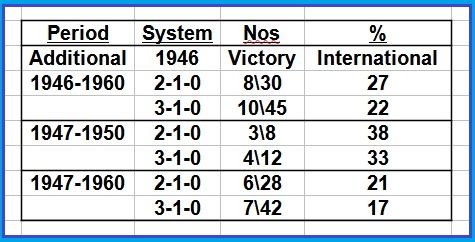
-

Worst of all at under 20%, despite the winning of the Victory International in 1946 and drawing the 1947 encounter, was the period to 1960 from that restart of the British Championship with the reason for what can only be described as abject failure on the face of it something of a mystery. The England team of the same period was also nothing to write home about as its results against "foreign" opposition that mattered show. In fact both teams were restored only with the introduction almost simultaneously of real football men, Alf Ramsay, and for us the much-underestimated Ian Mcoll. He, in spite of injuries to Caldow, Mackay and Baxter and the death of John White, would produce, with a points-ratio touching 70%, our last Golden Era.
But neither McColl/Ramsay's era, nor the period after it from 1966 to the abandonment of the British Home Championship in 1984 with at best 33% and then the five years of the Rous Cup with 37% or so are ones, which at SFHG are more than a passing concern.
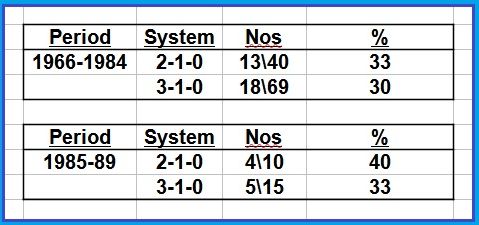
We leave post-World War II to the Scottish Football Museum to make whatever can be of it, instead, as ever, concentrating our efforts on pre-1939 with just the 25% from 1889 to 1895 on the face of it problematic.

However, even for that period there is perhaps a reasonable explanation, or at least a confluence of circumstances, three in all. First, in 1888 the Renton Revolution had just burst onto the scene and would have its impact on the Scottish and then the English games but not instantly and not without birthing pains; as the 0-5 defeat of Scotland at Hampden in 1888, after sixteen seasons England's first ever away-victory, would demonstrate. James Kelly was centre-half and held his man in check but there were clearly problems down the right-side of defence, where Queen's Park and therefore old-style and Arnott and Renton and new-style Kelso did not gel. And it was a problem that seems to have reoccurred in 1893, notably with a now still more age-ed Wattie Arnott at full-back, and even continue a little beyond.
Second, there was the creation Down South, also in 1888 and by a Scot, Braco's William McGregor, of the Football League, based on the Middle and North-West England. With it came an almost instant pressure and some ability to pay for better players, its adding of clubs, then a division and more clubs still and eventually in 1894 yet more with the southern English response in the form of the Southern League only increasing the demand. In 1887 there had been 80-odd Scots known to be playing in English teams. In 1890 there were more than twice as many, in 1893 three times and by 1896 the number had touched two-hundred and fifty. It had meant some of the cream and much of the emerging, younger talent was, with its residence rule, being rendered ineligible for the Scottish National team and it very quickly showed.
Third, the home Scottish game became uncompetitive. The Scottish League only started, indeed was almost forced as a reaction to South of the Border to start, in 1890-91 and official professionalism not accepted until 1893. And, whilst they to a degree stemmed the outward flow, the real breakthrough internationally came when in 1896, after the country's team had been 3-2 down to Ireland until the seventy-eight minute with the England match next, the SFA bit the bullet, the residence qualification being dropped and Anglo-Scots finally accepted for selection. Five were chosen. They included for the first time the nation's recognised best centre-half, James Cowan, importantly previously of Renton and now of Aston Villa. And Scotland went on to win 2-1 in front of a record 50,000 plus crowd.
-
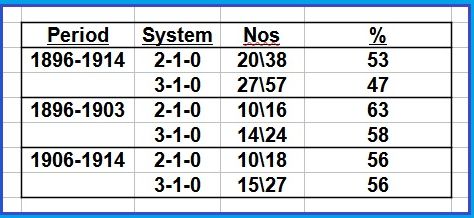
-
However, even with Anglo-induced revival and a pick-up from 1896-1903 with the likes of Bob McColl and/or R.C. Hamilton leading the line, Scotland was in truth to be returned for the moment to little better than an average team. Over the piece from 1896 to The Great War the points' ratio was only between 47% and 53%, albeit it was suppressed by two dips, first, at the turn of the century as Alex Raisbeck was found as replacement for Cowan and more smoothly between 1903 and 1906 Charlie Thomson for the Anfield maestro.
And this suppression by succession was to be repeated in the early 1930s but with two further twists. First, English clubs led by Arsenal tried to limit the call-up to international duty of non-England players to mid-week games only. It led in Scotland's case, with a couple of notable exceptions, for the best part of the 1931-3 and 1931-2 seasons to only those based North of the Border being available for call-up. However, the dispute was resolved by SFA President, Bob Campbell, status quo was restored and, in fact it made no different to results. One England game had been won, one lost.
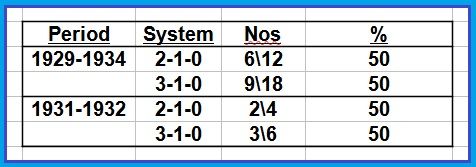
However, at much the same time the game was changing, at least in Britain, and with the introduction of the centre-back, moving away from both the Scottish centre-half and Pyramid models. At Ibrox specifically and therefore, at the time, also for Scotland 5ft 8ins Davie Meiklejohn was replaced by 6ft plus Jimmy Simpson but with effect. Scotland's ratio, in a second brief golden era further enhanced by victory in the 1935 Jubilee International, rose to the outbreak of the Second War not just to two-thirds but almost exactly the same as it had been in the early 1920s.
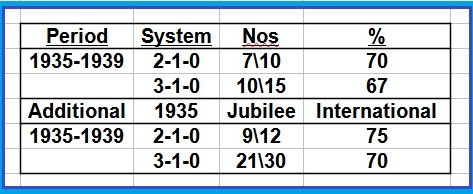
And at that time, a little over a decade earlier, with hostilities over, from narrow defeat 5-4 in the 1920 international despite away being 2-4 at halftime (Alex McNair, the ageing Scottish right-back and captain at thirty-five seemingly finally running out of legs) following an away draw and then a home loss in the 1919 Victory Internationals, Scotland for the rest of the next decade went on an extended run that would nevertheless include a surprise home-defeat in 1927 but also the 1928 Wembley Wizard response. The run itself would based on five attacking players of exceptional qualities - initially Andy Wilson and Alan Morton, then Morton still, the Alexes, Jackson and James, and the one Gallacher, who was eligible, Hughie. His namesake, Patsy, Scots-raised and buried and even featured in the Scottish Football Museum, but just Irish-born and perhaps the best of them all sadly was not.
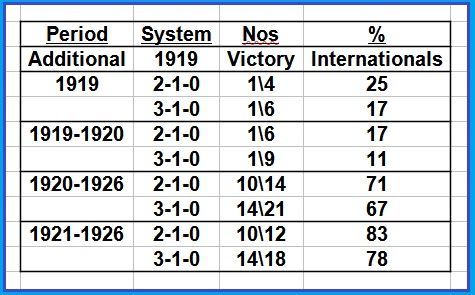
Which takes us back finally almost to origins of the game, at least North of the Border. After the tactical and organisational innovations of 1872's initial international and the first-ever failure of blending the following year, an experiment never repeated - the problem being the incompatibility of Scots players with Diasporan ones - Scotland was in the next fourteen seasons to defeated only once; in London in 1879, from a winning position and in controversial circumstances that, shall we say, today might trouble VAR.

The outcome would be an extraordinary ratio of 80%, one that should be the object of a great deal more national pride than is the case. It might even to be said to have made the game, not least by effectively largely sweeping aside in most of Scotland, much of England and globally the Rugby alternative, and deserve perhaps if not a museum of its own then full-coverage, missing almost entirely thus far, in the one we have and therefore in others abroad, where, despite obvious contradiction from the stats, the myth persists of the early home of the World's best football and footballers being England. - IPCW
----------------------------------------------------------------------
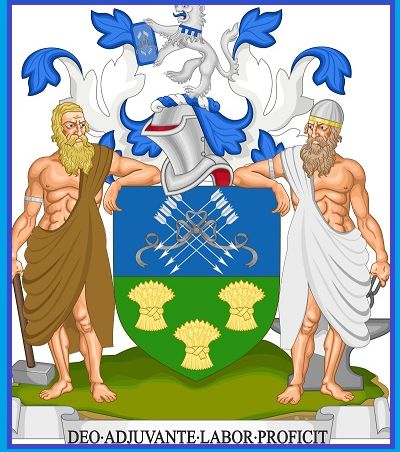
The Formation of Football
- A Calm Analysis of the Roles of Sheffield, wider England and of Scotland & Wales
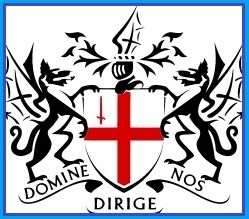
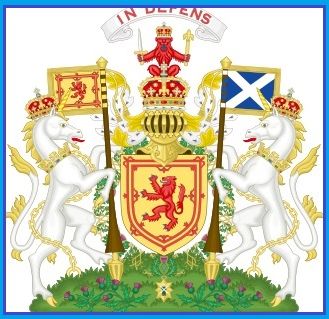
In 1870 Scotland had more or less the same population as London - about 3.2 million. London was about 15% of the English total and each was about 11% of the total for Britain and Ireland, at that time, of course, the whole of Ireland. At that same time Sheffield had a population of about 280,000, so just over 1% of that same English total but in 1850 that had been 160,000. In other words the city had in twenty years had grown by 75%. In comparison Glasgow in 1880 had a population of 550,000, incidentally two thirds greater than Sheffield's, having risen from 400,000 two decades earlier and therefore grown by one third. And finally the population of Nottingham and its immediate surrounds in 1860 stood at about 105,000, increasing to 120,000 a decade later and 154,000 in 1880, so an increase of a half.
These four cities are spotlighted because organised football, as against the folk or mob-game, came to them early. Sheffield and London were probably the earliest, in 1857. In Nottingham it was 1862 and in Glasgow 1867, with other parts of our country earlier still, certainly in 1865, probably 1862 and perhaps even 1852.
However, that is not to say that the non-mob game did not exists in and around all four before those date, just as it did elsewhere. Individual groupings, Public schools, even "clubs", playing a "football" game that was in part recognisable as similar to the Association one, the "Soccer" we know today. But that self-contained individualism began to change. In Sheffield it was in 1860 with the formation of Hallam F.C., with both it and the still earlier Sheffield F.C. remarkably still in existence today. It had already done so in London in 1859 with the arrival of Crusaders and Forest, later to be known as The Wanderers. In Nottingham it would be in 1863 and would take place in Southern Scotland in 1865 and in Glasgow three years later. And that change became carved in stone with the arrival of "competitive" football in December 1860, once more in Sheffield, with the first meeting of the Sheffield and Hallam, the former winning two-nil, although it has to be said that in 1858 in an inter-school match, so not totally club, Forest had already met and beaten Chigwell, in London otherwise in 1863, in Nottingham in 1864 and in Scotland, presumably in 1865 with five teams in existence in Stranraer, and in Glasgow in 1868.
And with competition came the necessity of agreement on rules-of-play beyond that of the simply in-house or in the Public-school case inter-house with that process beginning in 1862 with the second iteration of the "Sheffield Rules", with little known of Nottingham Rules except their existence and that Sheffield Rules were also employed, followed in 1863 in London by the "London Rules" resulting from the formation that same year of the Football Association, the starting-point of our football today, and Queen's Park in Glasgow initially accepting London Rules with one variation on off-side, since reinstated in 1925, then agreeing from 1871 to accept them in their entirely with Scotland as a whole following suite from 1872/73.
Thus from four centres at slightly differing paces emerged two codes of the organised game with in addition in both London and Sheffield initially patterns both off- and on-field that were similar. Both conceptions were at the initiation of men of similar background, gentlemen certainly but the main figures in each, Crestwick in Sheffield and Morley in London, both non-Public-school lawyers and actually both Yorkshiremen. Whilst Morley stayed in London by then he had been born and brought up in Hull. And between each city, perhaps as a result, there was from the beginning cooperation, with during the 1860s London, if anything, reliant for support and example and riding on Sheffield as the latter in terms of numbers of games literally kicked on doubling club numbers from 1861 with the former following on with the same only from three or four seasons later; this as Nottingham also looked to the Steel City as it quietly, similarly expanded it presence from 1869.
And initially it was football in Sheffield, "Sheffield Rules", not London and England's South East where the game was really to take hold. Between 1867 and 1871 the number of clubs by new formation in the former doubled and by 1874 doubled again, whereas London's increase in both cases was half as much. The result was the Yorkshire city's proportion of clubs in England rose from half to 60% as the London and its environs dropped near enough from 30% to 20%, (see the table below) figures which look even worse when using the, admittedly somewhat crude, comparison of one team per 2,000 Northerners to one per 70,000+ Southerners. On these bases it might quite naturally be assumed that Sheffield and its rules might sweep aside all alternatives, not least because both the East Midland- with the now expanding West Midland-game seemingly happy to accept the apparent inevitable.

Yet it never happened and for two reasons. The first was Scotland. On the last day of November 1872, St. Andrew's Day, Scotland played England in Glasgow. It was, with England expected to win so against expectations, a drawn-game. But it created considerable excitement, which added to that already resulting from Glasgow's Queen's Park having reached the semi-final of the very first playing of the FA in London's Challenge Cup, travelling to the English capital also to draw but being unable to find the money to make the replay. That along with some clever promotion of the game, again by Queen's Park notably in Dunbartonshire's Vale of Leven, led to the formation in 1872/3 of several new clubs in and around Glasgow, of the Scottish FA and by the autumn of still 1873 the creation of the SFA's own Challenge Cup.
The Scottish Cup's first playing would see fourteen participants, its next twenty-five and the one after that forty-nine. Growth was literally exponential. And in the wider country, until 1877 the Central Belt, the cumulative total of club formations would increase from seventy-eight in 1873-4 to five hundred and six in 1877-8. The game exploded into Scottish, indeed into British life. Already by 1876, even as the Scots game was exported to Wales, more than 50% of new clubs nationally had been or were Scots. In 1877 that figure was almost 70% and by 1880, as already the Scots game had also reached Ireland, almost 80%. Again in crude per head terms that was one club every 4,500 of us nationwide but, since the game had not really extended much beyond the Central Belt, probably more accurately one per 3,000.
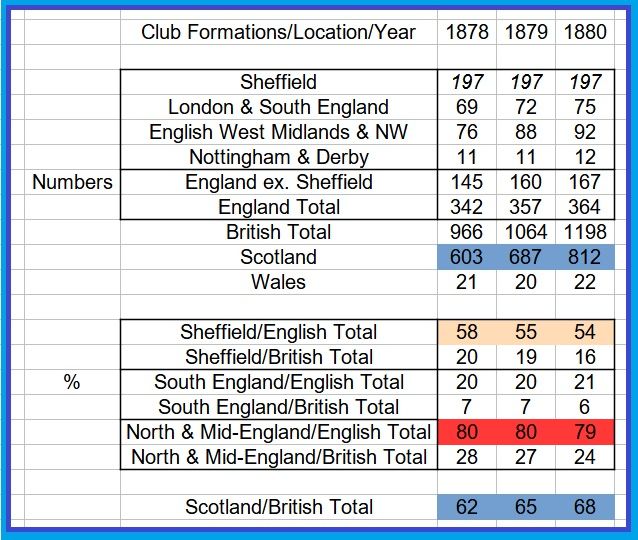
But note, even the Scottish 1/3,000 still does not compare, and by some margin, with its equivalent Sheffield. Moreover, the SFA and the Scottish game as a whole was in any case compliant, when it came to rules. Who is to say that had a decision Down South been taken replace London with Sheffield Rules Scotland would not have agreed,. This was particularly so as the differences between the two codes had and would narrow mainly by the adoption of changes from the latter, which leads to reason number two. By 1874 the leadership of both the Sheffield FA, founded in 1868, and the FA in London had changed. In both cases the lawyers had gone, replaced in the latter by Public-school boys and in the former by what even from this distance time-wise and across The Border look like "politicians" and social-climbers. The result was that the Sheffield leadership appear first to have bowed both politically and perhaps socially to London with the Sheffield clubs then arguing amongst themselves and thus weakening through schism their national positions off-field to the point of near irrelevance and eventually their on-field one too. The Sheffield-game failed to become the English one and with the Southern English variant failing repeatedly when faced by Scotland it was the still developing Scots-version and later the Scotch Professors that filled the void. In fact from 1877, it would appear that over the next decade and a half more Scots would be awarded England caps than "Steelmen". To be brutal Sheffield football from a position of pro-active and deserved pre-eminence in a game that within a generation would become world-wide had effectively tripped over its own feet the ball bouncing off to be immediately received, almost instantly controlled and then passed on globally and by Scots. - IPCW
----------------------------------------------------------------------
Remembering Andrew Watson
He wasn't the first, known Black footballer. That was probably Robert Walker, also Scots, his teammate in 1877 at Parkgrove F.C., having played for Third Lanark for the two previous seasons, including on the left-wing in the club's 1876 Cup defeat and as a trialist for the national team. The World's first Chinese or is it Dutch or Indonesian footballer, Tommy Marten, also played in goal for that same eclectic Parkgrove side.
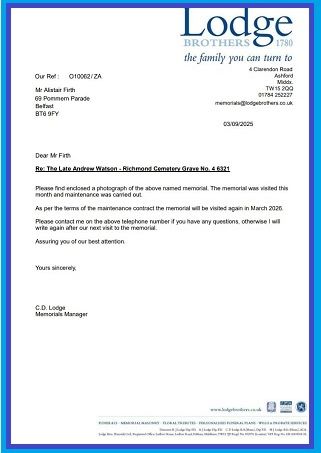
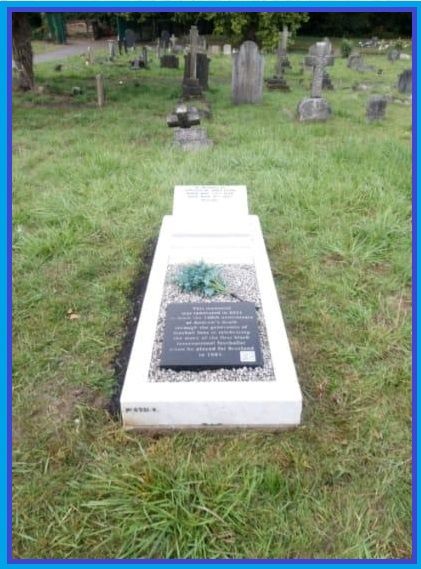
But, without doubt, Andrew Watson was in 1881 as then a Queen's Park player to become the first Black international and Scotland's and the World's first Black, national captain. He was rediscovered from archive photographs by Ged O'Brien, his grave, Section 4, Grave number 6321, in Richmond Cemetery in London was re-found by Andy Mitchell, the funding of the refurbishment of it was found mainly by Ali Firth of SFHG and he and we ensure it is properly maintained as shown by the letter and latest picture above (Note the condition of the surrounding graves). No help is received from the SFA, the Scottish government or from any other official or quasi-official sources of any country, creed or colour. It has and is still all done by us and from donation. See above. - AF
----------------------------------------------------------------------
A Newer, Better Historiography of the Origins of Football, perhaps?
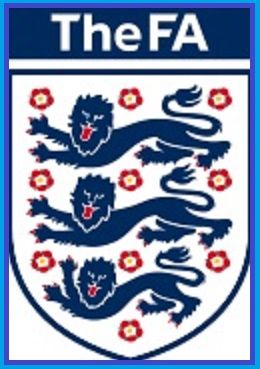
The Birth of The Game
- 1) the FA and the Posh-Boy Fallacy? Discuss.
On this web-site we do not write much about England. There are plenty of others, who will do it for us. But this piece is one of couple of exceptions, the second just below in this sextet of articles.
It has long been argued that Scotland as a whole had with regard to its earliest Association footballing years been gas-lighted by Glasgow, specifically its piggy-backing on Robinson's 1920 history of the Queen's Park club. The argument is not without justification. In fact it is quite correct. The Hampden club, having certainly gestated and given birth to the game in our country, was top of the playing pile for only the first five years and then one element only of the elite for just another twenty more with Robinson's account at best in part delusional.
But Scotland is not alone. England is too in its insistence that The Game there, indeed The Game period, was, with the exception, of course, of Rugby, the product of that country's major public schools (MPS), the Etons, Westminsters, Winchesters, Charterhouses and even Harrow. But it is provable less than true and here is how.
In the meetings of 1863 a minority of 13 clubs of 48 initially dissented from those who wanted mainly to handle the ball. One, and the only obvious MPS was Charterhouse but it very soon found reason to transfer its loyalties to the majority. And of those eight which eventually remained only two Wanderers and Crusaders showed some affiliation through Old-Boys to others of its ilk, the former to Harrow, the latter to Eton and Westminster. The others were one more minor school and ad-hoc groupings with Barnes F.C. leading what was in reality hardly even a pack.
And here is where it becomes interesting. Barnes had emerged from rowing and cricket and it would provide first one and then all three of the new association's early officers. The FA's initial President was Arthur Pember of the No-Names club, its Secretary Ebenezer Morley and, after the rapid resignation of Francis Campbell, its Treasurer James Turner of Crystal Palace. Pember was on election twenty-eight, a stockbroker born in London, who had been educated at home. He had attended neither an MPS or university. Turner had been born and lived most of his life in and around Croydon. He went to school at Streatham Academy before going into the wine-trade. He also did not attend an MPS. And Morley of the Barnes club was much the same except that he was a Northerner, born and brought up in Hull, the son and grandson of non-conformist ministers, again no trace of MPS and a solicitor to trade. All were gentleman, esquires. None was upper-class.
Moreover, when Pember resigned in 1866, Morley would take over as President, whilst as Secretary he was briefly replaced by Robert Willis, of Barnes, and then Willis from 1867 by new brother-in-law, Robert Graham, also of Barnes, who also took on from Turner the Treasury function. Willis was London-born but the son of an eminent Scots surgeon, also worked in the wine-trade as a sherry importer and had not attended an MPS. Graham was born in Cambridgeshire, had also become a stockbroker and had attended Cheltenham College, a PS but not an MPS.
In fact in terms of the major office bearers of the FA the first involvement of a product of an MPS would not be until 1870, seven years after foundation, when Charles Alcock took on both Graham's roles. Alcock had attended Harrow but even there was a caveat, in fact two. Firstly he was another Northerner, born in Sunderland. Secondly he had attended Harrow, the school which had rules to its football, a kicking not a handling variant, that were the most similar to the Association game.
And it would be the combination of Morley, Graham and then Alcock who would see "soccer" change from a sport on the point of disappearance in 1867, when only six were said to have attended its Annual General Meeting and dissolution was openly discussed, to one just five years later on a firm footing. By 1872 the first unofficial and then official internationals had been played, the London-based football association had about seventy-members, the FA Cup was up and running involving not just the South of England but Sheffield and Scotland and in Scotland itself the game was exploding. By 1874 when Morley stepped down the number of known clubs North of the Border had doubled in a year to about 150, England outwith Sheffield had 90, and its Cup competition too was up-and-running.
Thus there can be no denying that when, albeit with Alcock remaining in place, Francis Marindin, soldier but ex-Eton, took over the Presidency in 1874 Association football, indeed the FA itself with its now hundred or so members, was not only after it first decade in a good place but one created by non-MPSs. In fact it was there for MPSs to make a mess of, which they then did, both organisationally and in terms of PR based on class, at least in part reinforced as they were in 1877 by Alcock retaining the Secretariat but he being replaced by Arthur Kinnaird, ex-Eton as Treasurer. The result would be by the next decade a failure to understand the needs of the rapidly growing numbers of teams outwith London and South, and working-class teams to boot, Assistant Secretary, Lane Jackson's Corinthian antics not helping. Already by 1882 more than half the teams playing in the FA Cup came from north of the Watford Gap. By 1885 the paying by some of money above "expenses" to play had to be embraced otherwise there might well have been a break-away; exactly of the type that rugby was to see a decade alter. In 1886 IFAB was created, so power was split in theory four ways. And in any case by 1888 the Football League of only Midland and Northern, professional clubs had come into being not only as a separate entity but also power-base. Quite simply by 1890 with the resignation of Marandin and Alcock and the former's replacement by Kinnaird the "MPS FA" had lost many of the footballing levers of power, a loss that fifteen years later with the formation of the Amateur Football Defence Council, now the Amateur Football Association, the advent of FIFA and again failures to adapt then and since would compound the decline, with it, outwith a place at the IFAB table, in the period after resignation (for a second time) from FIFA in 1928 and no input into the first World Cup in 1930 becoming virtually total. - IPCW
The Birth of the Game
- 2) the Public School Myth and More
When talk turns to the origins and early development of Association football, especially abroad, the repeated story is that it emerged from English Major Public Schools (MPS) and the upper-class gentlemen they produced. For example the otherwise entirely laudable German Football Museum in Dortmund and even the FIFA Museum in Zurich have it as their narrative. But it is a myth. It is demonstrably wrong. And even in the decade and the half when products of those schools did gain control of the game's then overseer, the (English) Football Association, it suffered two major and one minor defeat in five years and once weakened was over the next twenty years simply passed over and twice. And here is the somewhat hardball explanation, in part for which we thank our esteemed colleagues in Sheffield.
That pre-Association footballs world-wide were played is undoubted but the sources of our current, Association game are British, note British not English. There was and still is throughout this island documented folk-football of the mob-mayhem kind. But we now also have in our own country what has been proven to be from at least 1627 the World's oldest, known field for more minimal and clearly organised, local, Sunday encounters. It is at Anwoth in rural Dumfriesshire so unlikely ever to have been influenced by the on-field antics at Rugby, Eton, Harrow, Westminster etc.
So what do we think happened and by whom to facilitate the first emergence of The Beautiful Game. The place was not the playing-fields of Eton or similar, even as the public schools, major and minor, codified their various games. It was Sheffield with the formation in 1857 from a cricket club of Sheffield F.C. It was essentially by Nathaniel Crestwick, locally-born, the son of a silver-plating manufacturer, himself a solicitor to trade, certainly middle-class, a gentleman even, but not public-school educated, and William Prest, York-born, Sheffield-raised, a wine-merchant and again not public-school, although one brother did go to Cambridge and two others were lawyers in London. Crestwick was twenty-six, Prest twenty-five.
And Sheffield F.C. would be followed in 1860 by the formation of a second club in the city, Hallam F.C. by John (Charles) Shaw from Penistone, fifteen miles to the north, who would work as a lawyer's clerk and then legal stationer so was again middle-class and did go to an, albeit local, public-school with it, Penistone, playing a variant of the Cambridge game.
Thus by 1863, when the meeting took place in London's Covent Garden that would see the formation of the Football Association and therefore the creation of the first iteration of Association game Sheffield's version was already up-and-running with the latter clearly taking an interest in the former. Sheffield maintain that a letter was even written from there to encourage what was a London minority to stay with the kicking-game and not follow the majority desire mainly to use the hands. Certainly, as the only obviously MPS, Charterhouse, its football first recorded in 1862, dropped away by the third meeting to re-join the manual advocates, Sheffield F.C. then made the effort to attend the subsequent, initial FA meetings and critically those in the years to follow, notably in the personages of its future Secretary, Harry Chambers, and then Secretary and Treasurer, William Chesterman.
And then there are the FA founders themselves. First President was twenty-eight year-old Alfred Pember, a stockbroker, a "gentleman" but home-educated. Secretary was Ebenezer Morley. He was a thirty-two year-old rower and cricketer, also a solicitor, but had been born in and grown up in the North in Hull, arriving in London in 1853 and qualifying there in 1854. And Treasurer was James Turner, twenty-three, who worked as a wine-merchant and once more had not seen a public-school. Moreover, even when there was a changing of the guard in 1867 with Morley stepping up to the Presidency, the brief Secretary had been the again non-public-school, sherry importing son of a Scot, Robert Watson Willis, before his future brother-in-law, Robert Graham, aged just twenty-two, not only took on his role but that of money-man, both for three years. Graham too was a stockbroker and had actually attended footballing Cheltenham College, but for just eighteen months and with that school only codifying its own game in 1871.
And thus it remained until 1870, so already seven years after foundation, at which point Morley remained in place but Graham was succeeded by Charles Alcock. Alcock himself had at twenty-four joined the FA Committee only in 1866, succeeding his elder brother, John. But here for the first time would there appear reference to a major public-school. Alcock would later write about his club:
"Just at that time (1859 on foundation of Forest Football Club) a happy thought occurred to two or three old Harrovians located in the north-east suburbs of London ...... to carry on the game of football which they had just had to give up on leaving school."
But there was just yet a caveat. The Alcocks were again not Southerners. Whilst their boys were at Harrow the rest of what was not an upper-class but a genteel family was in the shipping-trade at home in the North, in Sunderland, and did not finally come south until the mid-1850s.
It is Charles Alcock, who has been credited with the creation, firstly, of the FA Cup and of the representative International. But there were precedents, both pointed out by Sheffield as being Sheffield in origin. The first, competitive, knock-out trophy was the Youdan Cup, played for there by twelve teams in 1867. The initial FA Cup would have just three more but including Queen's Park from Scotland. And whilst the first representative match involving the London FA had been in 1866, it had followed on from one between Nottingham, played to its rules, and the Steel City in 1865. The London game was thus the second overall and moreover, whilst it was played in London, won by the capital and to the iteration of the FA rules adopted just six weeks earlier, it had been suggested by none other than Sheffield's William Chesterman. And Chesterman also captained and played, with both Harry Chambers and a John Charles Shaw also on his side, as for the opposition did Pember, Morley, Willis, Alcock and a certain Arthur Kinnaird of the Wanderers' club, said to be a newcomer to the game. In fact it can be argued that the year from the match in March 1866 to the FA Annual meeting in 1867, attended by only six clubs but also by Chesterman, was to be pivotal for the survival of an FA on the point of dissolution with Sheffield thus twice-over the catalyst for continuation, indeed salvation.
Ebenezer Morley would remain at the head of the FA until 1874, when he was succeeded for the next decade and a half by the Royal Engineer's Francis Marindin, who before the Army had attended Eton. Alcock would remain Secretary until 1895 but in 1877 his role as Treasurer would be taken on by said Arthur Kinnaird, a Diasporan Scot but also an Eton product. He had first joined the FA Committee in 1868, having been instrumental in the formation of Old Etonians (OE) in 1865-66 and/but with one important observation. OE had been the first of the major public-school teams specifically to take to the Association game. Old Harrovians, Old Carthusians and Old Wykehamists would significantly not be formed until 1876 and Old Westminster in 1880. In other words not only was off-field, public-school, i.e. upper-class, South English control of the Association game not in place before 1874-7 and done by infiltration not creation, on-field those public-schools themselves did not take to it until the same, which was by then a decade after its middle-class inception, agreed to have been in London, but with timely and crucial again middle-class contributions from the North, specifically Sheffield.
And nor from the start of the new regime would it go well, despite internationally i.e. against Scotland, with in 1876 only two of the English Eleven having been MPSs and just one from Oxbridge, those numbers to the obvious exclusion of others rising in 1877 to eight and five respectively. In 1872-3 the game had crossed the Border. By 1874 we "North British" were already drawing with or beating the "Saxons" and would do so, with one exception, for much of the next decade and a half. Moreover, whilst the number of clubs in both England and Scotland would expand, by 1874 the number of new formations in the latter was equal to and possibly already greater than the former and by 1876 the total entered in the FA Cup was already eclipsed by those in the Scottish Cup.
Furthermore, by 1881 even without the now enigmatic Sheffield the total once more of clubs in the FA Cup from outwith Southern England had equalled those from within it with a clear gap then emerging and continuing to increase, soon bringing its own problems. Simply put the attitude to sport outwith Southern England was different to London and its surrounds. In the Midlands and the North Association football at club-level had rapidly become a working-class game, which generated money; money that was one way or another being passed on beyond expenses to what were in all but name professional players. In 1883 Blackburn Olympics, led and coached by Sheffield-born shamateur, Jack Hunter, won the FA Cup beating amateur Old Etonians, Kinnaird and all. No English, amateur side has ever figured in a final since, indeed the next Southern team, professional or amateur, to take the trophy would be in 1901 and even then in special circumstances.
The Southern responses were three-fold, two of which fail, one only just and the second miserably, and one succeed. The first was the creation of an elite team in an attempt to prove that the amateur toff could beat the professional labourer at both international and club-level. Corinthian F.C. was founded by the then FA Assistant Secretary in 1882 by when already seven of the English national team were from north of the Watford Gap and just one from an MPS. And in 1886 with nine of its members and four Oxbridge playing as England it achieved a draw against Scotland at Hampden. But there was never a win. That would only come for the first time in a decade in 1888 with just four Corinthians and no Oxbridge in the team but eight from Midland and Northern clubs, with one of them a Scot, leading the line, John Goodall by name. This was as the second response had been in 1885 to try to ban paying to play but it had provoked such a back-lash that a North-South split was so imminent that the decision was taken by those in charge, albeit as a result now only nominally, to row back.
It might then have been thought that the problems were solved but not so. The financing of still wider-spread professionalisation created their own pressure for the clubs and it just three years later was the major contributory factor to the formation in 1888, always remember by William McGregor, a Scot, of the Football League. And with that an FA for fifteen years under the control of something of an upper-class/upper middle-class, MPS kleptocracy had, shall we say, a more plebeian rival for control of the game that it could not resist then and has failed to do so ever since.
But there had been and would be more. On the international scene there were now four home-nation Football Associations all originally playing to slightly different rules, which in 1882 had been by agreement standardised. But the English acceptance of professionalism in 1885 threw matters into the air once more. The Scottish game would not accept it for another eight seasons and initially objected to its still "amateur" national team playing a professional one, at which point the Belfast-based Irish FA stepped in. It effectively proposed what would in 1886 become IFAB, the International Football Association Board, meeting annually to discuss problems of this nature and to change or create new rules and acceptances. Each of the four home nations would have equal voting rights. Scotland lost its professionalisation argument but England lost overall control, would lose still more influence when in 1904 it chose at initially to ignore the foundation of FIFA and would do the same again when in 1919 it tried unsuccessfully to strong-arm that same but now expanded organisation into the expulsion as a punishment for The Great War of Germany and Austria.
And in the meantime back home the (English) FA would also lose direct and therefore effective control even of its amateur game, Oxbridge included. In 1906 the schismatic Amateur Football Defence Council, to be renamed the following year the Amateur Football Association, broke away from the FA and the two would not be reconciled until 1914 with in 1934 the notably mainly South England organisation becoming the Amateur Football Alliance and remaining to this day quasi-independent.
And what had and would be the English FA's response to all this, in fact its one success. It would white-wash, gas-lighting effectively the whole World into believing is was an ermine-clad triumph when it was clearly nothing of the sort. - IPCW

Sheffield
- a Home of Football
- from Cradle
to Crash and
Come-Back?
It is beyond doubt with current research both from the city itself and elsewhere that Sheffield, in the form of the doyen of British clubs, Sheffield F.C., was crucial and even pivotal to the creation, indeed preservation of the earliest Association and thus the game as a whole. No Sheffield, No Soccer might be a mantra in just the same way as is No Scotland, No Modern Soccer. And this was despite the fact that for the best part of two decades and half from genesis it seems to have continued to prefer, at least in part, and practice not the London but its own Sheffield Rules.
Yet it, the club and by default the city, was there if not at the very first step towards the London-based Football Association in 1863 then within a few months, perhaps weeks, urging by letter and even in person the minority who had chosen the game with largely just the feet, rather than the majority for hands plus feet, to remain steadfast. And whether it was actually a full member of the nascent Football Association or not it would from then be, a) at meeting after meeting in the form, it is said, initially of future Secretary, twenty-one year old Harry Chambers, significantly a trainee solicitor, as were both London's FA and Sheffield F.C.'s founders, b) in 1865 suggesting itself as the organisation's first, representative opposition, travelling from Yorkshire to London to make it happen, c) in 1867 in the form of former Secretary, William Chesterman, be there to provide that same organisation back-bone as it teetered on dissolution and then even d) arguably providing, in the Youdan Cup and pre-Alcock, the model for the FA Cup.
All this was largely off-field but also in its match-reporting there is evidence that not just Sheffield F.C. but the Sheffield game more generally provides early examples of passing, heading and position and a number of its rules and and innovations in equipment were incorporated into those of the Association game. Indeed it would still after 1870 continue to contribute similarly even as on--field success went missing and that local game would drive itself into a cul-de-sac; one from which it would not emerge for the best part of two decades, its place taken certainly on the playing-front initially by Glasgow, then by the West of Scotland and eventually by the Scottish game more generally.
And here is the evidence of the cul-de-sac. From 1872-3, the years of the successful planting of the Association game North of the Border, and for the next fifteen seasons Sheffield would produce, with the Clegg brothers, only seven England internationalists and really only two stars, both in the 1870s and early 1880s. It would take a decade from 1883 before another would be produced, and even he, Fred Spiksley, was actually a Lincolnshire-man. And of the two one, the fine winger, Billy Mosforth, would achieve only a single win over Scotland and even then in controversial circumstances, and the other, the defender cum half-back, Jack Hunter, would never have even that success in four attempts, in fact, be in the team in 1881 to suffer the worst ever defeat by the Auld Enemy and in eight representative starts for Sheffield against Glasgow see again just the one victory.
In part this situation was probably due to the Sheffield FA, formed in 1868, splitting after less than a decade and remaining thus for the next ten years, two thirds of its members accepting London rules and the remainder staying with the local ones, albeit differences were by then small. And that split may well have been a product of two factors. The first was in 1874-7 and onwards a change of guard at the top in the English capital from essentially middle- to upper middle-class and public school in 1874-7. And the second was before that in 1869 a stepping-back of the first President of the Sheffield FA, none other than Chambers, with from 1868 a year as Vice-President and then fourteen to 1883 as President for John Charles Shaw followed perhaps as early as 1873 and certainly from 1876 by William Dix as Secretary and then also Treasurer. And both seem, whilst clearly alienating emergent, local football teams, hence the split, to have developed a less apparently collegiate and in the end a more subservient relationship with London than had been the case. One Sheffield commentator goes as far as to say re. the mid -1870s, "It was quite clear by now that the Sheffield Association was tacitly in feudal submission to London."
And there was something else, perhaps even as a result. It was a gradual loss of impulsion, even self-confidence. It saw Sheffield teams be first beaten by Glasgow teams and second adopt the Scottish 2-2-6 formation, even importing prominent Scottish players, Andrew(s) and Lang, on a shamateur basis. And clearly and with worse results still, in parallel with much of the rest of England over much the same period, it was failing to match us Jocks tactically.
In fact it would not be until 1889-90, after reconciliation of the rift between Sheffield and Sheffield New under what would become the enduring figure of the city's game, Charles Clegg, that there would be a partial re-emergence. And it was also that year Wednesday, from outwith the then new Football League and with a largely local team, reached the FA Cup Final albeit being badly beaten. The club would not join the League until 1892, really not be fully back until 1896 when the Cup was actually won, but fielding a team that contained five Scots, Spiksley and just one Sheffielder, with for the city as whole the come-back arguably only truly completed as non-Scots but even then still mainly non-local Sheffield Utd. won that same competition three seasons later in 1899, was runner-up in 1901 and be champion once more in 1902. - IPCW
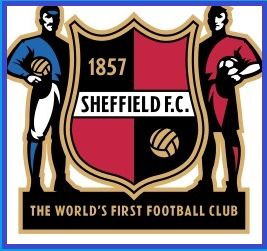
Sheffield Football 1870-88
- Cups, Confusion and Cleggs
The city of Sheffield has and is mounting an extremely competent campaign for UNESCO heritage status as The Home of Football. And home of a football it is, but not the Association game. Whilst Steel City was instrumental in, even pivotal to the genesis of the game we play and should have been at the forefront of its on-field advancement, it never happened, its erstwhile place taken, and with considerable aplomb, not by Southern England, as historically claimed, but by Scotland and then the Scottish Game, now essentially the World Game.
So the question is why did it, or rather why didn't it happen, the answer, one carefully avoided, even somewhat obscured by the Sheffielders themselves, that when it mattered, having had a unified face, they descended to arguing amongst themselves for the best part of a decade and half and with an explanation as follows.
In 1876 the Sheffield Football Association announced "following the example of London (note London not English) and Scottish Associations" the inauguration of its Challenge Cup. The Birmingham Association did much the same thing at the same time. Its competition, the Birmingham Senior Cup, still played for annually to this day, would have in that first season all sixteen of its members taking part. In Sheffield there would be twenty-five of twenty-six, Endcliffe seemingly the exception. The games would be to local rules and in each case not the eleven per side of London and Scotland but twelve and on the same day, 10th March 1877 The Wednesday would win Sheffield's first version, the final refereed by its association President, John Charles Shaw, and serendipitously Wednesbury Old Athletic Brum's.
All seemed well but in Yorkshire it would not stay so for long. In-fighting would erupt. By the following season there were two associations and three cups, the existing Sheffield FA Challenge Cup (ShFACC) now joined by the rival Sheffield New Football Association Challenge Cup (ShNFACC) competed for fifteen other clubs and a Non-Association Cup competed for by six more, so forty-seven teams in all. Moreover, whilst the last of the three seems to have existed for just the year, the half-dozen clubs involved joining the New Association taking it to twenty-one members, the ShNFACC continued to be played for until 1882 and the ShFACC until that same year when it morphed into the Hallamshire Challenge Cup to 1887 and then from 1888 to 1900 to The Sheffield and Hallamshire Senior Cup.
And behind all these iterations and changes is a tale essentially of almost collapse and, if not then full, at least significant recovery. And it starts in 1872. That year the England team in the first ever international included as a forward just one Sheffield man, John Charles Clegg, aka simply Charles Clegg, soon to be a qualified solicitor, like two of the three football pioneers in the city. However, it was to be his only cap and not a happy experience. As he would be later quoted, having hardly had a pass or therefore a kick,
"Some members of the England eleven were awful snobs and not much troubled about a 'man fra' Sheffield."
Yet the following year in the same fixture, more or less filling his shoes but in retrospect perhaps an exercise in (further) window-dressing, would be his younger brother, William, also a future solicitor, winning the first of his two caps. The second would be in 1879 against Wales and a year before at the age of twenty-seven he retired through injury. Charles had retired at much the same age in 1878. But both would remain in the game. Charles would initially become a noted referee, William President of Sheffield Wednesday and a Vice-President of the Sheffield Football Association, where all was clearly not well. The three Cups of 1877-8 and the continuing duo of Cups and two associations demonstrated that. And there might have been personality-clashes and even political rivalries. After a first few years from foundation in 1867 of apparent calmness at the Sheffield Football Association under pioneer William Chambers, Shaw of Hallam F.C. had taken on the Presidency in 1869, Chambers reverting to solely Secretary of Sheffield F.C. Then, as we understand it in probably 1873, Shaw was joined by William Pierce Dix as Secretary and then in 1876 Secretary/Treasurer. Dix was an accountant. Both were politically Conservative with a big C. and appear to have been social-climbers. Shaw was a man, who had inserted a Charles into his name when originally it was not there. Dix later personally hyphenated his surnames. And given those possible stand-points and attitudes it can be seen how the pair might well have thought they could get on well with the London FA hierarchy from 1877 of Marindin, Alcock and Kinnaird but might have appealed considerably less to those from across the whole social spectrum playing the game at their hometown clubs.
The result was breakdown and it is unlikely to have been coincidence that first in 1878 the non-association clubs joined the Sheffield New Football Association and not their Sheffield Football Association and the two rivals Cups, if not yet the associations, merged in 1882 but only as Shaw stepped down, eventually to leave the city for Birmingham for good. And at this point it appears Dix may have held the fort for another year before he too by 1885 was replaced, in time left the city also for Birmingham but did in the end return. After-all he had in 1878 married the Cleggs' sister. And his direct replacement was the politically Liberal Charles Clegg.
It may have been that it was just expediency with Shaw and Dix seen personally as the problem. It may even have been something of a political coup. But whatever the truth with Clegg in place by 1887 resolution was to be achieved. The two associations were re-merged as the Sheffield and Hallamshire FA, the cup from 1888 to 1900 was renamed The Sheffield and Hallamshire Senior Cup and tranquillity was restored such that Sheffield United was founded in 1889 with Charles Clegg as its first President. Furthermore, The Wednesday, after the waste of the best part of two decades when Sheffield had more or less disappeared from the British footballing map, reached the 1890 FA Cup Final, although the game was lost, returned to win the 1896 Final with United doing the same in 1899, tasting defeat in 1900 but achieving victory once more in 1902. And, as for the Cleggs, William would go on to be Lord Mayor, be knighted in 1903 and be called the "uncrowned king of Sheffield" and Charles would follow with a knighthood in 1927, having been Chairman of the Football Association, the "London" Football Association, from 1890 and its President from the death of Arthur Kinnaird in 1923. - IPCW
The North-East English Game -
The Start and Rise
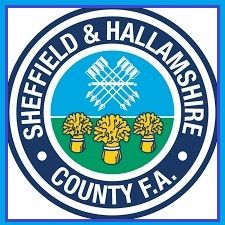
On this site the increasingly obvious, pivotal role Sheffield played from 1857 and in the decade of 1860s and early 1870s in the development of football, both through its own Sheffield Rules and of the Association game, has already been explored and will continue to be so. And so has and will be the, if not quite collapse from within and fall, that cause it to spend the last half of the same 1870s and most of the 1880s in first a considerable stutter at least and then only gradual recovery.
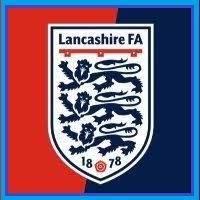
And now we turn our attention to the other area of England that would have a similar role but by fifteen years later, i.e. North-East Lancashire. The Lancashire Football Association was formed in 1878, by clubs mainly from that smallish, specific area of the county. But football there, outwith the folk-game and not yet the Association variant, had been around since at least 1865. That was the year when a quartet of mill-owners sons aged from eighteen to twenty-two came together to create what might be called the "Blackburn-Rules", said to be a mixture of those from Harrow and the Eton Field Game.
And the arrival of Harrow's rules was to replicated in 1870 in Darwen with the formation there of its cricket and football club and also in 1871 at Turton, north-east of Bolton. There John Kay, sixteen years old and fresh from the school, literally teamed up with twenty-six year old Blackburn-born, local national teacher William Dixon to form a club that inevitably require working men from the village to give the numbers. And it seems to have been the first to have in 1874 turned to the Association game, although there is a hint of a slightly earlier game in November1873 between Blackburn Ramblers and Blackburn Brookhouse and Church by Accrington would do the same that year too, as would Bolton Wanderers. Darwen would not do so until 1875 as also in Blackburn there were the foundations of Rovers and Witton. Eagley F.C., in a village just a short distance from Turton also came into being that same year.
In fact 1874 in the quadrilateral formed by Blackburn, Padiham, Bacup and Bolton no fewer than eighteen clubs had been formed by 1876 and twenty-six clubs existed in 1879 with Bacup and Oswaldtwistle being the last. And as confirmation In 1878 at a meeting in a pub at Bromley Cross just south of Turton twenty-eight or twenty-nine clubs had been founder-members of the Lancashire Football Association and twenty-four had come from the area.
So where does the much discussed Scottish influence in Lancashire's North-East fit in? The answer is that, whilst Bacup was formed by two Scottish brothers, the Rankines, said to have played for Vale of Leven but more likely to have done so in Renton, the story of its arrival had probably been got back-to-front. In 1875 at the age of just twenty-one Darwen-boy William Kirkham, a textile colour-mixer to trade, seems to have taken himself north to Glasgow for work. It was also the year Partick F.C. had been formed, one of half-a-dozen or so clubs that had sprung up that year, and Kirkham, with no known indication of previous involvement in the game in Lancashire, joined. In fact in that summer he had been a founding member, was in the team and with Darwen/Partick already playing their first cross-border fixture on 1st January 1876 with him as the obvious link.
It would be the first of seven such trips South with Partick only losing for the first time in 1880 by when at least two of its players has been recruited to the club and one, Fergus Suter, to the English game more permanently. Both had made their moves in the winter of 1877, James Love first as he turned twenty-one himself and faced business bankruptcy at home, with Suter following on having lost his work in Glasgow as a stonemason and also about to reach the then age of maturity. The stories of both men have now been uncovered and told in detail. (See: Scottish Sports History). Both were paid to play. That, one way or another, is certain, although curiously it was not, seemingly by omission, actually against the rules. The FA in London and thus in Lancashire would not make it so until 1882.
And at this point it might have been expected that there would be something or a flood or at least a flow of Scots player being attracted to the Lancashire game. In fact, if anything, the numbers dropped until starting to climb once more in 1882 as Preston began to recruit, its clubs being formed from 1880, and the Bolton area, with a flurry of clubs founded in 1878, followed suit just as the other teams in the quadrangle also stepped up their demand. In 1884 the Preston area had fourteen Scots recruits on the books, fifteen in Bolton and the Calder Valley from Blackburn to Burnley, founded in 1882, thirty-one.
So the question is why and there are perhaps three reasons. First, between 1876 and 1884 team numbers had increased two-fold and a half. Second, in 1876 there had been no North-West teams in the FA Cup, in 1877-8 only Darwen, it in 1878-9 reaching the quarter-final only to be beaten by the eventual winners, Old Etonians, away in a second replay. But by 1884-5 there were twenty-four and Blackburn Olympic had already taken the trophy. And then, third, there was the proselytising of James Gledhill. In the Darwen team on January 1st 1879 he was, aged twenty-four, there as a centre-forward. And he was there again in 1880 as Darwen won the Lancashire Senior Cup with Suter at full-back.
Born in 1854 in Manchester with an English father, a coach-builder, and a Scottish mother Gledhill had been brought up by Preston, began as a Student Teacher, had gone to London to study medicine, there known to be playing football, and in 1878 returned north, joining Darwen, where also newly-arrived Suter and Love were team-mates. However, his next move took him to Glasgow to train as a Surgeon and there he turned out for Partick, after which on returning to Lancashire in 1883, now aged almost thirty and perhaps his playing days over, he began to tour Lancashire lecturing on how he thought the game should be played. And the die was cast. Given his time in Scotland in the first golden era of the game North of the Border it is unlikely to have been any other way than ours.
Jackson, N.L. and Sommerville, G.
- the "Gent", who almost stole the Game from the working-man
and the Draper, who snatched it from his grasp?
It looked bad. For the first time in a decade Scotland against England at home was in real trouble. The game was at the second Hampden, now Cathkin Park, in front of some eleven thousand on-lookers and in the 37th minute Tinsley Lindley of Nottingham Forest but also Cambridge University and Corinthians had scored for the visitors. Moreover, the home-team was down to ten, one of its centre-forwards pairing, Joe Lindsay of Dumbarton, had been forced by an injury he was carrying to go off in the 65th minute, leaving the full burden of the central attack with the other, George Sommerville, ex. of Rangers and now of Queen's Park. But in 80th minute, Scotland actually said to be playing the better, the ball emerged from "scrimmage" and Sommerville struck with one of the "daisy-cutters", for which he had become known. The referee that day, in the stand as was the way at that time, was Alexander Hunter from Tiverton in Devon but Secretary of the Welsh FA, with a mother born in Scotland and father, born in Liverpool but a Presbyterian Minister. And the on-field umpires were probably Alexander Stuart, the SFA Vice-President and certainly Nicholas Lane Jackson of Corinthian F.C., Assistant Secretary to the Football Association and no doubt raging. And the reason was that afternoon the England team had included four players, who were former pupils (FPs) of major English public-schools, five from Cambridge University and nine from his own, "elite" club, Corinthians. It should have been the culmination of a project that N.L. Jackson, "Pa" Jackson, had begun in 1882 but because of a Scots draper, of whom we have no known photograph or grave, he would have to witness its ultimate failure.
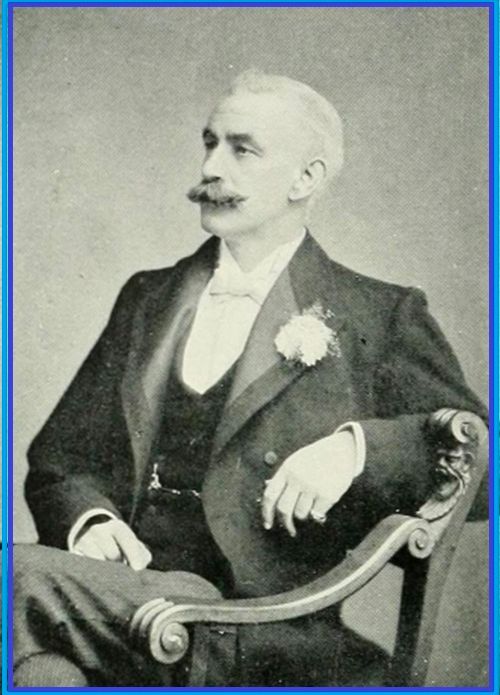
"Pa" Jackson was, shall we say, an interesting man, much lauded, even mythologised in Southern English, football history and, therefore by some in World football. The Northern English view of him is considerably less complimentary. The late and esteemed Sheffield historian of the game, Martin Westby, was scathing and not without reason, whereas the Scottish view can afford to be dismissive and should be just that. The unfolding of the Scottish game never quite allowed for classist gas-lighting to take hold, although some tried.
Jackson was said to have been born in 1849 in Hackney in London, read Hoxton, and grew up in Shoreditch, the son of a mother from Enfield and a father, also N.L., from Devon, who having moved to London was a Cattle Dealer and later a "widowed" publican in Lambeth, although his wife is elsewhere to have survived him. But no matter.
Moreover, Jackson Jnr. would marry young, at nineteen, he recorded too as a publican, his bride, Mary Ann or Marianne, also nineteen already five months pregnant. Thus he at under twenty already had a family, had certainly never been to any form of public-school or university but was clearly ambitious and very capable. At twenty in 1871 he was a Land Steward just west of London in Isleworth. At thirty in 1881 he was recorded as an Editor, living now in Finchley and then progressively be a Newspaper Proprietor and Journalist, an Author and Journalist and by sixty was living in Buckinghamshire on private means. And in the meantime he had involved himself in football, tennis, golf and curling and in the process transformed himself very much into a "gentleman".
However, as regards the football there are doubts about the truthfulness of his account of his involvement, at least in early part. Westby found little to back up claims of involvement in the pioneer club, Upton Park, which played in West Ham, so East London. He did find them with regard to North London's Finchley F.C. from 1879, aged already thirty, as captain and acting Secretary, possibly also having founded it in 1877. Then in early 1879 he served as an umpire with Charles Alcock in a match involving Old Etonians, so presumably Arthur Kinnaird. Thus he now had connections and that would lead to him being elected to the committee of the FA plus being between 1881 and 1883, under Alcock, its Assistant Secretary. And it was at that same time in 1882 that the London Football Association was formed and, by him, albeit by his own account and with others known to have been involved, Corinthian F.C., the Corinthians.
His reason for it would later be clearly stated.
"I founded the Corinthians because I did not like the way Scotland kept beating England in the late 1870s and early 1880s."
although it is not obvious whether it was because he did not like getting beaten, did not like Scots or a combination of both and would later be followed other interesting asides. For example:.
"Amateurs usually supply better backs than professional. They learn to kick cleanly and well at school, and generally show better judgement in placing the ball to their forwards than the professors (Scotch Professors?), who do a lot of vigorous charging and hard wild kicking, but are not a rule finished players."
and the following,
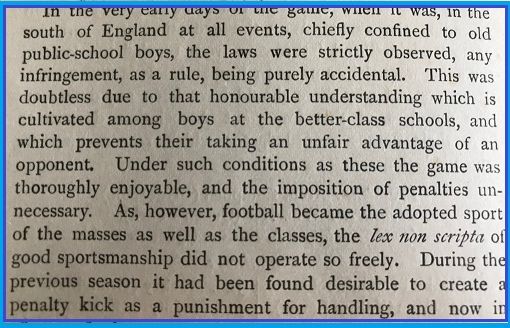
And there were clearly tensions, north-south and others that would soon emerge. He would also write,
"There was a great desire on the part of some individuals in Lancashire to get the headquarters of the Association transferred to Manchester. They (who they, exactly?) knew that Mr Alcock could not act as secretary if this was done, and therefore hoped to acquire the coveted position for one of their leaders. Fortunately, the Midland clubs and those in the far north held aloof from these intrigues, and thus prevented them from being effective."
And in 1884 he would be placed in charge of investigations into Preston North End, as it was accused of "offering financial inducements to attract Scottish players". It was that Scottish thing again with the club, of course, doing exactly as accused, as had been and were many of the clubs from the North and the Midlands. Indeed it and paying to play had not officially been outlawed until 1882 so until then it had been legitimate. However, Preston was as a result disqualified from that year's FA Cup, hard-line anti-professional recommendations were adopted for 1884-5, at which point the Northern clubs rebelled, threatened schism and by March, now with the support of Jackson, ever, it seems, the pragmatist, professionalism was accepted.
However, by that time he had and would have other problems, both concerning the Corinthians. Eventually it would again be about money. In 1893 questions were being raised about the expenses the club was paying, which were hefty, and what difference there was between them and payment for working-days missed or even straight wages with the answer being little or nothing apart from a large measure of entitled hypocrisy. But first there had been the question of the effectiveness over what had been a five-year, Lane Jackson-inspired attempt at what was at the very least, as quoted, a class-based, elitist philosophy of competence, even innate ability. In other words an upper-class footballer would by genes and nature always be superior.
In 1882, his first opportunity, against Scotland, the game that mattered, two Corinthians played, one former pupil and no Oxbridge. In 1883 it was four, three and two, in 1884 three, one and one. And in 1885 the numbers were two, four and four with a net no change as measured by wins even in the home ties. And the result of it all? It was by 1888, by the look of it, the abandonment of the try-on entirely.
That year England beat actually Scotland for the first time for a decade but there were special circumstances of Scotland's own making. And it was done with admittedly five Corinthians, but two were Northern invitees, two FPs, no Oxbridge and crucially eight players from outwith the South, including the Scot, John Goodall. Moreover, the following year, 1889, it seemed the old pattern might be resumed, Scotland winning in London against an England that now had two "Scots" in its team, five Corinthians, but notably four in what was obviously a very leaky defence, four FP, all in that same defence and one from Oxbridge, also in the defence. It clearly wasn't working, despite from 1883 to 1890 fifty-two of the eighty-eight caps awarded against Scotland being to the "elite". In fact the next England win would not be until 1891 and with one Corinthian and FP, the goalkeeper, and all the outfield players, including Goodall once more, seasoned professionals from Midland and Northern club. The experiment in neo-applied eugenics was over, even as the process of highly-effective gas-lighting began, continued by Jackson from 1895 from his eventual position of Vice-President of the FA.
So who was this man, who unknowingly was to sink the Jackson-ship. George So(m)merville was born in the Lanarkshire village of Forth in 1863. His father was a thirty-five year old draper, who had been a merchant, a cloth merchant and would become a clothier. In fact George would train as a tailor and become a draper himself but by then the family had move to Uddingston, working and living close to the village-centre and its football ground.
And it was probably with Uddingston F.C., which had in 1882 dropped from senior to junior status, that he, as a teenager and a centre-forward seemingly of the robust variety, began. That was before, according to the inestimable Andy Mitchell in his The Men Who Made Scotland (MWMS), turning out for neighbouring Hamilton Academicals for two seasons from 1883 and then in January 1885, not long after turning twenty-one, being recruited by Rangers. It was in a phase when players were both arriving and leaving that club in steady streams, the better ones going largely to Queen's Park, presumably for better "expenses". Indeed, Sommerville was to prove no different. After a successful ten months at the then Kinning Park, soon noted for both his dribbling and shooting and scoring regularly including against The Spiders, he made exactly that move.
At Hampden he was straight into the first team in a Cup-win over Partick Thistle in October 1885, he aged just twenty-two, in the season where Queen's Park would retake the trophy. In that final he opened the scoring in ten minutes and sealed the game with a third in eighty-fifth minute. That was in February 1886 and just six weeks before he was briefly to swap the hoops for the blue.
Sommerville was to spend three seasons at what is now Cathkin Park, interspersed, according to Mitchell with a period back at Uddingston. In fact it was a new team that in 1887 had reformed as a senior team once more. It is therefore understandable that he chipped in to help. But he returned to Hampden this time to a team, which was beginning to struggle and to comments that in 1886 in the establishment 'Scottish Referee' had remarked on "his superior shooting power" but by 1888 changed to saying the "he was a good man until the laudation spoiled him". It was harsh, quite possibly unjustified, and there were quite probably reasons.
In 1888 the club neighbouring to Queen's Park, Battlefield, was on the brink of collapse and its foremost player, William Sellar, who also had QP membership, moved across. He had been the Scotland centre-forward before Sommerville in 1885 and the one after him in 1887 and 1888, would eventually win nine caps, seven against England with appearances also in 1891 and 1892, as captain. But he would never score a goal or, apart from 1887, be on the winning side. Then there was also the emergence of Jamie Hamilton. In 1888 he was nineteen and would eventually win three Scotland caps. Moreover, Sellars was a club-able man. On retirement in 1894 he was immediately elected President of Queen's Park and sat on the SFA Council. It would be hardly surprising that Sommerville could have felt both pressured and slighted, with what he may have considered an inferior player or players, certainly at centre-forward, being preferred to him. Perhaps he spoke out-of-turn and, in any case, he had other things going on. His father about to turn sixty-five and there was a business back in Uddingston to take over and the local football club valued him. Thus he returned home, played for his hometown club until 1891, bringing it up once more to a good standard, retired at twenty-eight in 1891, in 1893 in Aberdeen married a girl, Annie Smith, from the city and settled down to the rest of his otherwise un-lauded life.
George Sommerville would remain in Uddingston for the rest of his days. By 1901 he was a Traveller, a traveling salesman, with two children, both born locally, in 1911 a Commercial Traveller in Colour Printing, in 1921 a Manufacturer's Agent and on his passing in 1929, aged sixty-five, be an Advertising Agent, staying at "Cranley", Brooklands Avenue in the town. He would be survived by Annie and by "Pa" Jackson. His death would be in 1937, by which time the era of the footballing amateur and Corinthian in the England team had literally just come to an end, the last being one-cap Bernard Joy just a year earlier in 1936.
----------------------------------------------------------------------
And a more accurate history of the Scottish Style and Game, too?
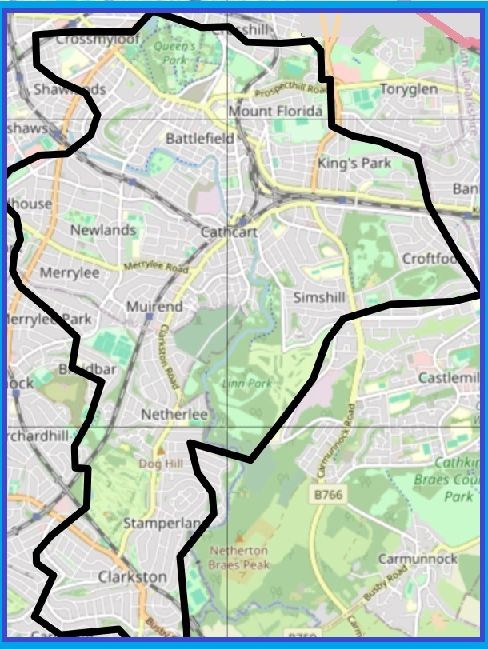
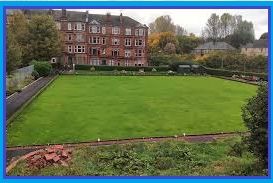
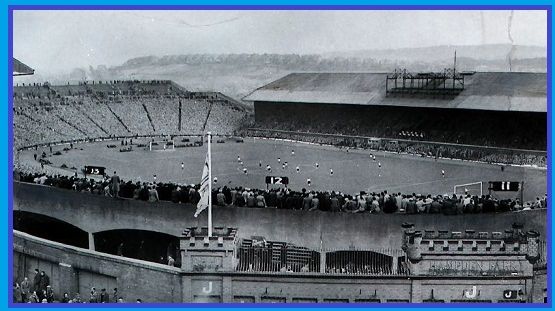
Cathcart - the Cradle of Scottish Football
(and Uruguayan, a bit of English and Argentinian and almost Brazilian)
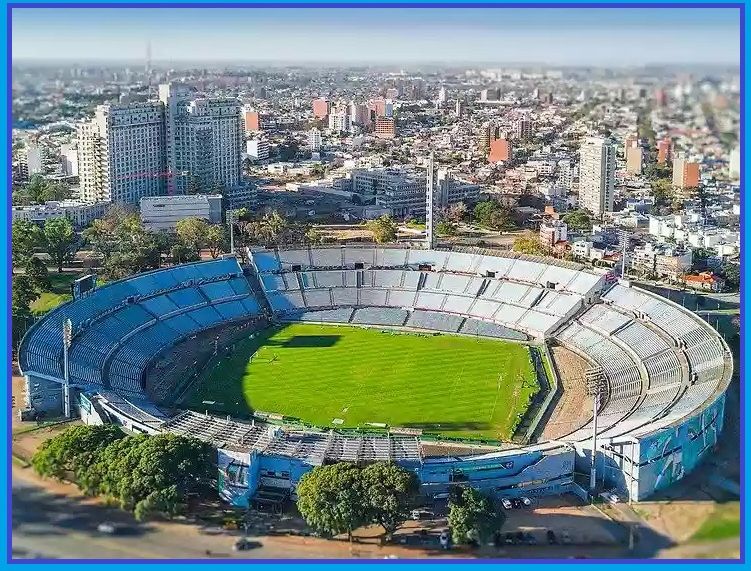
Cathcart, once in Renfrewshire, now in Glasgow, is both a village-suburb and a parish. This piece incorporates the former but is about the latter, from almost the Clyde in the north to almost Busby in the south, Linn in the east and Crossmyloof or so to the west, and the role it has played in cradling football, our football, Association football in Scotland, and creating it elsewhere, the former so obviously continuing to be played today, the latter having been pivotal to the global game.
The birth of our football in Scotland, not the Scottish game itself, in reality took place on the last day of November 1872 and at Hamilton Crescent in Partick, also then not in Glasgow. That would require another forty years. And it was there for a reason, one quite possibly decided upon, indeed hatched at the Queen's Park Football Club in Cathcart but needing to be implemented elsewhere because the parish had no suitable venue; at least not quite yet. The first Hampden Park, in part now Hampden Bowling Club, would not be opened until the following year and become an international ground only in 1878. Although in 1876 it did host the replay of what might rightly be called the Cathcart Cup Final between its owners, Queen's, and its nearest neighbours, the now defunct Third Lanark, its grounds, the first Cathkin Park in Crosshill and just half a mile away. Indeed, the second Hampden Park, in what we now call Cathkin Park after the original, would from 1903 to 1967 also become the new but second stadium of The Thirds, having been used by Queen's from 1884 until 1903. For it was then that the earliest version of what we now know as The National Stadium was completed on Mount Florida with beside it the fourth or Lesser Hampden, known previously as Clincart Farm, now as The City Stadium and from this, the 2025-6 season, the latest home of the club, the doyen club that had made it all possible.
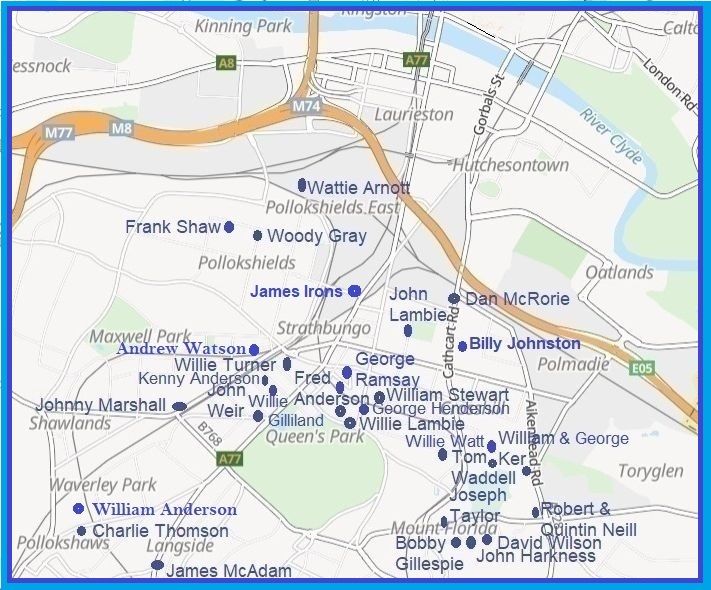
For it is almost, stress almost, axiomatic that without Queen's Park, the club, there might well be no Scottish football. The club would be fulcrul through its acceptance in 1871 of the rules of the Football Association in London and its willingness in the early days to apostolise and demonstrate the game wherever it could. Moreover, its participation in the semi-final, albeit in very advantageous circumstances, of the first (English) FA Cup and then provision officially of the entire Scotland eleven in 1872 for that first and drawn international were the sparks that set alight what, North of Border at least, flamed into a special passion for the game that even today persists.
The facts are that within five years of Queen's Park's emergence as our game's doyen club and within a stone's throw of their grounds there were nine others, all formed by and needing players and also producing them. The concentration over the years of the best or best-known of them alone is there to be seen.

(Lighter blue indicates playing Association football, darker blue not Association, black means club not in operation)
And already by the middle of the 1870s players were having their effect elsewhere, as was passion also spreading out. In 1876 George Ramsay, having played for two of those local teams, Oxford and Rovers, had taken himself south to Birmingham, there almost immediately to be instrumental in the creation of Aston Villa. And a year earlier still a young boy, four years at the time, had left Crosshill with his family for Argentina, specifically for the northern pampas and the then town of Cordoba, never to return. He would die there in 1922 in what has become a city of 1.6 milion.
The boy's name was Arthur Hughes. His father was a physicist going to work at an observatory that had been constructed there but Arturo would find work on the British-owned railways but clearly have interests the British community in Cordoba and have or develop them in football. He would also be instrumental, this time in the construction of the city's Barrio Ingles (The English Suburb) and when employees at the railway company itself wanted to form the club that is now Argentine First Division Talleres de Cordoba aka Club Atletico Talleres, Talleres meaning workshops, he found its first ground.
And nor does Cathcart's influence on major clubs, even in Britain, end there. In 1895 Sheffield Wednesday won the FA Cup. At inside-right was Alex Brady, considered to be one of the three or four most talented Scottish players never to have played for his country, but unlike the others not because, whilst being raised a Scot in Scottish football, he had been born in England. He had been raised in Renton, learning the game there, but he had been born at Burnbank by Cathcart station. His father was a cotton dyer, who had worked at the mill there before finding similar in the Vale of Leven. And the reason for Alex never pulling on the blue jersey - at sixteen he was so good, an early Pele, and already at the start of, including one at Celtic, a sixteen years professional, which for ten of them made him by the rules of the time ineligible.
And so to Celtic itself. It is said that on a December evening in 1887 a small group of men chapped on a door on the Clarkston Road in New Cathcart. One was a priest, Brother Walfrid, the founder of the club, another John Glass and they had come to try to sign the eldest son of a Drill Hall sergeant and already a Partick Thistle player. He was Tom Maley. But he was not home. He was out courting the girl he would later marry. And so the story is that instead of Tom his younger brother, Willie, was recruited, and from Third Lanark, not instead but in addition because both brothers would soon take the field for the Parkhead club. Tom would for several years successfully play as an amateur, whilst also teaching, before going on to manage Manchester to the FA Cup in 1904 and Bradford City into the top-flight. Willie would have a decade in Glasgow's East End as a player, win three Scottish caps he should not have (because he had been born in Ireland), from 1897 manage The Hoops for forty-three years but in death in 1958 remain true to his South Suburban roots. He is buried in Cathcart Cemetery.
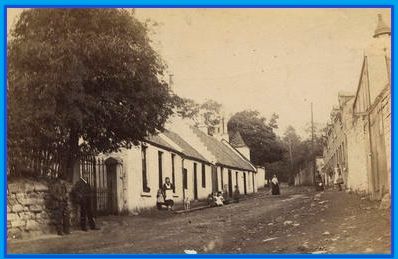
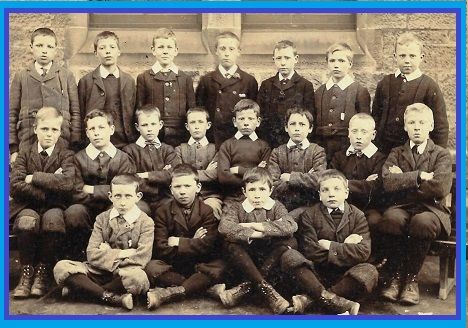
(Johnny Harley, front row, second from left)
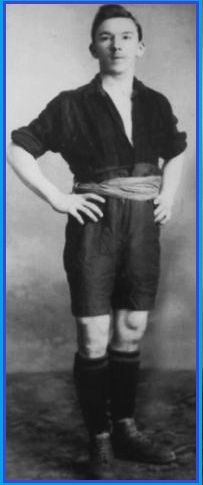
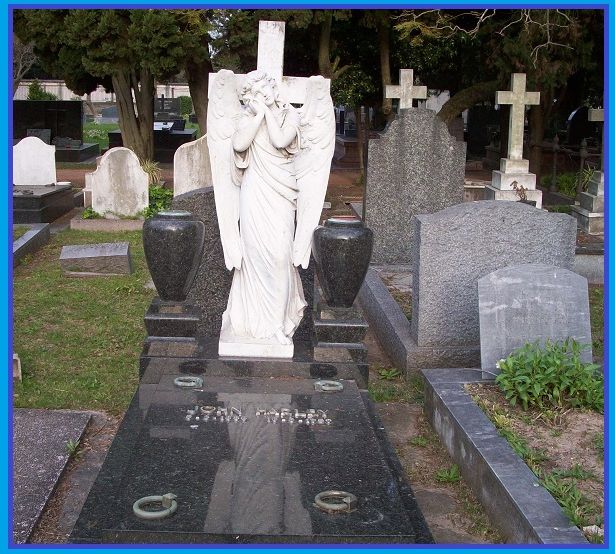
And between the Maley family-home and Willy Maley's last resting-place there is a location that, in global, footballing terms, could be considered more important than either but remains entirely unrecognised. It is Braehead over the Snuff Mill Bridge and a short distance up. And in 1886 it saw the birth of one of the most important figures in South American, specifically Uruguayan football. His name is John (Johnny) Harley, who as a young railway engineer found his way first to Argentina twice, to Bahia Blanca and then to Buenos Aires, before, through football, crossing the River Plate to Montevideo to stay.
And there at the company team of his employers, the Central Uruguayan Railway, that morphed to today's top, professional club, Penarol, he introduced to it and his newly adopted country the very much Scottish style of play that would win it two early Olympic golds, plus the first ever, indeed the first two World Cups it entered and he personally was also instrumental in the South American game becoming multi-racial. At Penarol he had on the basis of ability introduced Black players to the team and when at the first South American Championship in 1916 an objection was lodged by others about playing "Africans", Uruguay saw it off.
Thus it is that "El Yoni", Cathcart-born, raised, following the early death of his mother, on Holmhead Crescent by his widowed father, also Cathcart-born, educated at the local public-school and learning his early football in the village is buried in the Uruguayan capital, where his descendants still stay. His immaculately-kept grave is in Montevideo's British Cemetery, honoured to this day. But in Cathcart there is no real recognition, never mind memorial, something that is in sharp contrast to near-contemporary, Tommy Donohoe. He was born, raised and learned his football just yards across the parish boundary in Busby, where there is a bust and plinth in memory of him as a taker of football again to South America; in his case Brazil. It goes some way to reflecting the 30 - foot plinth and golden statue in Bangu by Rio de Janeiro commemorating him as a founder of the town's football-club. But, whilst the Busby-boy is a major figure in the Brazilian game, Cathcart's son is, if anything, one step higher still, with a pivotal place in the wider Latin-American one and also in World terms.
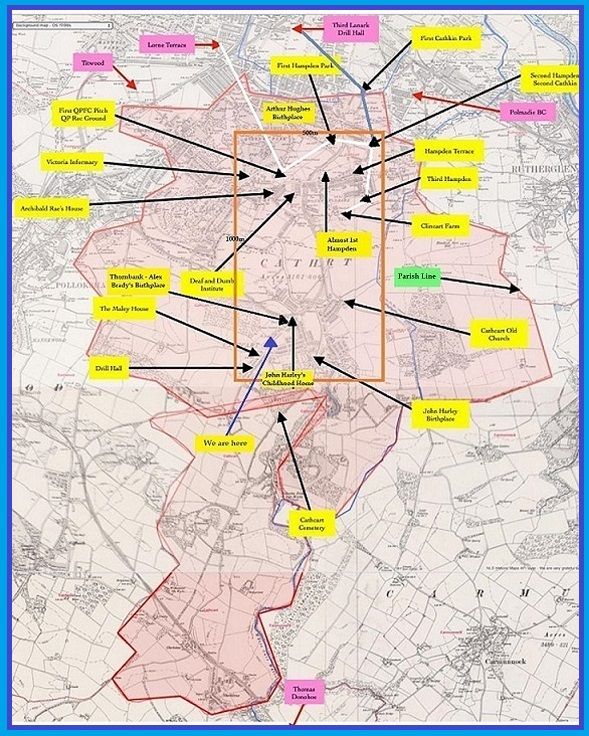
And it is to Cathcart village, specifically to its cemetery, that we lastly turn. Beautiful it is too, a place for a tranquil walk, but sadly far from immaculate, yet if there is world-wide a more important resting place for football’s early movers and shakers we have yet to hear of never mind see it. It is, including Willie Maley, the last resting-places of at least 16 of Scotland’s greatest players, pre-Second World War and others post, notably Tommy Burns. Nine more were cremated at neighbouring Linn Park. It contains lairs of footballing ambassadors, administrators and managers too. From the earliest days there is the grave, restored by his family, maintained by us, of Joe Taylor, Scotland’s first full-back. Wattie Arnott's has been restored also. Hugh MacColl, the captain of the winning team in the first, officially-recognised football match in Spain is there, Toffee McColl too, amongst others, as is Rangers first manager, William Wilton. George Pattullo has a memorial. He, when playing for Barcelona, had a better goals-to-games ratio than Lionel Messi. And there are others, all of whom lie in area of 500 by 300 yards on the southern edge of a concentration, the cradle of footballing pasts and presents two thirds of a mile by half and all within a larger catchment of over half a century of players to Scotland, Britain and the World little more than two miles by one. - IPCW
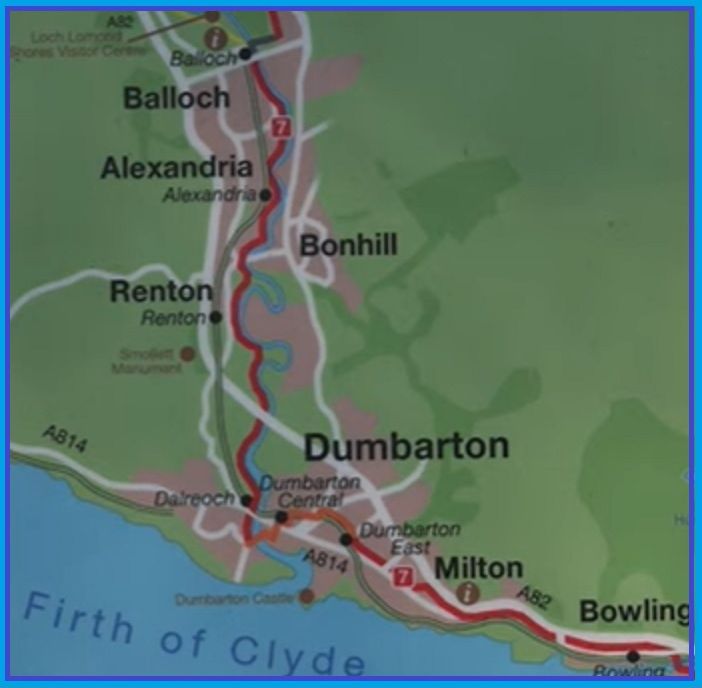
The Dunbarton Leven
- Source of the "Scottish Game"
In November 1872 something happened. It was the World's first Association football international, in Glasgow but expected to be something of a walk-over for the away-team, England. It proved, thanks to intra-club familiarity, some with-ball talent and nous and the organisational, read tactical, ability of the Scottish captain on the day, Robert Gardner, a little different. It was also the catalyst for the creation of four specifically Association football teams in Dunbartonshire along the banks of the River Leven that flows the five miles from Loch Lomond to The Clyde and then more clubs elsewhere; by less than a year later at least sixteen in all.
In the meantime four more games had taken place, all important. The first, it is reported, had been on 21st December 1872, the second on 11th January 1873, the third on 15th February and the last on 1st March, two in Glasgow's southern suburbs, two not and all between the same two teams, Queen's Park, Scotland's doyen, and Vale of Leven F.C., The Vale. The first and last would be wins for the former, but the middle two, the younger club clearly learning fast, were goalless draws.
More games followed after the summer-break, not least now with the instigation under the auspices of the almost equally new Scottish Football Association of the first Scottish Football Association Challenge Cup, the "Scottish Cup". But The Vale was not to be there. Its second nearest and neo-contemporary neighbour, Dumbarton, had accused one of its player of being that heinous thing, a professional. It was a try-on. The player in question, Johnny Ferguson, at twenty-four an old man in a young man's game but who nevertheless would become football's working-class star, had won prize-money only for running. But it was a stoochie, despite Ferguson nevertheless in the meantime being chosen for Scotland, that, at club level at least, would take two years properly to resolve. So Queen's Park found itself in December 1873 in the semi-final meeting Renton, the third of four brand new Vale of Leven's clubs. It had eliminated Dumbarton in the previous round and just now would be eliminated itself.
Thus there were by October 1873 already three obvious clubs in the Vale of Leven, four with a second Dumbarton club, Alcutha, later Dunbritton, also there in the background. And that a year later would become six, three now in Alexandria with the addition of Star of Leven and Vale of Leven Rovers, formed in 1873. The former would last a decade, the latter at least four seasons. Both would never get beyond the Cup's Second Round. But Renton, with The Vale effectively still excluded, had done so for a second time. In fact in April 1875 it was to go all the way to the final, there, having kept it scoreless for more than an hour, to beaten by Queen's Park once more.
It was all very encouraging and in 1875-76 enough for a further club, Renton Thistle, formed in 1873, the seventh to join the fray and from Queen's Park Juniors receive a walk-over into the Second Round. Moreover, finally unhindered The Vale would get to that same next round after walking-over Vale of Leven Rovers. And it would be both The Vale, via Renton and Mauchline and Dumbarton via Renton Thistle and a bye that would make it to the semi-finals with, however, neither making it further. The Cathcart combination of Queen's Park and Third Lanark contested the final that season.
But there had been successes elsewhere and more to come. In March of 1875 in the Cup semi-final eventually won by Queen's Park it had conceded its first goals ever, to Clydesdale and a brace. Indeed it had had to come from behind not once but twice. Then in February 1876 it lost its first match, 2-0 in London to the Wanderers. Reasons given were that because of injury they essentially played with ten men and interestingly the pitch had been narrowed, the home team clearly wanting to constrict the visitors' game. And finally in December 1876 the Hampden team lost its first game to Scottish opposition. It was in the Quarter-Final of the Cup, it was at home and to The Vale, the last survivor of seven Leven teams that had in September entered the competition, Queen's Park having held the lead at half-time.
The game had and would not be without controversy, as would the Final be also, one which The Vale would go on to win via two replays and a remarkable total of 35,000 being thought to have watched the three matches. But it marked a trio of things. The first was Queen's Park as a team was fading and would not be a driving-force in the Scottish game for another three seasons after it had actively recruited to rebuild its playing-strength. The second was that The Vale was the coming-team and would be that driver for those same three years. It would have a three-in-the-row of Scottish Cup wins in a row and do it with a combination perhaps of greater fitness due to its players' working-class lives but also because of positional innovation in attack and then team-linkage. The six forwards would become notated in pairs, first across the pitch, as a 2-2-6, and working in combination, and subsequently then vertically as 2-2-3-3 with the origin being quite possibly shinty, the winter game played along the Leven from its source to its mouth before the Association game and then still practiced. And, thirdly with nine teams in the 1877-8 Cup with the addition of newly-founded Alexandria, based around the town's cricket club, and 10th Dumbarton RV, from 1875, then Jamestown, formed in 1873, joining the following season to make ten vying for the trophy - fourteen clubs in all with the 5th Dumbarton RV, Jamestown Athletic, Bonhill Rovers and Vale of Leven Wanderers - the baton could and would be passed around and on locally.
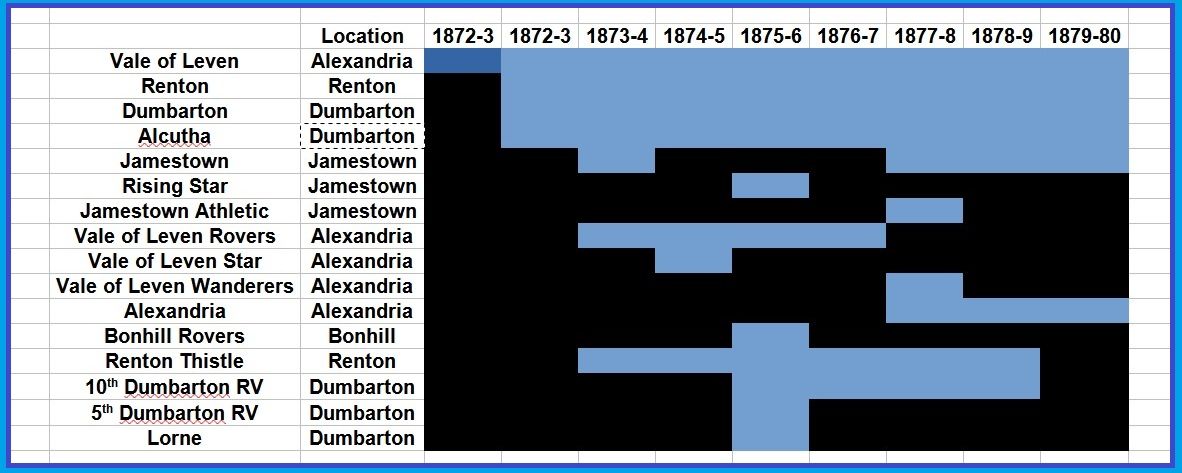
(Lighter blue indicates playing Association football, darker blue not Association or not all season, black means club not in operation)
In fact it was so local that today between Jamestown and Dumbarton it is just twelve minutes in a car. And with it In 1879-80 Dumbarton, having eliminated both The Vale, in a seven-goal, First-Round tussle, and Renton on the way, would reach the semi-final only to be beaten but a single goal in the second half by eventual champions, a re-emergent Queen's Park.
And thus it seems there is a more than adequate argument that a coherent, distinctive style of very successful Scottish play, began to emerge not so much from Queen's Park to 1876 but under The Vale to 1880, with it being adopted by the other Leven teams, also by the "new" Queen's Park, by West-Central Scotland at least, Edinburgh going something of its own way with its earlier adoption of the Welsh developed 2-3-5, and by the Scottish national team that was not to lose a game in a decade. And that distinctive style is again reflected in the almost complete dominance of the Scottish Cup by the Hampden club and first two, Dumbarton and The Vale ,and then three Leven clubs for the next seven campaigns. And this may have been longer still had that third, a re-emergent Renton, and Leven clubs more generally not been, in the case of the former, "raided" by a nascent Celtic and then the collective "pillaged" by clubs Down South, Renton having from 1884 developed and in 1888 revealed, indeed unleashed, a final ingredient to the mix, the Scottish Centre-Half; it taking that distinctive and repeatedly successful football already played in Scotland from a "Style" to a "Game", arguably eventually the World Game.
It meant that in a rapidly changing football scene on both sides of the border as the source was effectively drained to dry only Dumbarton would survive long-term. Alcutha and the 10th RV from that same town are long gone as major teams, as are Jamestown, Alexandria's Star of Leven and Vale of Leven Rovers, Renton Thistle too, and, of course, The Vale and Renton themselves. But absence does not change the facts. - IPCW
----------------------------------------------------------------------
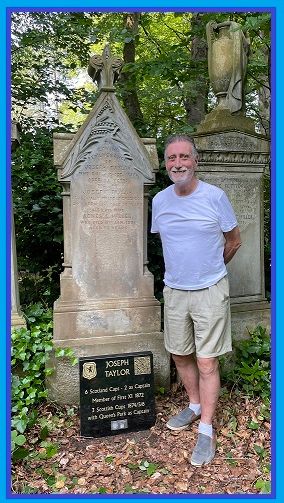
A First Plaque
It's small, discreet, the wee oblong almost at ground-, at foot-level, but it is a first; the initial SFHG plaque of, we hope, many. And it is to found with its QR-code link to this site on the grave, restored by his family, now in England, cleared and maintained by us and in Cathcart Cemetery, of Joseph Taylor, one of Scotland's two full-backs in the first ever international in 1872 and later captain of his country. (See the fuller story below)
It is a proud moment in a graveyard with a score or so of other memorials to players, administrators and managers from the early game, many of which are in dire need of similar TLC. We can see to it but not without funds so any donations will be gratefully received and expeditiously used. The donations link is beside the logo at the top of this page. - GO/IPCW
----------------------------------------------------------------------
Museums
- the Good, the Poor and the Ugly in Spirit
This summer have provided an opportunity to visit and revisit a number of "Football Museums" both in Britain and on Continental Europe. And here quite simply are our assessments of what what they offer to those of any age but with some interest in football history rather than simply seeking a means to keep the weans amused for the day.
First up is Manchester's National Football Museum, which is not national, unless, that is, the United Kingdom is now a nation not a state, but has inherited its title from earlier days at Preston, where it still has its archive, and did not use the opportunity of the move to amend it to English National Football Museum or even simply The English Football Museum.
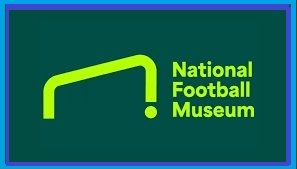
But there are funding restraints. Its money comes from Manchester Council only. Nothing from the English FA. But we are where we are. It, on the other hand, is house in an architecturally very interesting building in the north of the city-centre with good public-transport access and is on three floors, the first a lobby, the second the exhibition area and the third activities.
As to the exhibits the origins of football take up about a tenth of what is quite a small space and they and the lay-out are, shall we say, eclectic with, from our point of view, not a single reference to the huge contribution Scots made to the English game for over a century. Figures like Alex Ferguson, Matt Busby and Bill Shankly are featured but their personal and footballing origins North of the Border are not mentioned. And this strange approach starts on the very first display wall. On it there is a photograph of England international David Jack, without a hint that his father, also a professional footballer signed South, hailed from Alloa and his mother from Jersey. And it continues with Tadger Stewart, the 1888 Home Championship as the first won by outright England but only after three by Scotland and one shared. Then there is Wembley and Glasgow-born Archibald Leitch, woman's football and Lady Florence Dixie born in Dumfriesshire and John Kerr of the Dick, Kerr company from Glasgow, Arthur Warton as the first black professional footballer with no mention of Andrew Watson, and finally Arthur Kinnaird with no word that he was a Scotland international. And all this, good and poor, is just now for £16.
And so to the next. That the German Football Museum is in Dortmund and not, for example, in Berlin, Frankfurt or Munich is interesting. In part it was due to funding but it works. The city is central and well-connected. The building itself is imposing, the entrance directly opposite the city's main railway station and, with it again on three floors, is easily spacious enough to do what is a fine exhibition justice, both in content and lay-out. And within that the homeland section understandably dominates but there is a very good section on the early history of the game, both in Germany and before that in Britain.
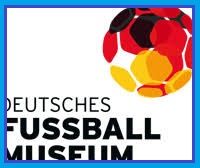
However, there are in the content some factual errors, but we hope we are helping to correct them, and there is also the inclusion of the usual, inherited tropes, German and general - in the case of the latter, for example, that folk-football was mob-football, that Association football had an almost exclusively English public-school derivation and similarly toffs played it, and that in the early days England dominated it on-field etc, etc.. But then Germany is not alone in that and, whilst work remains to be done, Germans are a logical people and facts are facts. So to sum up, it is easy to get to, has very good exhibits, most of them also in English, is well-laid-out and well worth the E16 door money.
So onward. It has to be noted that of all the all the museums visited the FIFA's is the only one that does not directly name the game. And that is for a simple reason. It is not dedicated to football but is a self-congratulatory and therefore slightly offensive shrine to FIFA itself, which is a shame since IFAB, also now based in Zurich, of which FIFA is but one member along with the FAs of the four nations of the United Kingdom, is the custodian of the laws, the "manners" the "spirit" of the sport. And "manners maketh man". Put another way FIFA might do better to see itself as nothing more than a sometimes excellent, sometimes not very good tournament-organiser but somehow that has been rather lost.
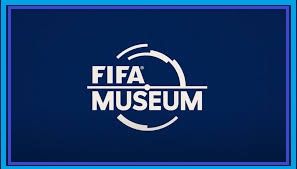
Therefore and to quote, "The FIFA Museum in Zurich is generally considered worth visiting, especially for football (soccer) fans, but some visitors find it overpriced for what it offers." Interpretation of which might be that it is somewhat disingenuous about its scope, using the lure of the "Beautiful Game" to promote not it but itself and is done at a price that could, if content were done very, very well and comprehensibly, i.e. history past and story present, do justice to the former but cannot at SWF 26 at the door self-justify. Of its three floors just one third of one is devoted to the game's history and, whilst the content is largely correct, it is skimpy and frankly not enough. On the plus side, however, it is well-laid-out, colourful, if your thing is endless football shirts, has good activities for children, if your real interest is to use it as a soft-play area, and is very accessible by public transport.
The Education and Heritage Centre (EHC) at Windsor Park in Belfast in Northern Ireland was never intended to be a museum nor filled with relics of the past but rather an interactive, enjoyable and educational experience with wide-ranging audience appeal. And that it is, as well as small and colourful, concentrating on the Ulster. For Eire you have to look to the Irish Sports Museum in Dublin and now, it seems, Dun Laoghaire, but it seems to be more about selling rather showing stuff.
And the adult cost of entry to the EHC, note, including a tour of the stadium is £10.
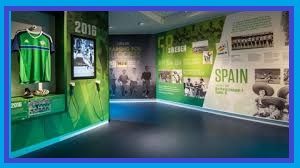
In the case of the Scottish Football Museum it was not a visit but a revisit, in fact the latest in multiple revisits. And the problems the museum has are well-known. Being at Hampden Park it is not the easiest place to get to by public transport, but then not impossible if you do not mind a bit of a hike. And again only about a tenth of the floor space covers the history of the game, from 1872 to the Second War when Scotland was first pivotal and then top or near top of the playing-tree. Too much remains given over to the period from the Second World War, when, with a few notable exceptions, the national team was poor to bad. But there are considerable redeeming features.
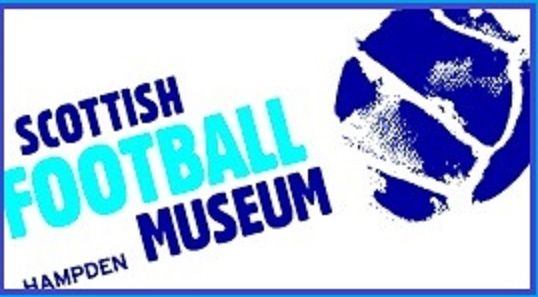
The first are the exhibits themselves. They are more to-the-point and more lively than remembered, although gaps remain even in the modern era. The special exhibitions, currently Football and Mining, have been and are good. There are knowledgeable staff always on hand to question about what is there and other matters to do with the game. And they know their subjects. Moreover there is no soft-play. Bairns are there but for the history. And, whilst the exhibition space could be larger, the cost of entry at just £9 is well worth the money, in fact better value than both FIFA certainly and even Manchester. - IPCW/AF
Scotland and FIFA
(1911-1959)
Scottish football and FIFA have not always been a happy mix. In fact in the early days, indeed until the 1950s with two interludes, the first from within the organisation on joining it in 1912 and the other in the late 1920s and early 1930s but from outwith, it was something of a running sore, for which the source seems largely been an all-too-willing subservience to the English FA in London. It was at times nigh on colonial, certainly unhelpful and since then suspiciously fogged almost to opacity and not from the Continent.

And even then that first honeymoon-period did not last long. By 1919 we Scots were gone, the background being English objection to the continuation of the memberships of Germany and Austria due to their participation and defeat in The Great War, FIFA refusing to bend and the untimely death in 1918 in harness of its previous, long-term, English President Woolfall. For England the short-term effect would be a huge loss of influence as the number of countries had risen from fifteen in 1914, to twenty in 1920 even after the withdrawal not just the FA in London but that of the three other Home Nations as well. As for Scotland and its clubs it created the specific inability to do anything about the movement from 1921, breaking contact in the home country, of Scots players to burgeoning American "soccer". And for all the Home- FAs, having not resulted in exclusion of a Great Britain team at the 1920 Olympic Games, albeit it was eliminated in the first round, it did both result in no participation in 1924 and, on re-entry that same year, a complete climb-down in all but name.
But even with membership once more there was still to be no tranquillity. The Olympics were soon to produce yet another point of contention - the payment of expenses to participants, particularly for working days lost. The position of the majority of FIFA members, as shown in a 1927 vote, was for. The position of the English FA led newly since 1923 by Charles Clegg, ever the supporter of amateurism, was an ingenuous "agin", given that his organisation had in that same vote abstained. Yet it mattered not. High horses were again mounted with the result was once more of an England resignation in 1928, with the other Home Nations once more walking through the same lobby. It would mean no say or places in the first World Cup, which in fact would in part be created as a solution - the Olympics for amateurs players, the World Cup for professionals. However, there was a potential result for Scotland. With the backing of Austria, ironically, and Hungary, which had been suffering similar drains, double pressures, one FIFA, one not, could be applied to the USFA, its President Andrew Brown fra' Paisley, to stem the flow by forcing his members to recognise European contacts and act accordingly. The only problem would be that the majority of them either would and did not comply causing the chaos of what have come to be known as the US Soccer Wars. And they then flowed almost seamlessly into the 1929 Crash, the Depression and the collapse of US professional soccer more generally. Problem solved, it is true, but not as intended.
So before the outbreak of the Second World War there would for the SFA, as FIFA gradually extended its reach, a decade of being outside. But here there were perhaps some advantages. The political problems associated with both the 1934 and 1938 World Cups were avoided as it, the SFA under Robert Campbell, elected to the Presidency in 1927, finally began to demonstrate some independence of thought and action. In 1929 on a Continental summer tour the first Scotland internationals against non-Home Nation teams took place. More would follow, three more in 1931. All the teams were FIFA members so channels were open. And in 1933 Scotland hosted a foreign national team for the first time. Irony on irony, it was Austria.
However, having been President for six years, perhaps the most constructive Presidency of all time, in 1933 Campbell stepped down. And that seems to have unleashed the Secretary, again from 1927 and before that Assistant Secretary from just after The Great War. He was, George later Sir George Graham, who would remain in post until 1959 aged sixty-seven and in retrospect be something of an unmitigated disaster. It is little in the way of exaggeration to say Scotland's recovery as an on-field footballing power would not be until the 1960s with him retired. Whilst in 1936 international games against FIFA members did resume and all the Home Nations would re-join FIFA in 1946, the SFA would otherwise post-war look more than foolish successively over the refusal to take its negotiated place at the 1950 World Cup in one of the places where football had been taken by Scots, Brazil, by arguments with Celtic in the next couple of seasons over the flying of the Irish flag, qualification for the 1954 competition in Switzerland but the sending of a squad of just thirteen, the failure to score and the conceding of eight, the resistance that same year to televising of games and the non-appointment of a full-time Scotland manager until Matt Busby in 1958. Ian McCall, by far the most success long-term occupant ever, indeed the only one to have a win-ratio not just over 60% but 50%, would not be in position until 1960. - IPCW
----------------------------------------------------------------------
Dick, Kerr Ladies
- same English team but another Scottish story?
On a recent visit the the Football Museum in Manchester, called the "National" but actually only English, one of the exhibits to catch the eye was was that on the pioneering, women's football team the Dick, Kerr Ladies or as it shown above, simply Kerr's Ladies, with special notice to the comma and then the apostrophe. Two things struck. The first was the name itself. The second that the team was one founded from the workers at the Preston factory to represent the company and was sponsored by it, the players receiving 10 shillings (equivalent today of £100) per match. And one thing intrigued. Whilst the club itself continued after the 1921 English FA ban on the women's game, indeed did so for another forty years as Preston Ladies, the company subsidy continued before it was ended in 1925. The question was why and in the answer perhaps hangs a connecting tale.
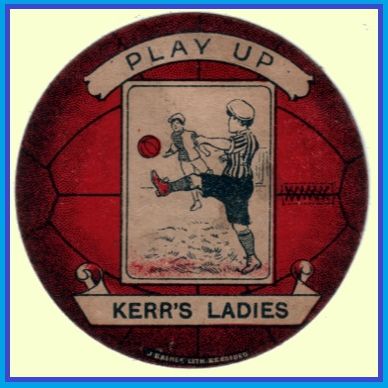
First there is the company name. Dick, Kerr does not sound Preston. And that is because it is not. It had been founded in 1854 as W.B. Dick and Co., the W.B. standing for William Bruce, Oil Refiner, and in Glasgow. In fact William Bruce Dick had been born in Maybole in Ayrshire, the son of a cotton weaver. But he had moved to Glasgow, there prospering and where in 1851 his elder sister, Margaret, had married a silk, wool and cotton manufacturer, John Kerr.
John Kerr, in fact John Kerr Snr., would die in 1856 at just thirty-six but by then had had four children, John Kerr Jnr, born in Glasgow in 1852, being the second. And this younger John Kerr would eventually go on by 1871 to Glasgow University, marry Helen Melville in Falkirk in 1877 and by 1879 be living in Putney in London as an Iron Merchant. However, in 1883 William Dick at fifty-three clearly asked his nephew to join his business with a change of name to Dick, Kerr & Co, and a period of expansion soon resulting. In 1885 the new entity took on the Britannia Works that was just by the station in Kilmarnock, there to produce gas-engines, then branching out into trams and trains, opening its own foundry, still in Killy in 1890. But trams in particular were electrifying and in 1893 a further plant with that expertise was acquired in Preston in Lancashire and, whilst in 1891 Kerr was still in Putney and now an Engineer/Contractor, by 1901 he was back in Scotland; in Athelstane in East Lothian, a Mechanical Engineer with an interest in politics. In 1900 he had stood to be MP locally for Haddingtonshire. He was unsuccessful. But he stood again in 1903 in a by-election this time in Preston and won. By that time he was probably also staying in the town for, although he lost the seat in 1906, his mother, would in 1907 be living there on her death in Blackpool, with incidentally William Dick, her brother, having passed away two years earlier and leaving the equivalent today of £24 million.
However, whilst the Preston factory, which had become factories, appears to have been increasingly the centre of electrical manufacture with the coming of The Great War it would convert to producing planes and munitions. And as the men, especially from 1915, were called to fight, the work-force became increasingly female and from it, from them, would in 1917 emerge the essentially teenagers' football team that would rapidly become both very well-known and successful.
The genesis of the team seems to have been organic and Preston was a town with already a long, footballing history but why the sponsorship, which at perhaps a total of £1500-2,000 a match and in 1918 fifteen matches, so perhaps £30,000 plus per annum in today's terms would probably have had to have been authorised from the top, in fact by Kerr himself. And here we have both a possible explanation and confirmation.
With regard to the former John Kerr was a Glaswegian born in 1852. In 1872 he would have been twenty as football in the city exploded around him. In 1877 he would have been twenty-five as the game spread east and north. As a Scot in that era he could not have been unaffected. He would have been swept up. He may well even have played so when a football team, likely to raise morale that would be so successful that it went on, despite defeat in Scotland famously by Rutherglen Ladies (see: The BBC Documentary), to proclaim and market itself as "World Champions", emerged from his factory, albeit in Lancashire, why would he not be enthused, indeed make it happen long-term with an on-going contribution. And then there is the fact that Kerr himself seems from the ending of the War, he aged sixty-five, to have gradually stepped back. The Kilmarnock site, the last business in Scotland itself, was sold in 1919 and Dick, Kerr & Co became the not the Scottish but the English Electric Company, hence with "Kerr's Ladies" it from that point becoming both almost personal and marking from 1921 a wee act of Scots defiance. Whilst the English FA's ban on the women's game came into force, the Scottish FA for once did not follow suit, at least not for another generation. And nor did John Kerr.
And as to the latter, when in January 1925 in Frinton in Essex and as a Retired Engineer John Kerr himself died, aged 72, with him no longer there to sign the cheque that same year the company subsidy would be rapidly removed. Coincidence perhaps, but then maybe not. - IPCW
----------------------------------------------------------------------
Matter(s) of Fact(s) Two

There is currently a deal of heat and light being generated by various parties, mostly good-naturedly but also by some with more misguided, perhaps sinister intent , about the origins and therefore the "home" of "football". We at SFHG are not mis-guided but also not immune. With regards the former it is pretty safe to state that the sources of "foot-ball" and "football" are various and the football club organised to a large degree as we understand it today first made is appearance in Sheffield in the decade from 1857, the year of formation of Sheffield F.C., to the foundation in 1868 of the Sheffield Football Association, now the Sheffield and Hallamshire County F.A..
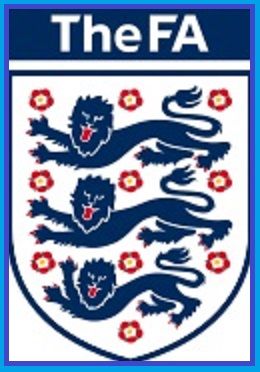
And there should equally be little doubt about the place from where, by definition, Association football came from. It was Covent Garden in London 1863 with the creation of the eponymous Football Association with, it should be stressed, considerably more pivotal interventions and amounts of support than admitted by the capital from co-travellers in Sheffield. But here there is tension, it has to be said, largely from the south Yorkshire city, from where in its current campaign for Unesco Heritage Status there has too often been a seemingly deliberate conflation of the game we play today, Association football, "Soccer", and, shall we say, "Non-Soccer".
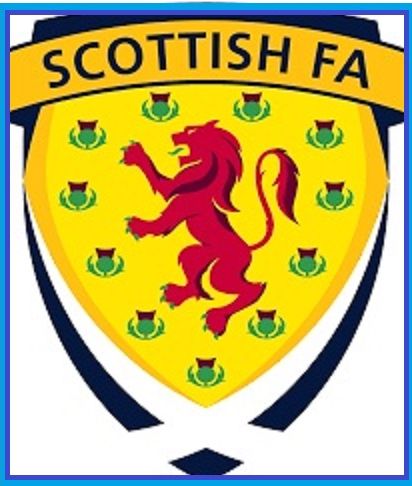
And then there is the question of the start of modern, Association football. The myth, the mime has been that it was public-school and once more English, indeed South-English. However, we at SFHG maintain it was in Scotland and twice over, "Style" from 1872 but mainly in the latter half of the 1870s, and from 1888 "Game", driven by, as put by The Scottish Football Museum, fitba's "explosion" in our country, which in essence was to be the root-stock of a demonstrably superior game, albeit one largely blossoming elsewhere, that has become our contemporary one.
Of course, this contention is wide open to gain-say but in the recent, first Fact(s) Matter(s) figures, that is counting not trope repetition, were given to show just how the penetration from North of Border of Scots players and therefore "Style" and "Game" in England racked up to a peak in 1899. Moreover, much evidence has been gathered in the last decade showing that it was the Scots passion for the game that largely took it global, see Scots Football Worldwide.
And to enhance the point we have now here in Fact(s) Matter(s)2 turned our attention initially specifically to club formation and participation in the formative years and in the three main centres, in chronological order 1) Sheffield, 2) London and England ex. the Steel City so largely the Midlands and the North, and finally 3) Scotland.
In the first in those pre-Association years it had started in 1857 with one, a second club being added in 1860 and rising to perhaps twenty-one in 1863, when the London FA, i.e.2), ultimately mustered an initial total of six. In fact, as the latter almost folded in 1867 with perhaps 10 clubs but only again six active, after a concerted effort at recruitment from 1868 to 1872 1) and 2) were more or less in lock-step, with in 1867 twelve Sheffield clubs having taken part in its Youdan Cup, the World's first, organised trophy with, as yet, no Southern equivalent.
But from 1873 there was in Sheffield said to be something of a surge in club-formation, seemingly outstripping London and the rest, of which there were for the monent, few and by a margin for three years in succession. It meant that by 1877 a gap should have opened up. Yet that season, when it came to it, forty-seven of the Yorkshire city's team's would take part in Cup-competitions, for there were now three of them, twenty-five of twenty-six eligible teams in the Sheffield FA Challenge Cup, fifteen in the schismatic Sheffield New FA Challenge Cup and six in the Non-Association Cup, as against only four fewer, forty-three, from the rest of England in that year's FA Cup.
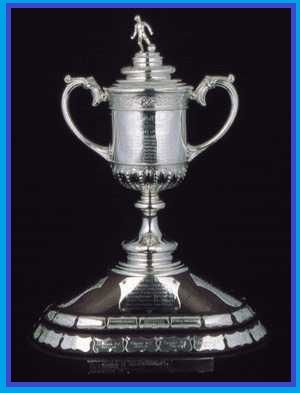
However, North of Border there was neither schism nor steady growth. The game had arrived in Scotland in 1872 with the playing in Glasgow of the first and drawn international. But it had lit a spark. By 1874 the formation-numbers of new, Senior clubs having doubled in each of the two intervening years and with the totals of teams in the Scottish Cup having risen from sixteen to twenty-five. And by 1877 the tally of annual club-formations had reached one hundred and nine, whilst in England it was nineteen with one hundred and sixteen participants in the Scottish Cup and just forty-three in the English equivalent.
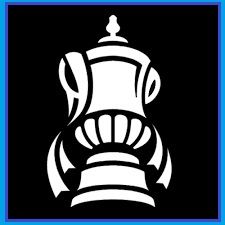
In fact, before the Scottish Cup in 1883-4 set a limit of one hundred and thirty-two entrants to the main draw, having reached a maximum of one hundred and forty-seven, England had only just reached one hundred, whilst in club-formation terms Scotland stood at just shy of a thousand with England a quarter of that number. The contrast could not be any more sharp. But there was another emerging, that between the north and south of England itself.
There was no doubt that Association football was growing more popular generally in England. The figures say so. But it was, with again the numbers talking, particularly the case in the Midlands and the North, albeit that the situation in Sheffield was at that point unclear and would not be clarified until 1887 when all its association had united as one. The result was that the total of teams in the FA Cup from the South had in 1881 already been equalled by those from the non-Sheffield Midlands and The North, and that ratio gradually worsened or improved depending on stand-point. By 1887 it was just thirty-eight percent and non-Southern teams had won the trophy for six years in succession and would do so for another decade and half with even then the sequence only broken by Tottenham with a Scots player-manager, playing his version of the Scottish Game and from the Southern League, the South's tardy response to the Football League and the belated implanter, but only by the beginning of the 20th Century, of the game as no longer amateur but truly both professional and populist below the line from The Wash to the Severn - IPCW
----------------------------------------------------------------------
In Memory of John McCredy McAlery -
Founder of Irish Football.
An exemplar to us all?
There is little doubt that John McAlery was the pivotal figure in the coming of Association football to Ireland. Off-field he was the initial Secretary of the island's first over-arching football organisation, the Irish Football Association based in Belfast. The Dublin-based Football Association of Ireland would follow in 1921. On-field he was from full-back the country's first captain. But those are the easy facts. He, or rather his life within and outwith football, is rather more nuanced.
The story told of his introduction of the game to the Emerald Isle came after he, already a cricketer with Cliftonville C.C.,, whilst on his honeymoon in Scotland saw a football game, was enthused and as a result was able to persuade two Glasgow teams, Caledonian, itself an off-shoot of a cricket-club and playing at Burnbank, and Queen's Park, then at the first Hampden, to travel to Belfast there to play a match, essentially a demonstration-game.
That fixture took place on 24th October 1878, four days after both teams had successfully competed in the Second Round of the Scottish Cup. It was won by Queen's Park 3-2. And just under a year later there followed the announcement of the opening to membership of an already formed, officially as of the 1st September 1879, Cliftonville Football Club with the Irish Football Association, modelled on the Scottish FA, founded the following year.
It's a nice tale but with a major problem. John McAlery is said to have married Susan Elizabeth Mecredy on the 29th August 1879. If correct the supposed honeymoon was a year early or there was another explanation for the trip across the water. And that might have been business. John McAlery was a draper to trade. He had or would run the successful Irish Tweed House in Belfast's smart Royal Avenue but it seems unlikely it sold only cloth from Ireland. Scottish tweed would also have been on offer and that probably would have been sourced from the very Glasgow cloth and clothing businesses, where Queen's Park in particular had first seen the light and from which still drew players.
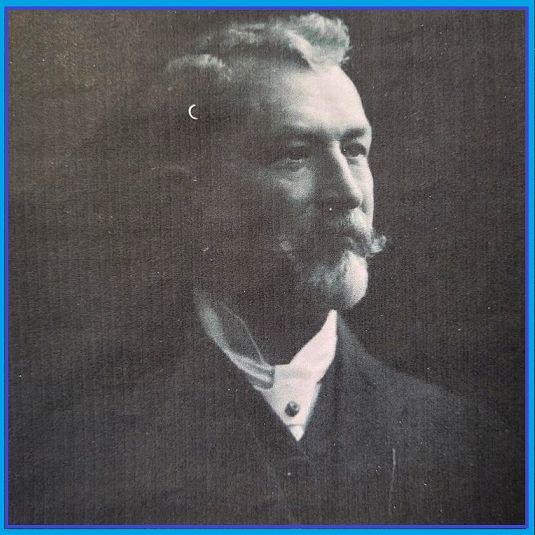
Then there is the question of not the origins but the the age of John McCredy McAlery himself. Some sources have him born, the son of a farmer from Rathfriland in Co. Down, in 1848 in 1849, his mother a McCready, which mutated somehow to McCredy. However, the censuses have his age as fifty in 1901, sixty in 1911 and an obituary seventy-five on his death in Belfast in 1925. He must therefore have been born in 1850 or early 1851, so when in Scotland was already twenty-eight to thirty and on his international debut, thirty-one to thirty-three. It explains his short playing-career.
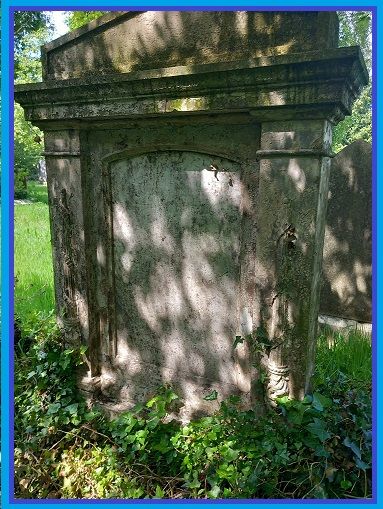
Then there is the question of his wife. She appears to have more or less the same surname as his mother, maybe suggesting marriage within the family. But, as interesting as that may be, what really matters has been the state of his (and her) grave. They are buried in Belfast's Balmoral Cemetery with the stone itself having giving no indication at all of his import to the Irish and World game, its fabric in need of some cleaning and care and the weeds growing at its foot. But that, apart it seems, from an encroaching tree, has recently changed and for the better.
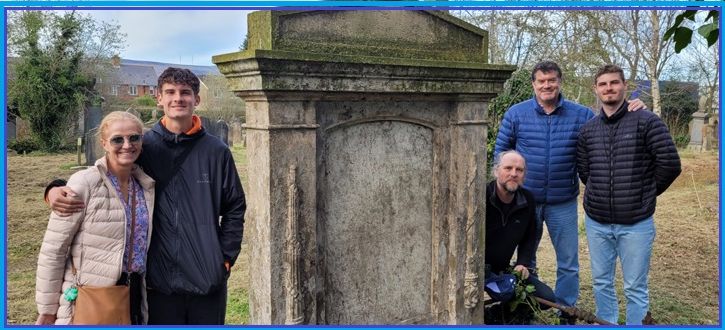
To its credit Cliftonville had not forgotten its founder. In 2014 the reconstruction of its Cage End had allowed its renaming as the John McAlery Stand and the placing of a blue plaque. But it has not stopped there. McAlery's eldest son moved to South Africa with descendants still living there, including in Durban. Contact between the club and them was made with the result that in April this year great, great-grandson, Michael McAlery, his wife and two of their children travelled to Northern Ireland, visiting the club ground, Solitude, and also the now cleared grave.
It has been a shining example of what can be done with commitment, effort and at relatively little cost, uniting in this case club and the Irish Diaspora. It is also one that could be extended with good will to Football Associations wherever; Scotland being no exception. And it also leads to an examination the general state of footballing graves, be they in Ireland, North and South, and, for our purposes, in Scotland too.
Community pride is important to social cohesion, now and in the future. In communities elsewhere, such as in Brazil, Chile, Spain Czechia and elsewhere, it is manifested with not just statues but also long-term and on-going care of graves. In Britain and Ireland, in the four nations that are forever the first incubators of the game there is little or nothing. Resting-places are overgrown, some unmarked, others toppled or crumbling. It is something that we at SFHG have made tangible efforts to change, examples breing Andrew Watson and Joseph Taylor with more to come. Supporter clubs on both side of the border have also done great work but perhaps now from Ireland with Cliftonville and its honouring of John McAlery we have finally at club level an exemplar for at the very least a more respectful and contributive attitude. - AF/IPCW
----------------------------------------------------------------------
Matter(s) of Fact(s) 1
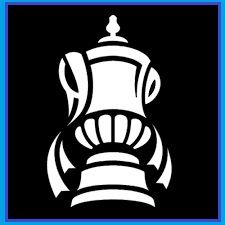
Facts matter and one, albeit bizarrely almost entirely ignored by the Scottish Football Museum, is that our football had a Golden Era. Moreover, it was one, with small blips caused by failed and therefore eventually transient impositions from the SFA re. professionalism and then residence, that lasted fully sixty years. Indeed, just as today almost fifty percent, more in First Teams, of the players active in the English top-flight are non-English for a large proportion of those six decades for non-English read Scots. And the reason we know that is simple counting - in the case of the FA Cup from just a dozen years after its inception in 1871 and the Football League from the day in 1888 that it, on initiation by a Scot, kicked off.
A Cup Run Over
Scots played in the English FA Cup in its very first iteration. At least fifteen of them, four in the Royal Engineer's team that reached the Final plus the eleven in the Queen's Park one that in March 1872 faced The Wanderers in a London-played, drawn semi-final that was not replayed because the Glasgow club could not afford an immediate, second journey south. But that was more or less it for a decade, when in 1882 there were four and half, Arthur Kinnaird and William Anderson for the Old Etonians, the latter Liverpool-born of a Scottish father, and three imports in the losing Blackburn Rovers team; Hugh McIntyre, Fergus Suter and Jimmy Douglas.
But that number was in 1884 to become fifteen or almost seventy percent of the twenty-two on the pitch. That March day Blackburn was involved once more now with four, but this time Queen's Park with a full team was back, having in 1882 re-entered but, probably due to travel difficulties, allowing a First Round walk-over to Grimsby. Moreover, the same scenario would in 1885 be repeated and, whilst the same Scottish total on the Final pitch would never again quite be achieved, twelve being the largest number, on four occasions to 1939 it was over fifty percent, three times before The Great War, once after, on thirteen more occasions it was 30% or more, twelve before WW1, and on nine further occasions, five between the Wars, it was 25% or more.
In total it meant, indeed still means for the record, that from 1884 to 1915 in twenty-one of thirty-two FA Cup Finals twenty-five per cent or more of those on the pitch were Scots-born, never mind the Diasporans, and to 1939 it was twenty-nine of fifty-two, including the remarkable 1937 Sunderland-Preston match with twelve including for the defeated latter Bill Shankly and Jimmy Milne, father of future England international (because he had no choice) Gordon.
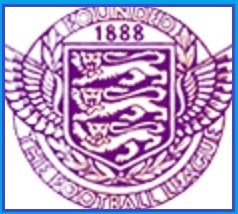
A League of its Own
To repeat, it is said that in today's Premier League non-English, and mostly non-British players, account for more or less fifty percent of the active playing staff. The picture is a little complicated by squad-number rules but is far from a new phenomenon. Just look at the period notably from 1888 to 1915, substitute "Scots" for "non-English" and an almost exact parallel is there for all to see. In fact, just as now with the top-flight of English football effectively unable to function without continuous refreshment through foreign talent, so it was then and in an era when otherwise it, and global football, was after a hesitant start first formed and then flourished (Follow-on next column).
----------------------------------------------------------------------
Scots first started to play in football South of the Border at least as early as in 1865 with the formation of Old Etonians. The first to arrive from the North was Queen's Park's Robert Smith in 1869. By 1876 that number was five, including the first playing for money. Two years later it was ten, in 1881 twenty but by no means an invasion. But as Scotland would repeatedly beat England at international level and Queen's Park reached the 1884 FA Cup Final the number would by 1885 jump from twenty-eight to seventy-six. It is known because that year not only the SFA did a count but we have also done so just recently. Indeed we have to the best of our ability counted and noted the number of Scots playing in the top-flights of the English and Welsh game annually to 1939. In that year that count was one hundred and seventy-six but still only fifty-seven per-cent of what it had been a little over a generation earlier. Peak-year had been 1898-9 with a then total of a staggering three hundred and seven, with all the "Scotch Professorial" influence from north of Hadrian's Wall such an input of talent, knowledge and experience inevitably brings.
But even so the plain figures do not give a complete picture. Whilst, from 1887 and fifty-six Scots players to ninety-six on the foundation the following year of the William McGregor-inspired Football League (FL), totals over a decade were to increase more than three-fold, so had the number of teams. In 1892 the FL had created a Second Division. Then 1894 saw the formation of a one division Southern League and the next season it too had become two. Thus, with in 1891 one hundred and eighty-four Scots in the English game and one hundred fifty-two of them in Football League clubs, it had meant a peak average of twelve per FL squad i.i. half, which admittedly, as the number of clubs doubled, fell before steadying at seven or thirty per cent.
However, it also meant that, like today, some clubs decided on, or for financial reasons could only afford, the home-grown, effectively English-player route, whilst some did not. In 1898-9 in the Football League Sheffield United had no "foreign" players, Wolves one, West Bromwich two whilst, by contrast, Bolton and Newton Heath (Manchester United) had ten, Preston and Arsenal twelve, Newcastle thirteen, Derby fifteen, Liverpool seventeen, Sunderland twenty-two and in the Southern League Tottenham and Bristol City eleven and fourteen respectively. And as for success. Plus ca change. - IPCW
---------------------------------------------------
The State of Play
a summary, more or less
Attempt 1
That the internet has turned football history on its head there can be no doubt. And here is meant the game in all its variants and not just the Association variety. Moreover, the changes it has brought have encouraged a new wave of researchers, interesting times, not least in terms sometimes of attempts to overwhelm fact with hype, both north and south of the border, and new or newish revelations in the true, the un-covering sense of the word.
And here perhaps the best start is in Scotland and with one of the most recent, for which we have to thank Ged O'Brien (see immediately above). It is not only the contention that in 1627 there was a football pitch at Anwoth by Castle Douglas in Kirkcudbrightshire. As God is witness just such had been suggested from not long after from the letters the then local minister, Samuel Rutherford. But now the disruption by that same clergyman by the placing of a line of stones across it is confirmed archaeologically. So south-west Scotland can fully legitimately claim to have the earliest, known football ground, and by implication the first, obviously organised football, on the planet.
Then there has been the work of Andy Mitchell in so many fields but here assiduously assembling the evidence of the formation of The Foot-Ball Club in Edinburgh in 1824 (see below), its existence until 1841 and its repercussions in that city. It leaves the question dangling as to whether that makes said club the oldest, known football club in the World. Quite possibly it does, but not of course of the Association type, but it does also more or less put to bed the always rather fanciful notion that football generally was a game invented by English Public School (EPSB) boys. It clearly wasn't so in 1824 and it actually wasn't even so as "Soccer" came into being in 1863. The ESPB actually climbed on the band-waggon a little later. Old Etonians only formed in 1865 and perhaps even then and through mostly the efforts of a Scot, Artur Kinnaird, somewhat reluctantly.
And the third to enter the fray recently has been Richard McBrearty of the Scottish Football Museum. He points out two events in 1868. The first is the long-known match between the club that took the name of its first park-venue, and Thistle, In fact it was probably arranged between by Robert Gardner of the former and John Connell of the latter, two of the most important figures in Glasgow and therefore Scottish football of the time. Moreover and importantly, it took place to Queen's Park's version of the London Football Association rules, except that it was twenty-a-side. The second is the match arranged by the Marquis of Queensberry between his Kinmount estate team, Kinmount being by Annan, and an Annan team itself. It was said to be fully compliant with LFA rules; except that it was fifteen-a-side.
Moreover, there appears to be yet another string to this creation-bow. (See below) It comes from an article written in 2002 by John Boyd, of whom we know nothing in addition but would like to know much more. He tells, again from Scotland's South-West, of several games involving a Stranraer team, presumably drawn from the three, perhaps four clubs, operating in the town from at least 1865 onwards. For that was year it travelled to Newton Stewart to play Cree Rovers, a club that is not supposed to exist for another thirteen years. No rules are known, but some must have been agreed in advance, moreover it was organised, because someone bought the train tickets, and more importantly, we even have the Stranraer team and it was 11-a-side.
However, we are still left with one, multiple question and an observation. The former, with regard to Stranraer, is how, why, when and by whom was Cree Rovers, version 1865, formed? The latter is the severe doubt from both Edinburgh and now the towns from Gretna to Galloway cast on what was seen as the bible of the foundation of Scottish football, the 1917-written Robinson history of Queen's Park F.C. and thus the club's role as the source, not of the Glasgow game, but of Scotland's as a whole and its modern iterations like Glasgow's Football's Square Mile. Perhaps the time has come for up-dating, to "G to G - Soccer's Source" or some-such.
And if you think that all of the above is perhaps problematic North of the Border, let's now look south. There they seem to have got themselves into a bit of a fankle about about what is football and dates, its also north/south, so a bit Rugby-League-ish, and not for the first time more about kudos than fact.
Sheffield is in the process of applying for World Heritage Status as the "Home of Football", as if it needed one. It is on the basis that Sheffield F.C., formed in 1858, is the globe's first club, although until 1860, like Edinburgh Foot-Ball throughout its existence and Queen's Park from 1867 to 1868, it was playing against itself. Then it only played 11-a-side from vaguely about 1862-3, about the same time as the also mainly 11-a-side Football Association was formed in London, with by January the Sheffield club joining as one of the only six left standing of that latter, wee group and the Sheffield Football Association itself only founded in 1868. It's all very chicken-egg. Did developments in Yorkshire have, excuse the pun, enough legs to cause London to respond? If yes, why did Sheffield join London and not the other way round? Or did events and experiences in London give the impetus for Sheffield eventually in 1868 to form it own FA? In truth no-one knows and, whilst there might be much bluster, facts are that by 1877 London had swallowed Sheffield, to a good degree because, where intra-national rivalry had failed, London versus Sheffield or vice versa being dull, inter-national rivalry was not, especially for somehow, repeatedly winning Scotland. There, whilst round-ball football of whatever ilk had frankly struggled to the point of near collapse in England's South and done far better in Yorkshire in terms at least of club-numbers, the game North of the Border post-1873 frankly exploded in popularity and has not looked over its shoulder to this day.- IPCW
----------------------------------------------------------------------
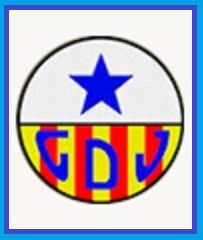
CE Jupiter -
Spain's Third Scots Club
In the Barcelona suburb of Poblenou there is to this day a club that is in essence the still thriving legacy of the short-lived, long-defunct but for the city's game crucially formative F.C. Escoces team of 1899, indeed of the pivotal influence of Scots on its football and, indeed, of standardised officiating, not just regionally but country-wide. Founded in 1909 by two Spanish-born but, through their lace-making and football-refereeing father, Pollokshelds by origin Mauchan twins, David and William, and originally with its own ground in the barrio and a Mauchan at right-half in its first official line-up that club is CE Jupiter. (Incidentally two more elder brothers were Scots-born, one also in Nottingham but in Catalonia all five would be footballers)
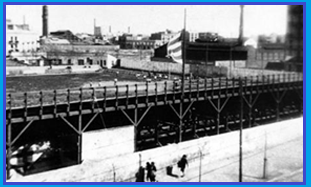
Now the club plays at the local, municipal stadium, with its club office on the corner and ground entrance just yards away.
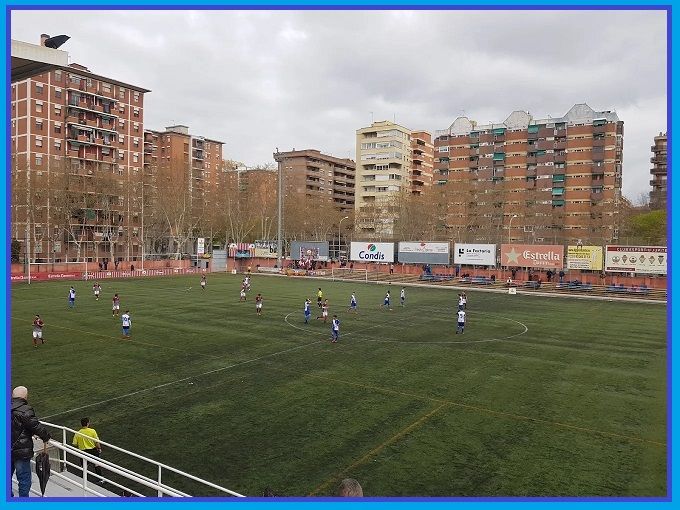
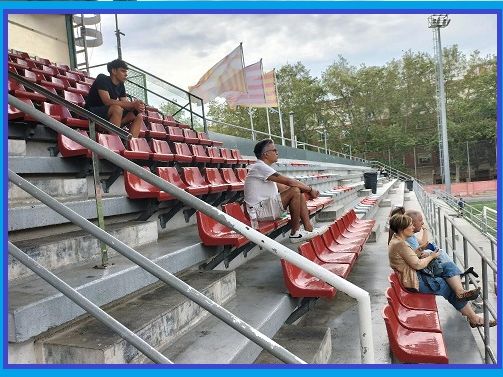
And it serves as the start of a stroll of a mile or so which, should you visit the Catalan capital, will take through what is described now as its Manchester but was much more Newmilns/Darvel, Paisley or even Nottingham, its early economy and thus football founded on first lace and then cotton-thread. The walk itself (click for more details) will lead you past La Escocesa, the then lace-mill and now arts-centre from which Escoces first emerged, a little further to turn down the ever elegant, tree-lined, local Rambla for an outdoor coffee or an horchata or ice-cream from the parlour, then a bar, where the club was formed, and even, should you wish, to the fine, still local Bogatell beach. - IPCW
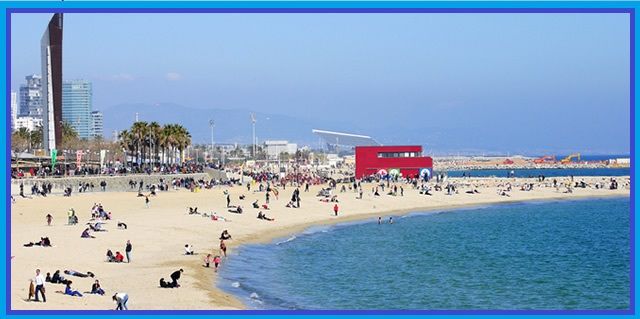
---------------------------------------------------
Stranraer
- and the Coming of Football to Scotland
Perhaps one of the most remarkable stories of the coming of football to Scotland, and one of the least known, is that of Stranraer. Founded officially in 1870 it is the third oldest club in the country. Only Queen's Park and Killy officially predate it and even then there are doubts, for which we have to thank not SFHG research but a unique piece of work, The First Thirty Years, preserved on the Internet from 2002 and by a John Boyd, of whom nothing more is known just yet.
In it he states that already by 1865, two years before Glasgow could even have heard of Queen's Park, Stranraer, The Toon, already had three clubs - Lodge, Sheuchan Swifts, Sheuchan being a main street to this day, and Waverley, Waverley Lane being another - and perhaps even a fourth. Moreover, that same year a recorded game was played, 11-a-side, presumably to some form of agreed rules, away against Cree Rovers in Newton Stewart. It was made possible by the new-fangled railway and was not only with a clearly organised, representative "town" team but one for which we also have the on-field line-up. And that was a dozen years before Stranraer F.C. first entered the Scottish Cup in 1877, to be beaten in the First Round 6-0 by Queen of the South Wanderers, and a three-quarters of a century before it joined the League, with many a game played in between. They included a second early one, in about 1870, as also the three Toon clubs combined, this time versus the 3rd Kirkcudbright Volunteers at Palmerston in Dumfries, and 1875 against Cree once more, for both of which again we have knowledge of those taking part.
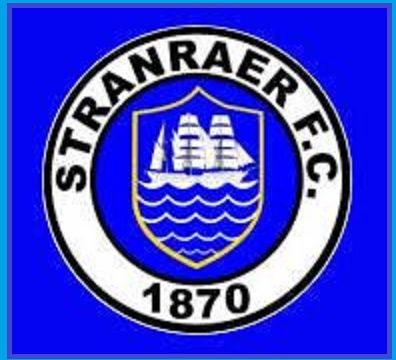
In 1865 in goal was Cluckie. Then there was Warren and Simpson, Bell and T. Alexander. The captain was McQuiston and he was said to be joined by R. and G. Porteous, Craig, Nish and a second Alexander, P. Furthermore, with amazing continuity, Cluckie remained in goal in 1870 as, in the wider team were also Warren and Simpson, Bell, now J.B. Bell, McQuiston, still captain, Nish, the Porteouses, one, Robert. And they eight remaining were joined by Mackie, Fraser and Mckinstrae. Moreover, even in 1875 Warren and Bell were playing on still.
However, between 2002 and now something has changed and that is the explosion of the Internet itself and, more-to-the-point, the availability of resources on-line, notably ScotlandsPeople and similar. It has meant that we can look for and at the names of provided in the line-ups, specifically in the 1861, 1871 and 1881 censuses and for males aged between, say, fifteen and thirty. The results show almost all appear in Stranraer itself and surrounding nearby villages. And some of the names we can even be more specific. McQuiston was twice the captain, none appears on the local record but there is one on Glasserton and it is an Ayrshire, most specifically an Ayr name. So where had he learned the game? The Cluckies and Porteouses were Leswalt and Kirkholm people. And then there is Bell, J.B. Bell, a stalwart of the local game for at least a decade, and here we have perhaps a specific candidate - John Bell, recorded with a middle-name of both Broadfoot nd Bradhurst. He was born in 1848 in Stranraer, so was seventeen in 1865. He became a joiner to trade. In 1871 still in the town he married Isabella Boan, who actually lived on Sheuchan St. at the time, although he gave an address in Glasgow. And it was there in Govan from 1872 that all their five children were born and from where by 1881 they all disappear from the records.
But the question remains, how and why was football, but not necessarily yet the Association variant, played so early in Stranraer and indeed Newton Stewart and Dumfries? Where did it come from? And answer there is as yet none. Unless it, as the Anwoth story (See above) from two hundred earlier tells us, it was and remained indigenous.
In fact the nearest we come in South-West Scoland to any connection is the private work done by the laudible Richard McBrearty of the Scottish Football Museum and posted on his personal blog, The Origins of Football in Scotland. He states that John Douglas, the Marquis of Queensberry, and incidentally father of Lady Florence Dixie, later the first sponsor of the women's game (See below), returned to his Kinmount estate by Annan from Cambridge in 1866. And that same year he set up under Association Rules, Kinmount F.C., which in itself is literally game-changing because Queen's Park by a year then ceases to be the first "soccer" club in Scotland. Furthermore, three more teams, Annan (formed 1867), Springkell (before 1870) and, importantly for the purposes of Stranraer, Dumfries (1869/70) then emerged to join Kinmount by the end of the decade, with games played in 1868 between Kinmount and Annan, presumably to FA rules-ish but 15-a-side, the first at least with the Marquis in the team and scoring.
----------------------------------------------------------------------
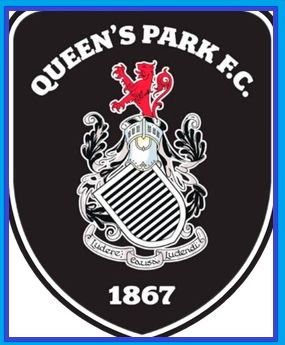
Passing-Off -
Queen's Park & Glasgow's Sheffield Quandary
There is, if you are into proper football history, an interesting spat going on Down South just now with a de facto extension to Glasgow. As you may know, indeed have read here, Sheffield has an on-going campaign for World Heritage status as the home of football, the problem with which is that it tends to play a bit fast and loose with not facts, far from it, but words. When it talks of its "football" it does not mean today's Association game but Sheffield Rules, which can, indeed should, be seen as a stepping stone amongst others, albeit one of the most important, to the modern game, but not more.
Sheffield Rules existed from 1858 until 1877, when it and London's Association Rules had an accommodation with several of the former's regulations being incorporated into the latter's to its great improvement. Sheffield was also the source of the first working-class football team, United Mechanics in 1865, and thanks to an excellent, recent paper from contributors with literally, kudos in the game, academic and expert, it should now be accepted that the Yorkshire city's variant also had positional organisation and passing.
So why the spat or rather spats? First of all there is the Wilson wrangle. Eminent football historian, Jonathan Wilson, a fallible man as all men are, stated some time ago that the passing-game derived from Scotland and therefore post-1871, effectively 1872. Since then Sheffield have expended much heat and light in trying to disprove the claim and have succeeded. Knowing Jonathan a little I am sure he will therefore willingly concede, if for nothing else than the basis of what is the point in having a mind if you cannot change it. But behind the expenditure there appears to be something else - a Tyke frustration even anger with London, writing as a Scot entirely understandable, and the FA, which on the face of it is both an entirely English thing and attempt to replace Southern Anglo-entitlement with its North-English equivalent.
Now, frankly, from a Scots perspective that north and south England are at loggerheads doesn't matter a jot, to which the only thing to be asserted in addition is that, whether from Sheffield or North Britain, as they quaintly used to call us, and like it or not, Association football, Soccer, the game we play today in its earliest form was invented, a result of another spat, in a bar London's Covent Garden. But what Sheffield's researches do cause is a problem not for Scottish football generally but the position of early Glasgow football in particular.
As Sheffield have now been shown to have first used position and passing then it could not have been Queen's Park; unless, with no current evidence of cross-fertilisation, it was a case of great minds think alike, although not chronologically. Sheffield was first. Thus, since Queen's Park has ever since used its "invention" of passing at and as the core of the game as the reason that Scottish football on-field proved superior for the next decade and half, whether it was playing teams from London or Sheffield, that simple assertion cannot be correct. There must have been something in addition, i.e. either Queen's Park did it better, albeit that even in Scotland it and, perhaps worryingly for the SFA and others, Glasgow football more generally had been overtaken within just four seasons and would continue to be successfully challenged so for ten more, or there was another factor. The questions are, what and why with other ideas long available and just as long ignored?
----------------------------------------------------------------------
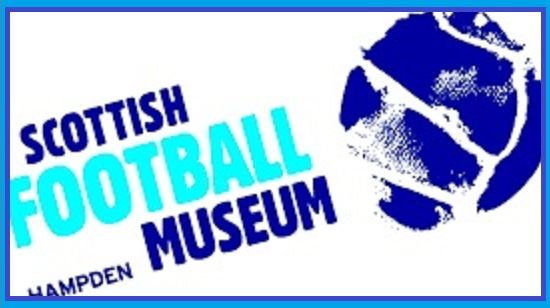
The Scottish Football Museum
what's the plan?
Completion or Closure?
That the Scottish Football Museum (SFM) is a good thing there is no doubt. No country in the World - and this is not an over-statement with the comparisons including England - has a football story as comprehensive and pivotal as ours. Globally "No Scots, no Soccer" is not an idle boast. Indeed the account should be a source of factual pride, if only it were told in full, and by that we mean the Association game from 1871 and the indigenous ones from far earlier still. And here the Scottish Football Museum has much to answer for.
It would be little exaggeration to say that the SFHG was founded in 2022 on concerns about the telling of the history of Scottish football, of football history in general and the role the SFM and ultimately its master, the SFA, have played in both. And those concerns have not gone away. In fact they have in the interim increased, even prompting a recent letter to the Chairman of the museum's Board of Trustees, cc-ed because of not just its national but also international implications to The Scottish Government, to outline some of those worries and to offer help and our expertise in overcoming them. The letter is "pictured" below. To read both pages of it simply download and enlarge in your favourite image editor.
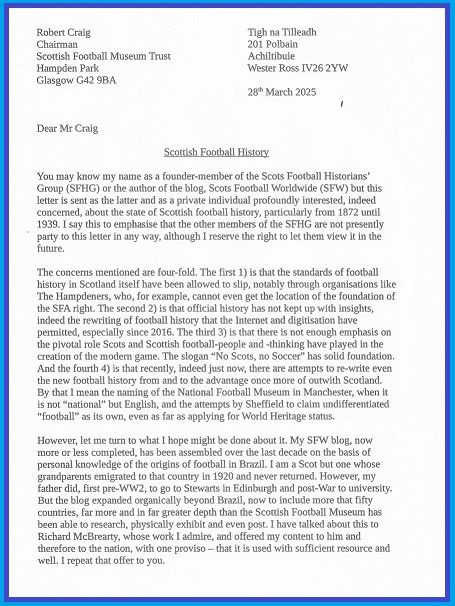
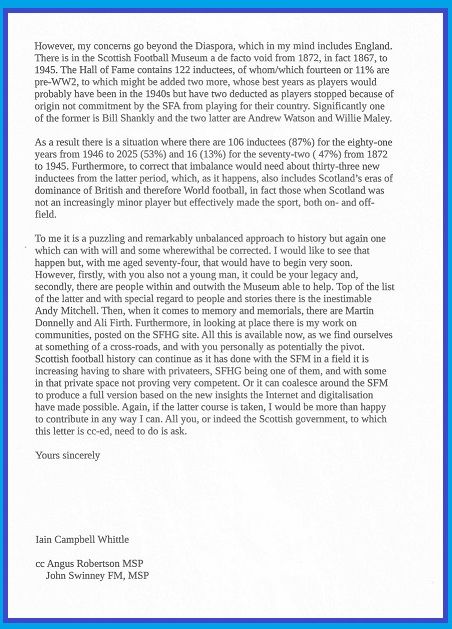
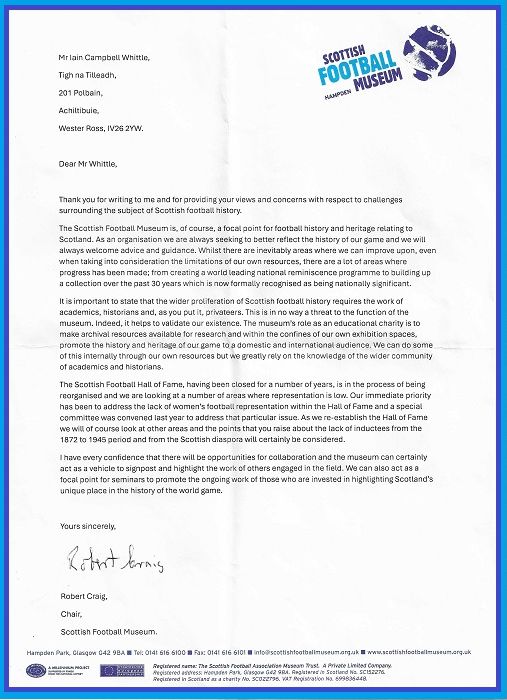
And to the points made in the original letter and the questions posed a very polite reply was received, also pictured. However, whilst it included a laudable commitment to more on the history of the women's game there was no answer to the vexing question of what has happened to coverage of the and then our men's game before the Second World War and most obviously in its Golden Era from 1872 to 1934.
In fact the response in its entirety is more remarkable not for what it includes but what it does not - real investment in the new possibilities digitisation offers to historical study and, in the future, in the scope of the Museum itself.
Which, of course, begs the question, is the real, long-term plan to shut the place, be it to the public or altogether? Certainly, if funding not just for day-to-day but beyond continues to be curtailed, innovative research will be restricted, left to ageing amateurs like us or to perhaps exploitative charlatans. And the facility too will come under pressure with it unlikely numbers through the doors can from Scotland alone be sufficient even to cover costs. But there is an alternative. Scotland gave football, its specific football, the foundation of the modern game, to the World. It thus creates the opportunity not for indifference and certainly not closure, tacit or otherwise, but, where the real thing actually started, for a properly-funded World Centre for Football Research that is not simply following the pretence modern money to Zurich, Lausanne or increasingly Saudi or similar. - IPCW
----------------------------------------------------------------------
"They say you die twice"
1) Inverness-style
It is easy to lose sight of individual stories in the whole landscape of commemorating those of influence on this site. But the most important point is to remember that each of these people was involved in the world’s greatest game and many, indeed most, were talented enough to represent their country, the dream of almost every school-child and yet almost impossible to achieve.
Whilst the prevailing attitude has always been that players of more recent times and memories are the greats, the field that we are in stretches back to the foundations of the game, and the many largely forgotten players of that era, again many of whom had only a fleeting moment of glory.
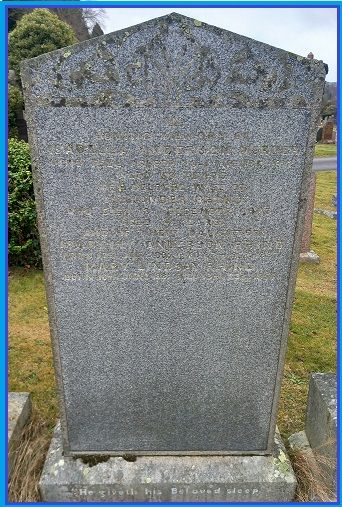
Alex Rhind
This was why on a very cold April morning, I was in Tomnahurich cemetery in Inverness to visit the graves of two local players who are probably unknown to nearly all of the city and yet both have incredible stories to tell. I won’t go into these here as the information can be found elsewhere on this site. The earliest is Alexander Rhind, who only got a single cap for Scotland – there are many players in that category, but his only cap was in the first ever international in 1872. Of course, there is no mention of this on his gravestone and there is nothing in the vicinity to mark it either. The second player is Dr John MacDonald – again, only one cap, but, whilst studying in the Lallands, the first player to represent this country internationally at two different sports, as he had been selected for Scotland at cricket even before his football cap. Moreover, he would become once back in the Highlands a man of renown for his medical career and of great sporting influence locally.
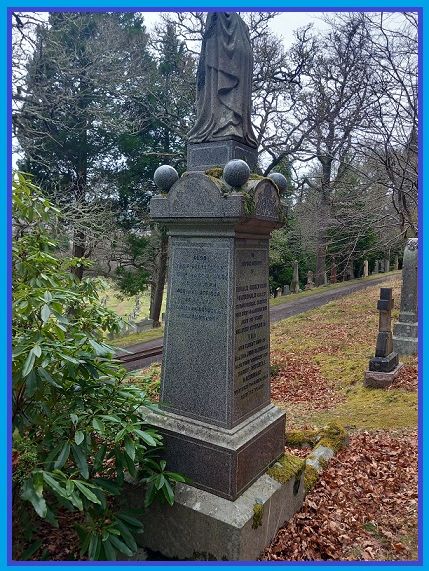
Dr. John MacDonald
So there we have it again – two players with remarkable stories from one place, buried within a five minute walk of each other in graves that show little indication of being maintained and where there is nothing to indicate their contribution to the game to anyone who wanders past. Indeed, the cemetery itself doesn’t appear to have a map anywhere (even online), and there are no signs to indicate what the sections are within the cemetery – is there no local pride in celebrating the achievements of these people?
They say you die twice – once when you pass from the earth, and again when your name is mentioned for the last time – so visiting their graves and writing about them keeps not just the memory alive. - AF
2) Belfast-style and Jock Smith
Five players, who represented Scotland are buried in and around Belfast, (as well as four Scottish-born players who represented Ireland, but then they are a different story). Three, Robert Parlane, Sandy Kennedy and John Deakin, are in the City cemetery, with sadly the first two graves, those of the two earliest pioneers, badly unloved. One is not even marked with a stone and is just a patch of grass. Then there is also a fourth in Dundonald; that of Jock Hutton, a player who won ten caps with again the plot in disrepair, although in this case the family know the situation and did plan to tidy it up. And finally there is the last resting place in Roselawn Cemetery of a second Jock, Jock Smith, a Hutton contemporary in football, although they would never played together internationally, and in life. Indeed there is even a possibility that the former, who died in 1973, might have been at the latter's funeral in 1970.
As with all four of the others, more details of Jock Smith's life can be found on this website with it simple enough to say that he lived something of the "dream". Whilst receiving just a single cap it would be in a creditable 1-1 draw in 1924 against England and alongside fellow Ayr United full-back, Phil McCloy. How many times before or since can it be said that there were two players from that club in the national team at the same time?
Now Roselawn Cemetery is the newest of the three. As a whole it is well laid- and marked-out. There is also not much in the way of overhanging vegetation so most of the memorials are in a good state, even with the passage of time. The graves are also easier to find.
And the Smiths' headstone is no exception, even over 50 years since his death, and just over 40 after that of his wife.
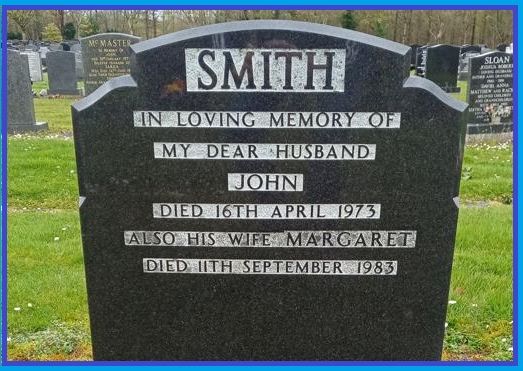
Yet we can't know if anyone else maintains or visits the plot, and so, just because we can, and as we do with others, we continue to place and pay a small tribute to him on the anniversary of his passing.
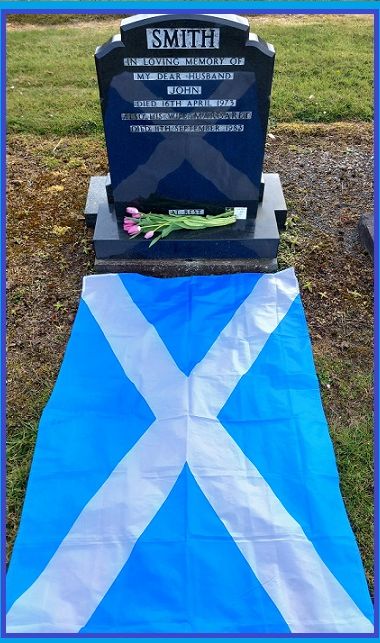
Afterall, they say you die twice – once when you pass from the earth, and again when your name is mentioned for the last time – so visiting their graves and writing about them keeps not just the memory alive. - AF
----------------------------------------------------------------------
The MacRaes of Eilean Donan
Feedback is important to a site like ours and in this case acknowledgement and thanks are gratefully extended to Michael Patterson, who read our previous pieces on Stuart MacRae, made contact and now has supplied us with far more information that we could possibly have accessed otherwise.
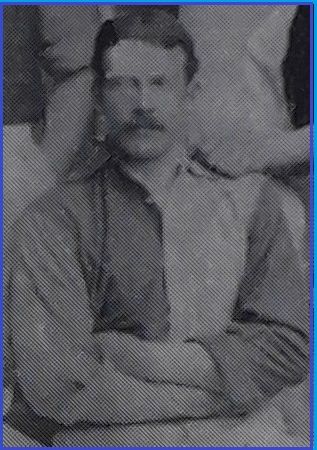
Stuart MacRae - Notts County
(Thanks to Michael Patterson)
So for those not yet in the know, here is a reiteration of who precisely was Stuart and what and who are the MacRaes of Eilean Donan. The simple answer to the question about the man himself is that he was a player for Notts County in the first half of the 1880s, a half-back, who went on also to play internationally. And the more convolut-ed explanation of the reference to Eilean Donan is that his family, as MacRaes specifically of Conchra, was the one that some might say restored and others facilitated the creation of the castle, which since has become iconically Highland.
In fact both interpretations of the story can be said to be true. There was a ruined castle on an off-shore rock in Loch Duich, it lay on the edge of Macrae of Conchra clan territory and the heads of the clan would seem to have the right to do with it what he wished. And that, once he had bought it in 1911, John Gilstrap MacRae, younger brother of Stuart, certainly did or at least allowed architects, initially, again it is said, an Italian one and then George Mackie Watson, to do to great, if not necessarily historically-correct, effect.
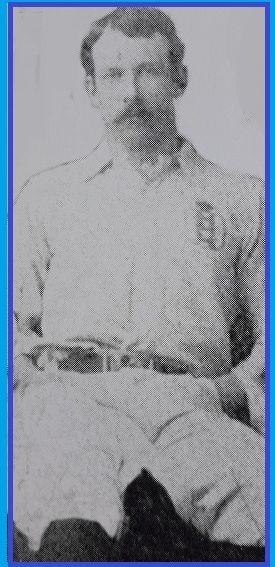
Stuart MacRae in England Strip
(Thanks to Michael Patterson)
But back to the football. Stuart MacRae was a gifted all-round sportsman. He would later be a founder and the first president of Newark Golf Club, Newark being the town where he first entered the beer-malting trade. At the club a trophy in his name is still played for. Moreover, as a younger man, after rugby-only at school in Edinburgh, he seems to have taken to the beautiful game with equal ease. Indeed, having been born in 1855 and with Newark F.C. founded in 1868 and Notts County six years earlier still he was from his arrival in Nottinghamshire in the late 1870s not short of outlets to demonstrate his developing, round-ball abilities. And those skills were even enough for him in 1883 and by then an experienced twenty-seven-year-old to be called up to international duty.
Yet it would not be for Scotland, the birthplace of his parents and their and also his eventual place of burial, the reason being that Stuart had been born in India and until 1887 the sub-continent, indeed the Empire, was "considered" England. It was an interesting concept that continued until in 1887 a change was forced through and by the Irish. However, by then it would be too late, despite our man even being a Gaelic-speaker, a member of the elite Royal College of Archers, since 1822 the sovereign's official bodyguard in Scotland, and as eldest son the heir to clan-chieftainship his father held.
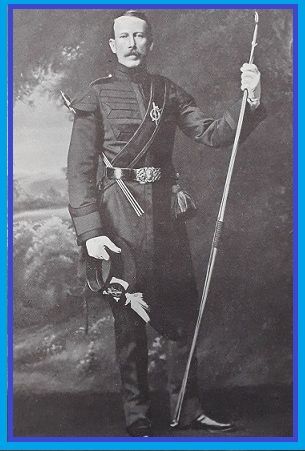
Stuart MacRae -
Member of the Royal Company of Archers and
Clan Chieftain of the MacRaes of Conchra
(Thanks again to Michael Patterson)
However, in purely footballing terms there was still more to come. England as a team was in tactical transition. It had, since being almost repeatedly beaten home and away by Scotland, for a decade tried to ape the Scottish 2-2-6 formation. And MacRae would play in 1883 against all three of the home-nations on the right side of a two-man half-back line. Furthermore, the next in 1884 it continued with the same set-up for the encounter with the Irish but for the one against Scotland there was a change. In it England fielded a three-man half-back line with MacRae now the centre-half. It was not the first time 2-3-5 had been employed at international level. Wales had first used it in 1882. But it was a first for England and both the first and last for MacRae himself. Later that same season he broke his leg and would never play for the "Saxons" indeed the "Sasannaich" again.
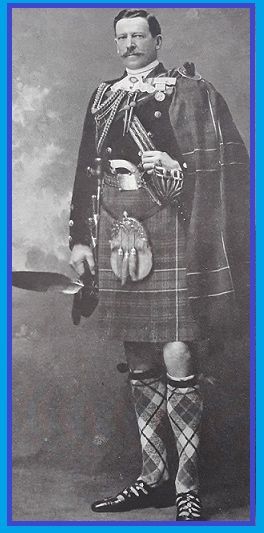
John Gilstrap-MacRae
(Thanks to Michael Patterson)
Stuart MacRae would die in London in 1927, a wealthy man from the malting business he had married into. But that would be the end neither of his nor of Eilean Donan's stories. On his passing his body was carried to Kyle of Lochalsh by train and then overland by his clansmen to the clan-cemetery at Clachan at Duich's loch-head. And thus he would never see completion of the castle. That did not happen until 1932. But at least it was five years before the death in the castle itself of younger brother, John Gilstrap-MacRae, the actual instigator and overseer of the project. He too had been Indian-born, had married the daughter of an English textile magnet but clearly considered himself to be a Scot, indeed a Highlander, as demonstrated graphically by his photo and his burial too at Clachan. - IPCW
----------------------------------------------------------------------
People-History - Argentina and Iceland
An Appeal for Information
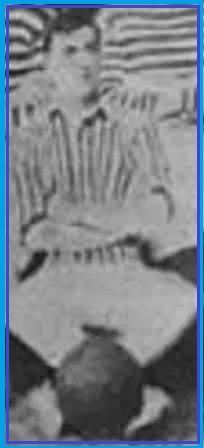
Argentina's Alexander Lamont in 1891
Sometimes paper and on-line research can only take us so far and both early football in Argentina and Iceland are cases in point. In such situations we first reach out to the countries in question for help and it is often forthcoming. But here blanks have been drawn and so we look for other sources both abroad and at home, hence the appeal. What we are looking for is to be contacted by anyone in Scotland or, indeed, elsewhere, who might recognise any of the photos above of Alex Lamont and James B. Ferguson or have family histories that might include either of them and in Iceland a third name, Frank McGregor.
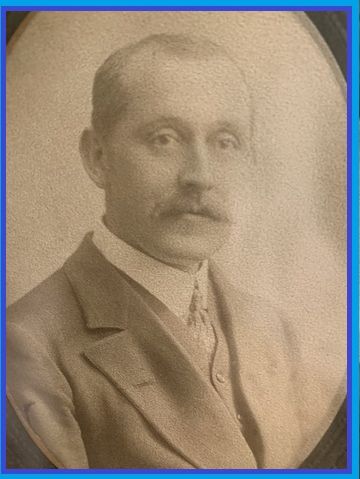
South Africa's Alexander Lamont
Alexander Lamont - the organiser in 1891 of Argentina's first Football Championship was the Scot, Alexander Lamont. He also captained the winner of the competition, St. Andrews (See photo). He was then in 1892 to play mainly for the Quilmes club but in 1893 was still on-field and also Secretary of the league's permanent, second iteration. However, in 1894 he left The Argentine seemingly forever with the possibility that he went first to Brazil and perhaps then to South Africa. An Alex Lamont of more or less the right age died and was buried in Johannesburg in 1927. His family, now in Australia, have supplied the photo above but neither they nor we know much about what happened in-between. Can you help?
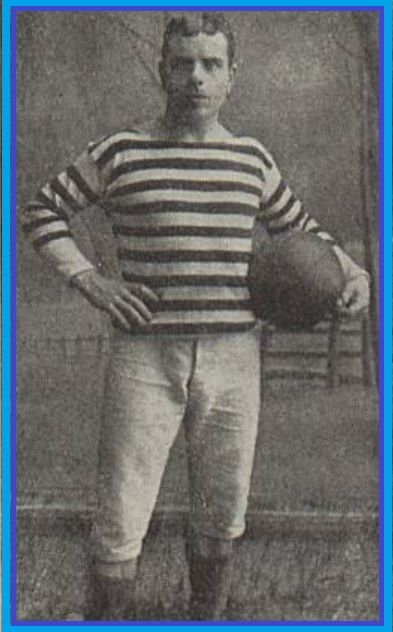
Iceland's James B. Ferguson in 1895
James B. Ferguson and Frank McGregor - football is said to have arrived in Iceland in 1895. It came in the form and feet of James B. Ferguson, said at the time to be aged twenty-two, to be from Glasgow and in Reykjavik, working for a local printer. There is even a photo, football under arm, of him as he introduced not just "soccer" but also gymnastics.
But that is it. There is no hard indication of his story before or after 1895 just as there is none of a second Scot, Frank McGregor, said to be an Engineer and recognised as the founder just four years later in 1899 of Iceland's first football club. KR. Again can you help?
----------------------------------------------------------------------
The Plight of Huelva, Spanish "Mercantalizacion" and a Scottiish Counter
Spanish football has two Scottish clubs - Recreativo de Huelva and Aguilas. Both were founded by Scots and one, Recreo, is in real trouble. It has debts of E20 million (£17m) and would probably have gone out of business the best part of a decade ago but for two measures. The first was that in 2016 it was "expropriated", i.e. removed by law from the hands of commercial owners into those of the city by Huelva Council. The second is that it, as the oldest football club still playing in Spain, the doyen, the equivalent of Queen's Park, was granted a status translated as an "Asset of Ethnological Cultural Interest" (AECI). In other words it was made a national treasure, something that again protects it from what in Spanish is called, with biblical overtones of exploitation, "mercantalisation", what we would call over-commercialisation, but with whatever term is used fans simply side-lined.
And as such it is not without potential parallels, certainly in English football, and to an increasing extent in the Scottish game. Does Dunfermline really have to be owned by two Las Vegas businessmen? How long are they and others going to last in the face of potential, global recession?
However, that is not the story just now and it, with two strands to the tale, does not end there. The first is that other Spanish football clubs are also interested in AECI status. On the list are Valencia and Levante but top and just fifty-five miles away is Huelva's Andalusian neighbour, Sevilla. The United Supporters of SFC have already begun the process and fans of Scottish clubs might take a leaf out of its book, with possibly Historic Scotland and the like the places to start. That is unless football is not culturally high-brow enough. The Minister not of sport but Culture might think about it too, starting not at the top nor in the ever rapacious, big cities but with the wee clubs outwith and country-wide. A Golspie or a Greenock, a Vale of Leven or an Arbroath perhaps.
And the second takes us back to Spain. Earlier this year the commercial company, the one that built up much of the debt, managed to get the courts to reverse the "expropriation", despite the now-released "commercial" president having been jailed for falsifying the club accounts. So, whilst the reversal is not yet a done deal (it will go to appeal) perhaps there is something that can be done here meantime as a gesture of friendship, indeed round-ball fraternity, club to club, even the SFA to club. After all did not Huelva begin with working-class Scots wanting to kick a ball around in exactly the same way as at Forfar, Brora, Stranraer or, dare I say it, Rangers, Hibs or Aberdeen? Moreover, in today's football money E20 million is not a lot of lucre; just an averagely good player or two for the bigger boys.
So the suggestion is that Scottish football find a way a supporting what is effectively its own history by putting out an appeal under the auspices of fellow clubs, those of the SFA, or perhaps even the Scottish Government, to raise the money and gifting it via the city council to what would cease then to be just a Spanish national treasure but become an international one. Perhaps even Scottish football or even Government might see itself to buying the Recreo ground, the Nuevo Colombino, for, say, £17 million, and gifting it to the club in perpetuity or, say, as long as sport continues to be played there. After all, it is not as if there is not a precedent, and a Scottish one too. In 1915 John "Juan" Gray completed the purchase of a piece of ground and with that same stipulation of sport in perpetuity gave it to the club he had formed and coached to invincibility and to the town where he had lived and prospered for the previous decade and half. The land is now El Rubio stadium, a little piece Caledonia in Murcia. That town is Aguilas and Gray was born in small-town Kelso and raised in big-town Edinburgh.
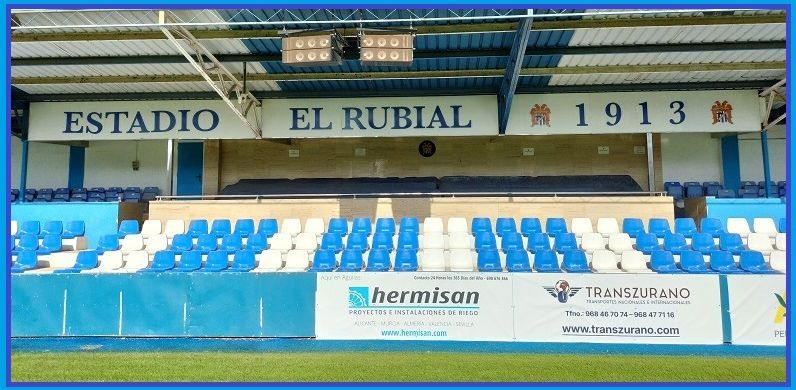
Oh, an alternative thought. Why can't the ones who started all the off by first taking those footballing Scots to Southern Spain, i.e. the Rio Tinto Mining Company, now the multi-national conglomerate, Rio-Tinto, dip into its small-change jar and simply pay the bill. It could look on it as a wee bit of compensation for, well, whatever. - IPCW
----------------------------------------------------------------------
More Corrections!
The Glasgow Football Tour is a thoroughly good and laudable idea. The city has an outstanding football history and Lindsay Hamilton does a largely great job. So to show our approval just click on the logo below, be taken to its web-site and book up now.
But it would be good, first, not to exaggerate the role of Glasgow to the unnecessary detriment of the rest of Scotland and because doing so, in the end, makes the city as a whole look, well, foolish. And, second, it would be better to get known facts checked and reported correctly.
In a video posted on You-Tube Lindsay walks through the British Cemetery in Buenos Aires in Argentina and to the grave of Alexander Watson Hutton. We know it well and personally. And as she walks she states that AWH was a Glasgow-man. He wasn't. He was born there, but was the child of Fifers and brought up from a wean in Edinburgh. He learned all his football there. She also says he founded the Argentine Football Association (AFA). He did not. The organiser behind it was the same one, another Scot, Alex Lamont, as in the 1891 Association (of) Argentine Football (AAF), the progress of which in 1892 was halted probably only by the death of its president, F.L. Wooley. And as to Alex Lamont himself, he in 1891 had played for the St. Andrew's team, which had little to do with the St. Andrew's school in Buenos Aires but did with the St. Andrew's kirk, which is still there today and thriving. And finally it is said the the AFA is the third oldest league in the World. Once more it is not. The AAF was the third league globally. The AFA is the World's third football association outwith the UK.
Furthermore, in a video short about the origins of football in Sevilla in Spain Lindsay states that Spanish Sevilla Futbol Club is the same as the British Seville Foot-Ball formed in 1890. It is not. The latter lapsed. The former replaced it more than a decade later. And she also asserts that it is Spain's oldest football club, again not so. Formed in 1889 Recreativo de Huelva, is officially the country's oldest club still existing, whilst the first club was the now long-defunct Rio Tinto FC, formed probably in about 1882, when a team from Minas de Rio Tinto, but not necessarily yet the club, played a Huelva eleven, the town and the city, something Wikipedia does not seem to understand, being forty-five miles apart. It was a game made possible by the British Rio Tinto company having employees in both places - mining-town and port - with the two connected by a then newly, company-built railway. - IPCW
---------------------------------------------------
Davidson and Doig
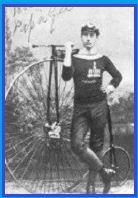
George Davidson, with the penny-farthing, on which he rode to victory. It is now in the Genoa FC museum.
There are few places - villages, towns, even cities - that can boast having been almost simultaneously the birth-place of both a Scotland goalkeeper and the Italian-cycling road-racing champion of 1886. In fact there's only one and it's Letham in Angus. Indeed the footballer and the "pedaller" were born within yards of each other in The Square in the centre of the village, Ned Doig, between nation's sticks from 1887 to 1903, in October 1866 and George Davidson just a year earlier in September 1865. Their births would even be signed off by the same registrar, a Thomas Macbeth. Moreover, both theit
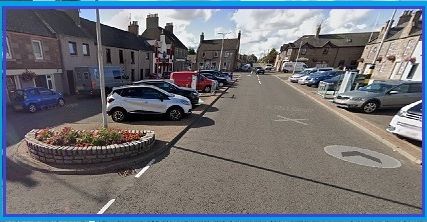
The Square, Letham
mothers were local girls so would have grown up together, this whilst fate would see both their sons buried abroad. Doig would die in 1919 in Liverpool and his grave is in Anfield Cemetery.
Davidson would be interred in the family mausoleum in the Staglioni cemetery in Genoa, he having passed away in 1956, in nearby Rapallo. And it would be with two more, notable feathers in his Italian sporting cap. In 1946 he had founded the Milan-Rapallo road-race, still run to this day and a major part of the country's cycling season. Furthermore, having been
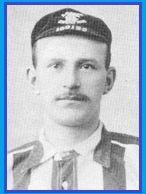
Ned Doig, Scotland's goalkeeper for a decade and a half, 5 caps either side of non-eligibility from 1889 to 1896 due to playing in England.
already on the board for a couple of years, for finding the club's second ground, the old cycling track, in 1913 he stepped up to become President for the best part of a decade of, as it is still officially known, the Genoa Cricket and Football Club. And it would be he who saw the club essentially turn professional and thus more or less force first northern Italian football to follow and, in time, the national game too.
So, with statues of Bon Scott and Peter Pan in Kirriemuir, might not Letham consider something similar for Geo Davidson and Ned Doig? - IPCW
----------------------------------------------------------------------
Projects
The Joseph Taylor Grave
Restoration work on the grave of Joseph Taylor has been completed. And it and a new, marble plaque were unveiled on 13th April by two of his great-grandsons, Colin and Alex Taylor, in a ceremony at Glasgow's Cathcart Cemetery, also attended by SFHG members. The Daily Record was there too and the following day it published the excellent "Memory of Scottish football legend protected after revamp of historic grave". - AF
More Notable Research and Restoration So Far by Others with SFHG Input
Where others are
From the World's first official football international played in Glasgow in 1872 and the beginning of the Second World War almost six hundred Scots-born players turned out for the national team plus a number who were born elsewhere. Most lived out their lives on and are buried in Scottish soil and one of our aims here at the SGHG has been to trace and track them and their last resting places so that the contributions of as many as possible to our national game can continue to be recognised, honoured, marked, maintained and, perhaps, become places of quiet pilgrimage. To that end we begin with the seven cemeteries/crematoriums, where more are buried or were cremated than any others. They are in Scotland:
But, of course, as has been the way of Scots from all walks of life movement abroad has been frequent and in many cases permanent so trace and track is not confined to our immediate frontiers. Indeed, three English locations stand out as the final resting place, the burial or cremation, of a remarkably large number of our own. Those places are:
To see who is to be found where simply click on the individual resting-place and then, for their personal stories, on the "People" list below.
and here is.....
The dilapidation of the graves of Scotland's international footballers is an on-going problem. In part it is neglect but mostly simply climate and weathering. The only ones to avoid the effects is the small number that are unmarked and deserve recognition. So the SFHG group, mainly through the unstinting efforts of founder member, Martin Donnelly, having already created the most comprehensive listing of the last resting-places of those who represented us on the football-field from 1872 until the Second World War, a list that will be constantly up-dated until complete, has also turned its attention to the dozen most urgently in need of the same. Each will require up to £5,000 to carry out the necessary works and we invite you to contribute. It can be done through the Honesty Box below. |And the graves are:
The Grave Situation
David Wotherspoon, Southern Necropolis, Glasgow, and Billy Mackinnon, Westburn, Cambuslang
- both graves unmarked
- West Kilbride, Ayrshire, condition of grave declared to be dangerous.
- Methilmill, Fife, gravestone unstable
- Lochgelly, Fife, gravestone crumbling
Andrew Richmond, Craigton, Glasgow and John Gow, Cathcart, Glasgow
- both gravestones facedown and therefore unreadable.
Eddie McBain, Hawkhead, Paisley and John Goudie, Hawkhead, Paisley
- gravestones laid flat since last visit.
Willie Berry, Western Necropolis, Glasgow, Bobby Templeton, Kaimshill, Kilmarnock and Tom Jackson, Eastwood Old, Glasgow
- gravestone/cenotaphs in two pieces.
----------------------------------------------------------------------
History
Home and Beyond
First there is a number of thoughtfully compiled and curated Scottish club archives that are always an excellent resource. For a list of those known to us and for your ease of access, click on;
plus, as an attempt to cut through the hyperbole of the over-vested interests, not least parochialism and even blinding nationalism, and to be use in conjunction with,
The Timeline of Association Football
there is our new and always developing,
SFHG Supplementary Football/Scottish Football Timeline
and then, on 30th November 2022 the Scots Football Historians' Group became "live" and work began. The date was deliberately chosen, for two reasons, both symbolic. The first is that it is St. Andrews Day, with Burns Night one of two that are uniquely both Scottish at home and Scots elsewhere. The second is that, as the twenty-second World Cup with its sixty-four international encounters is taking place three and half thousand miles away, precisely one hundred and fifty years ago the first such meeting of footballing nations took place and in Scotland, in Glasgow at the still existing Hamilton Crescent cricket ground. Indeed, although it was a 0-0 draw, the first of many since, it can easily be argued that without that specific game none of what is taking place over a month in the Middle East would be happening at all. Whilst the birthplace of Association Football, forever England, could even then have raised a representative team in a moment, without opposition the game might have withered on a still very slender vine. That it survived is very largely due to a group of eleven young men, amateurs all, a Glasgow-suburbs club team in essence, who were ploughing a very lone furrow North of the Border, which took on the challenge from the South, were expected to be dubbed, with tactical nous acquitted themselves remarkably and instead sparked an explosion in enthusiasm that continues to this day worldwide. Those eleven young men were,
William Ker and Joseph Taylor,
James Thomson and James Smith,
Robert Smith, Robert Leckie, Alex Rhind, Billy Mackinnon, Jerry Weir and David Wotherspoon
and with them the story of the SFHG begins. Over the last few years through the worldwide research of a small number of thorough football historians in Scotland and elsewhere a deeper understanding and therefore an alternative interpretation of the history of the "Beautiful Game", of Soccer has emerged. There is no doubt that Association Football was an English invention, an amalgam of several traditions and codes from various parts of that country. But it was in large measure not the versions, albeit to the same rules, that became firstly that of the working-man and was within two generations taken round much of the World and within little more than a third to the entire globe. That was the then very much pre-eminent "Scottish Game", the seeds of which were actually sown on that day at the very end of November 1872.
We know, through research old and modern, where all of the "Class of 72" were born. They came from a number of corners of our country. We know where all but one of them rest, five in home soil from Cambuslang to Inverness, five like so many of our fellow countrymen in foreign fields, England, the United States, Australia and South Africa. But each one deserves to be properly recognised and physically honoured as a group and individually and that at least in spirit that is what we did last evening. In these modern times where communication is more often than not virtual we all sat down together for the first time and had a dinner to mark the importance of the event of precisely a century and half ago, all those in football that have followed on since and what might be described as our formal foundation. And we did it in the presence of special guests, Colin and Alex Taylor, the great-great grandsons of Joseph Taylor, on the right of the unprecedented full-back pairing in that first Scotland team and later President of the club team that formed it, not the first but arguably the footballing World's most important club team, Queen's Park.
But, of course, The Spiders, its players and Hampden were not alone. There were and have been many other players, officials and administrators, locations and events, individually and which we have linked.
People
Just under six hundred Scots have until the Second World War, the football history, in which we are most interested, played for the national team. These were days when international games took place annually but in nothing like modern numbers. Today Kenny Dalglish holds the record for appearances with 102. But then it was Alan Morton with thirty-one and he had an international career that lasted twelve seasons; just one of the stories that we consider still worth telling. For others, click HERE.
Places
It can never be said that Scots football, that is the game in Scotland, the Scottish game, and the sport as carried by Scots round the globe in head and feet, was a slow burner. It exploded both here and there. Within half a decade of 1872 and one club at home teams were numbered in hundreds and within another five years Scotsmen were playing and, importantly, organising football from Wales to Canada in one direction and China in the other. It was a contagion and stories of its spread are HERE.
Matches
The story of Scots and football, indeed of Scots and soccer more generally, is littered with games literally of pivotal consequence. The Glasgow international of 1872 was just the first. But there would be many others, several of those of the first World Cups to 1950 and in between many more, in Britain and Europe but notably also in Africa and the Americas, both South and North. As we and football historians around the World uncover more and more detail accounts are added to and can be found HERE.
History Trails and Tales
Across Scotland and, indeed, the World the origins and influences of Scots and their football at home and abroad are to be found everywhere. And sometimes they are in concentrations that can be linked to form a series of trails that will lead you both though histories and places that are unique to our and the World game, to us, ours, you and yours.
Scotland
______________________________________________
______________________________________________
(Kinross & West Fife, The Fife Coalfield, North Fife, The Fife Coast)
_______________________________________________
_______________________________________________
The Gareloch to Cardross Trail
_______________________________________________
(Alexandria, Renton & Dumbarton)
_______________________________________________
____________________________________________
(From Eaglesham to Hampden,
Kilbarchan via Paisley to the Clyde
and the Glasgow Southern Suburbs in-between)
_______________________________________________
______________________________________________
The Greenock (& Gourock) Trail
______________________________________________
______________________________________________
(Galston, Newmilns and Darvel)
______________________________________________
(Bellshill, Motherwell, Wishaw, Newmains, Cleland, Carfin & Holytown)
The Diaspora
____________________________
____________________________
____________________________
____________________________
____________________________
____________________________
____________________________
----------------------------------------------------------------------
Fact, Comment and Opinion
Andrew Watson and honouring, pride and sporting friendship
(But not in and from Scotland)
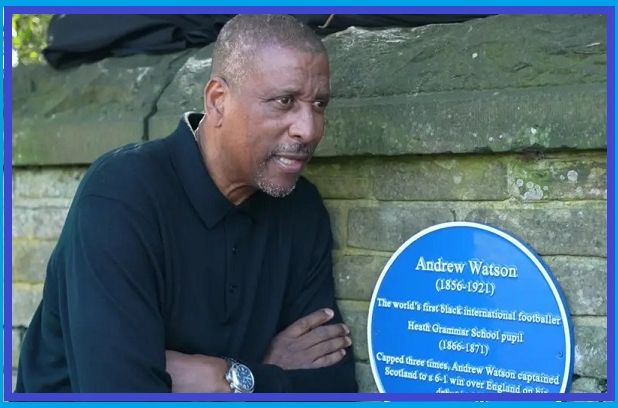

Recently in England, in Yorkshire the ex-England international, Viv Anderson (To quote Off the Ball "What a player he was!") performed the unveiling duties of a plaque celebrating the early schooling in Halifax of Scottish international, Andrew Watson. So far so good, indeed "superb". Pride is important. SFHG did its bit in raising the funds for the restoration of his grave. And it is, of course, more recognition of not just the first Black internationalist but also a Scot, Scotland captain even, and thirty five years before Brazil's Arthur Friedenreich and Uruguay's Isabelino Gradin and Juan Delgado and three years short of a century before Viv himself.
But there are problems. First, the piece by BBC Yorkshire marking the event, click here to read it, and apparently verified by BBC Sport, so the Big Boys, contains eight errors of fact, a couple minor, the others not. So the question is how did that happen? And, second, where in Scotland is an equivalent plaque, the bust or even a statue for an undoubted pioneer of multi-racial sport. And perhaps it is even time to think about two - one in Glasgow and, as a gesture of friendship though sport, some-thing that might be replicated elsewhere, a second funded by the SFA or perhaps our government in Watson's South American birthplace, Guyana. - IPCW
----------------------------------------------------------------------
So now the SFA doesn't know its birthplace!
God, this is tiresome but here we go. To quote an old friend, Glasgow's Football's Square Mile, "The Lion emblem of the Caledonian Railway can still be seen on Bridge Street: mirroring (sic) the emblem of the Scottish Football Association."
And it is used somehow to create and embellish a connection between a former company building and the SFA's foundation. In fact there is one, a connection that is, but, as precisely explained just yesterday, 13th March, by Andy Mitchell in his inestimable blog, see Scottish Sport History, it is not direct via the railway, emblem and all, but indirect and through a family of hotel and bar owners. the Dewars and a near-by but different building.
However, the result has been that the SFA, through not just sloppy but bad history has been party to a plaque to mark its own formation being put in the wrong place. So the question is quite simply, when and by what or whom might the error be corrected? - IPCW
----------------------------------------------------------------------
Tales of the Unlauded
If you reading this you are likely to be interested in Scottish football history and this country's leading role not just in the creation of the modern, Association game but its spread globally largely in the minds and feet of our countrymen. Indeed, if today's tele-game is your only interest or programmes of the ilk of View from the Terrace (VT) are your thing, you are probably wasting your time, unless, that is, you want to learn.

So, if you are still with us and reading on, this is the crux of the article. Scotland has a football history like no other country. Frankly, without us it is highly likely there would, instead of a World game, be little or no Association football anywhere. No Scots, no Soccer! Yet the back-story is untellt and the vast bulk of hundreds of players, officials and administrators, literally from labourer to professor, who made it happen remain un-lauded and their stories equally unkennt. Instead we have served to us contemporary dullness, by the Press, commercial television and not least the BBC.
But it is all not for lack by us at SFHG of trying. The papers have been contacted and we ignored. BBC Scotland has been approached with a package of fifty plus individual tales from Argyll to Angus and Caithness to The Borders, tales about your folk and the communities of you as licence-players. Yet, instead you are served VT Shorts and just three endlessly repeated, longer programmes, the story of Andrew Watson, uncovered by us with the funding of his grave restoration also by us, the story of Rose Reilly with her mixture of charm and determination in the face of the flagrant foolishness of officialdom and the Dougray Scott episode, a triumph for his family footballing history but through its historical sloppiness the object of somewhat mocking reaction, not least from Down South.
But it need not be so. If funds from us as volunteers to record them for radio or film them for TV are not available, the stories are. They can be serialised, be tellt, not least if you demand of existing media that they are or we all find a way to produce them for and release them on today's alternatives. Suggestions are invited. - IPCW
----------------------------------------------------------------------
Villa 1 - Braco 0.1
It may seem to be far too tight a score with the might of an English Premiership club, as it happens, just now and as it was at its start, captained by a Scot, pitched against a wee place in Perthshire. But then it is not a register of goals but current recognition.
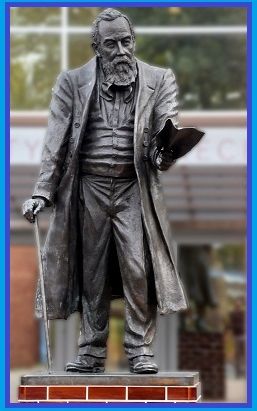
It is fact that Villa, Aston Villa, might well not exist but for the village, or rather a man from it, who first was to save the club financially and then a decade later in 1888 with a simple letter commercially not just make them but every other functioning football-, indeed, sports-entity, professional, amateur and globally, that plays in a league. That man was William McGregor, the son of a tailor, himself a draper to trade, who was born in Braco but devoted his working-life to Aston, to Birmingham, off-field, and never a player, to The Villa, and gave viability not just to modern football but English, indeed World-sport more generally. And for that in front of the Villa Park stadium that he saw first built in 1897 his statue stands rightly and proudly.
However, the result has been that the SFA, through not just sloppy but bad history has been party to a plaque to mark its own formation being put in the wrong place. So the question is quite simply, when and by what or whom might the error be corrected?
However, in his home country and county just now he remains, apart from a small info-sign in Braco's car-park, unaccountably un-lauded.
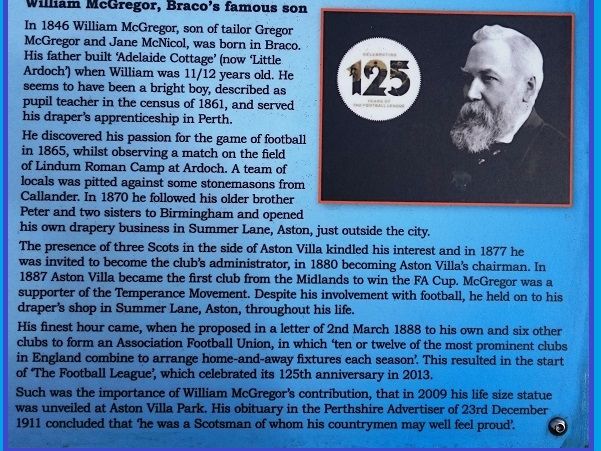
It is a situation that frankly grates, as it also does, with one notable exception, Brazil and Busby's Tommy Donohoe, with regard to the same dearth of recognition of, of pride in the many other Scots, who introduced and/or imbedded football on- and off-field outwith their homeland. However, it also began a train of thought that suggested a cost-effective way of rectifying the situation. If you are interested or just intrigued, click here for more.
---------------------------------------------------
Makem Myopia

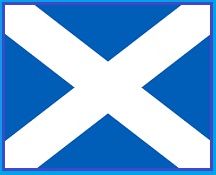
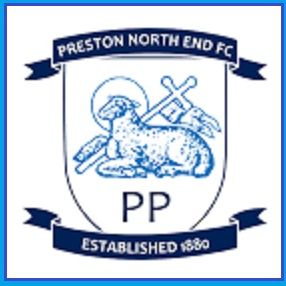
Listening to a very recent, football podcast there was an unexpected remark dropped in in an admittedly joshing yet some-what crowing fashion about a match that took place in 1889. It was played on Wearside on 29th April between a team from the winners of both the first and second seasons of the English Football League, and also the 1888 Cup, Preston North End, and Sunderland AFC, their equivalent from the temporarily rival league, the Football Alliance.
But a bit of context. Preston the previous year with much the same team had lost to the wee village team of Renton, the 1888 Scottish Cup winners, 4-1, and Sunderland would in May 1889 lose to 3rd Lanark 2-4 also at home, The 3rds being the 1889 Scottish Cup winners. So, whilst the Black Cats win over The Lily-whites was admirable, on an albeit rather rudimentary calculation there was a gap for the Scottish over the English of something between two and five goals. Except for two important facts. Sunderland too was a Scottish team. Against Preston it fielded seven Scots. Indeed it had more players recruited from Renton than there were from Sunderland itself. And even against the team from Glasgow it fielded five. Moreover, Preston was also Scots plus some. Nine of its eleven hailed from North of the Border.
In fact the match might be seen as, well, Scotland versus Scotland but with a twist. The Preston players had been recruited from as early as 1884, whilst Sunderland's were fresher meat. And in 1888 football in Scotland had been changed, again through Renton. Thus 29th April 1889 might be seen as the encounter of the old and new Scots game. And the new had won! - IPCW
----------------------------------------------------------------------
The Absurdity of the Parochial
At the beginning of the month an excellent report on some origins of the beautiful game was put out as a news item on television. It is neat, slick and informative and can be seen just now by clicking on:
https://www.itv.com/watch/news/birthplace-of-football-shares-its-history-in-bid-for-heritage-status/byn6sbv
But it is also disingenuous because it seeks not just to connect but also deliberately to confuse "Foot-Ball" and "Foot Ball" with what we play today, the Association Rules game. The item was on ITV, English ITV. Its source was Sheffield, from where in recent years has come laudably deep and important research on the former locally-played, Sheffield Rules version of the game and now has emerged a campaign for UNESCO recognition of it, seemingly, as the sole place of origin for football in its modern form.
Now it might seem to be dancing on a pin-head but, as the the article above on the SFA not knowing where it started, accuracy matters. So let us try to impart some. There were four stages, all in Britain, to the initial creation of what is today's football.
The first was the local, ad-hoc mass games what we in Scotland called "fitba" but existed throughout these islands. The second was the foundation of the first "Foot-Ball" clubs (note the hyphen) with codified and written rules. There is an argument that this first took place in Scotland in Edinburgh in 1824, lasted until 1841 with one copy of its hand-written rules shown as an example.
Then, third, there are the Cambridge Rules, of which there were several iterations, with the printed 1856 version illustrated. But note two things. First, the iterations did not flow on one from another. They seem to have been separate codification attempts with differing drivers. Second, they were, as illustrated, for a "Foot Ball" club, no hyphen, and again subject to change and addition, not least in 1861 by the Forest Football Club, later to be known as The Wanderers and future five-time Football Association Cup winners, including the first playing.
And finally from 1857 there is Sheffield, where a vibrant club culture developed, it is claimed from 1859 with the publication of its rules but in reality in the next decade with the foundation in 1860 of Hallam, Sheffield F.C.'s first external opponent.
But back to the pin head. "Foot-Ball" and even "Foot Ball" are not "football" as we understand it. They weren't in Edinburgh or Cambridge. And they did not become so In Sheffield either and to pretend otherwise is unhelpful. Not just are Sheffield's printed rules for a hyphenated game but the ITV piece's filming of the ledger of the founder of the first Sheffield club shows it clearly referring to "foot Ball".
So where does this leave us? After digitalisation much good work by many in many places has been done not just to uncover the real origins of modern football but also to sweep aside a number of myths. The fact is that the proto -game in Britain developed in largely parallel in a number of locations in these islands before coalescing. London produced an initial set of rules that stuck. Sheffield added and considerably improved them when it in 1877 it merged with the FA. Scotland, as its results show, provided tactics and technique. That it happened should be celebrated. However, instead there is parochialism and it is absurd. Where we have been allowed by technology the opportunity for clarity and agreement attempts are being made to create new but equally tenuous myths and resentments - North England of South England, Scotland of England and vice versa, even Scotland of Scotland - are not being eliminated but instead reformulated. A halt would be good. - IPCW
----------------------------------------------------------------------
World-Heritage or maybe just our Heritage?
The logo below is that of UNESCO World Heritage. And currently there seem to be two places vying for it for football, both in Britain and each in some ways laudable. The first, Glasgow, has been on the go for a few years but seems just now to rest in part on spurious facts and, again partially, on incompleteness. The second, newer one is Sheffield. It is better factually but with one major, major flaw. Sheffield Rules football was not our Association game and thus even with good research might just as well be the Swedish variant, Aztec or Chinese.
But that is not to say that the principal of application presumably on Criteria (i), (iii) and (vi) (Click here to view them) is not a good one. Indeed Scotland currently has one in the creation, Scotland's Trail, so there is national governmental will for this sort of project, which should not be ignored and might be harnessed on the basis that not over-covetous South Glasgow but our nation more widely is actually and provably the source globally of much of the "The Beautiful Game".
So on that basis we suggest a new application, Scottish Government-backed, and four marker locations. The first is the Queen's Park open-space because it was where a group of men from the North, Moray and Aberdeen, joined together with men from the South, Glaswegians, to play not just an ad-hoc game but one from which the profoundly influential Queen's Park club, our doyen still, was founded. And the other three needs must be in the Vale of Leven. At Park Neuk in Alexandria, where football as a working-class game began. At Tontine Park in Renton, where modern football with not just attack, defence but now a mid-field, was formulated. And in Dumbarton perhaps aptly right in front of the Citizens' Advice Office that now stands on the site of the tenement where John William "Jake" Madden was born and from where he would play for the town team, Celtic and Scotland before taking himself to Prague, never to return, but do so as the first player turned coach and as such be the pioneer-carrier of the top-flight Scottish game beyond our shores. Indeed so successful was he that his picture adorns the reception of the Slavia Prague stadium, a stand is named for him and there is still an annual pilgrimage to his grave. Those Czechs know how to honour.
And we ask too that all the above might be done with a little humility - Scotland, on-field, is not the footballing force it was for so long - and with taste. Indeed there we have an example. The good folk of Busby have erected in their midst a bust of Tommy Donohoe, one of their own and also of the three takers of football to Brazil, all Scots, by birth or Diaspora. It stands on plinth, subtle in its remembrance and recognition, a model perhaps for similar Unesco-sanctioned memorials; a plinth, a plaque of explanation, a football as a globe and a thistle (See above). And if Unesco show themselves not to be interested then perhaps we can out of simple, national pride do it anyway and before Down South's at very best marginal claim goes further? - IPCW
----------------------------------------------------------------------
Sheffield in the Birth of Football
There is in Sheffield some interesting work being done on the origins of football. It, that is the game there, began in 1857 with Sheffield F.C., a team, which in a remarkable parallel with Glasgow's Queen's Park precisely ten years later, was until 1860 a team with no "mates" or as we would say, "nae pals".
The work involves delving into the local Press of the time to both seek and find references to combination, positioning and even passing. And they were half a decade before Scotland and two or three years even prior to London and the Royal Engineers.
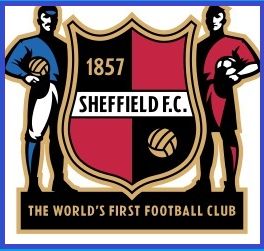
But there is a problem, albeit for them not us. Sheffield, club and city, played to it own rules. It was not Association football. The Sheffield Football Association did not merge into the London equivalent until 1877, admittedly with rules added from the former that were so superior that they persist to this day. But it was done from a position of weakness. For all the start it had had in development, when the two codes first crossed in 1873-4 in the FA Cup Sheffield F.C. did not get beyond the Third Round, effectively the Quarter Finals, was walked-over in the First Round the following season and was defeated in the next, 1875-6, again in Round Three, but this time after two walk-overs in its favour. And this was whilst, when their vanquishers and eventual Cup-winners, The Wanderers, later faced, in the November of the year, their Scottish equivalent, Queen's Park, the result was for the English team a 0-6 defeat at home. Nor was it a lone example of increasing Scots Association superiority not just over English teams but Sheffield ones specifically. A month earlier again Queen's Park had defeated Notts County and in December would do the same to Cambridge University, with the previous April Clydesdale having already rolled over Sheffield Wednesday and Alexandra Athletic Sheffield Albion and both Scottish teams being well down the then Caledonian pecking-order. The latter had been knocked out of the season's Scottish Cup in the First Round, the former in the Third, both by the Hampden club. Thus it is clear the potential was for Sheffield, with its twenty years in the game, to learn from Scotland with five and not the contrary. The questions are, on both sides, why. - IPCW
----------------------------------------------------------------------
Also see for a wider range of SFHG analysis:
A Caring, Perhaps Saving Critique?
We at SFHG like a trail. Just scroll down and you will find twenty-eight to be explored virtually or physically as you wish, albeit the reach is so extensive that one is in Ireland, two in Continental Europe and two require crossing the Atlantic.
But there is one closer to home, in Glasgow, created not by us and which, we suggest, requires a little, threefold attention. It is “Football’s Square Mile”.
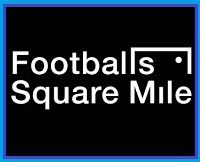
The first point of contention is after the welcome its invitation to “explore the origins of passing-game”. There is little evidence that either it or even passing itself was first employed there. The latter is recorded first in Sheffield and then from Chatham before the Association game fully arrived in Scotland in 1871. And the former did not really emerge until the early 1880s and then with as much likelihood that its very much still-Scottish source was on the banks of the Dunbartonshire Leven as those of the Clyde.
The second point is a little pedantic. Football comes in many forms and they had as many origins. What we are talking about is the Association game aka Soccer and a little precision might ensure that amongst others Irish Gaels, Americans, Canadians and some Australians will not be rubbed up the wrong way.
And the third is that more than one of the sites spotlighted might simply be wrong in content or location, including where a plaque has been placed. And don’t just accept our pointing towards potential inaccuracy. It’s borrowed. The concerns comes from an impeccable source. It suggests that at a minimum in Site 1 the wrong birth-date of Alex Watson Hutton has been posted, to which might be added that of the almost thirty years AWH spent in Scotland twenty-seven, including his learning of the game and the meeting of both future his wives, were in Edinburgh. A better object of Glaswegian adoration might be John Harley, creator of the Uruguayan style of play, who was born five hundred yards from Cathcart Cemetery and brought up within a mile of it. Moreover, in Site 2 the wrong building is claimed to be the birthplace of the Scottish Football Association. Indeed a plaque is said to have been placed (on a lamp-post?) when it should be on the other side of the road. And the source says there is more. We await developments with interest.
So with all this in mind there can be two responses from the Square Mile, batter on regardless or accept scrutiny, cooperate, correct and even add. Generally there were many more contributing clubs than just Queen's Park and Third Lanark. Specifically, Site 5, the Glasgow Necropolis, is the also the final resting place of James Richmond and Don Siillars, both Queen's Park and Scotland players in the early days of the game. Are they not also worth a mention? Similarly Site 8, the Southern Necropolis, contains the grave of David Wotherspoon, one of Scotland's very first eleven and which, as we have reported (Scroll down and see below), is unmarked. Perhaps some money might be found from the SFA or elsewhere and used to change that for perpetuity. And Site 21, Cathcart Cemetery, contains not just seven graves of import but is the burial-place of ten more former internationalists with neighbouring Linn Park having seen the cremation of a further nine. All equally deserve honouring. Our man, Martin Donnelly, can help in every case. Consult him and not only will the history then be both right and augmented, as it would be by the addition of our Southside and Southern Suburbs Trails, but, with Glasgow’s football looking to be gain UNESCO World Heritage status, embarrassment by omission, even international mockery through error might be avoided by the city, its authorities, the SFA and also not re-percuss on non-Glaswegian, football-following Scots more widely. Think on. - IPCW
______________________________________________
A Hampdener Rebuttal
Hyperbole can certainly be fun. It can also be good but inaccuracy can be the former but not the latter. And so it is with our national game.
On the front page of the web-site of The Hampden Collection, one which otherwise serves an extremely valuable function in spotlighting the contribution Glasgow, central and south, made to early Scottish football, (also click on the map to view) the following claims are made:
“this (The First Hampden Park) is where the ‘Scotch Professors’ developed the modern passing, running and combination game, and exported it to the world.”
Not one of them is true, so let’s examine why and in something of reverse order.
That Scots took essentially today's football to much of the World, indeed starting with England, is correct. It is documented, see for example:
But they were not Professors of any kind with one notable, future exception, Alexander Meiklejohn of Pawtucket, USA who in fact was born in Lancashire but only because his family briefly passed through on the way from Neilston to Rhode Island. In fact in the beginning to England the carriers were largely miners, factory-workers or labourers barely out of their teens, for whom what football they had learned in perhaps two or three seasons at home might offer a slightly better-paying alternative in the short-term and at best perhaps a pub to run in probably a Lancashire mill-town in the long. Nor did they come through Hampden. Of the seventeen Down South in 1880 not one had played for Queen’s Park. Of the 20 in 1882 it was twenty and again none again and in 1884 it was seventy-four and, you guessed it, none again. And even of those going in the same period further afield, either temporarily or for good, there were only two, one to China and the other to Chicago. In fact, whilst football was first played by our countrymen in initially Australia, then Canada, the USA, Uruguay and Argentina and beyond it was by enthusiasts from home and even Diasporans bitten by the same bug, who probably knew of the Queen’s Park club, called their own teams after it but had never seen Hampden in their lives.
Then there is the twofold problems of this game developed in Glasgow’s expanding Southern Suburbs being, first, “passing, running and combination” (PRC) and, second, “modern”.
Modern football, I would contend requires not just PRC but tactics i.e. deliberate organisation and three effective on-field elements to match; attack, defence and mid-field. Attack was always there. The ethos of the clubs that in 1863 formed the Football Association was it all-out. Organised defence came in Association football in 1872 in the first international and through Robert Gardner. A mid-field of sorts appeared in 1878 in Wales at club level and at international level in 1882 and 1883 with 2:3:5, the only problem being that in spite of it both Wales and England kept being beaten by Scotland and its traditional system. Only in 1888 did that change as Scotland adopted the domestically-sourced Renton model, got thoroughly gubbed but persisted and was able after a few seasons and other impediments to work it out even as its export had already begun, and this time through players with the maturity actually to know what they were doing. In 1887 81 Scots were playing south of the border. In 1898 it was 270.
And so finally we turn to PRC itself. No kinds of football have been sports that did not involve running. The assertion that it came from Hampden, Scotland or anywhere else is simply foolish. As to passing and combination there is evidence from elsewhere, namely in Sheffield-rules football, that they were in some way employed perhaps six and certainly two years before even the formation of Queen’s Park, never mind the acquisition of the First Hampden, the only counter to which is that it wasn’t the Association game. But even then there are still problems. Combination is documented as being used even in Association football by the Royal Engineers as early as 1869 and passing by 1870. Scottish football essentially started in 1872.
And there is more. Whatever was played in Yorkshire or Chatham might have involved passing but was still not the “passing…. game” and here there is for the Hampdeners a proper problem. There is no real evidence that such a thing was employed by Queen’s Park in the first half of the 1870s - "passing" itself is mentioned only in the report of the 1874 international and then with "close-dribbling" - but every evidence that it was a decade later. So what happened in between? Whatever it was it probably had little to with The Spiders and therefore their ground or grounds. The team went into significant decline from 1876, knocked out of the country’s major competition, the Scottish Cup, in the quarter-finals in 1876-7, in the third round in 1877-8 and the quarter-finals again in 1878-9, before starting a major recruitment drive that seems to have involved “tapping up” players from other clubs. There are several examples, not least Andrew Watson. And meantime as emphasis on passing seems to have grown another club ruled the roost and needs must therefore be considered the most obvious source of the trend, its players even recorded not just as employing but scoring from it in the 1877 game against England. That team was Vale of Leven from Dunbartonshire’s Alexandria so nowhere near Hampden, not even from elsewhere in Glasgow but way outwith the city altogether. - IPCW
______________________________________________
Folk
Robert Reid - Chile's Penultimate Piece
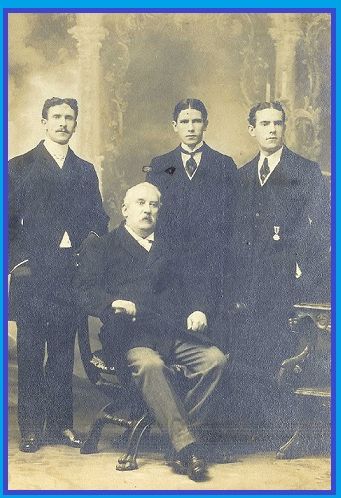
They say good comes to those who wait and in this case there can be no argument. Of the founders of the Chilean Football Association, essentially of football in Chile there were no known photos of two of them, Honorary President, Peter Ewing, and Treasurer, Robert Reid. But for the latter, born in Ardrossan, that has now been turned on its head. A 1905 picture of him and his three sons, the youngest of whom in 1917 make the ultimate sacrifice at Passchendaele, it taken in Argentina, has come to light. And we also know the man, who a decade earlier in Valparaiso first held the city's new game's purse-strings, on retirement came almost home. He returned to Scotland but settled in Glasgow, dying there on Cambridge Road in 1919, a widower following the passing of his wife, Janet, there also in 1915. - IPCW
----------------------------------------------------------------------
Adam, Mackay & Recreativo de Huelva
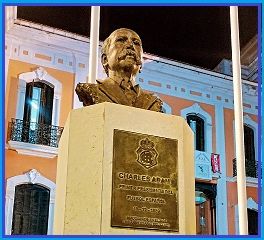
The bust of Paisley's Charles Adam in front of the Casa Colon, Huelva.
The oldest club in Spain still in existence and playing, the doyen of Spanish football, the exact equivalent of our Queen's Park, is Recreativo, founded in 1889 and by Scots in the Andalusian port-city of Huelva. And it knows how to celebrate its origins. In front of the Casa Colon, a building from that era and still at the centre of the town is a bust on a plinth. It is of Charles Adam, its first President, the Chairman of the then local gas company, who gave land for the first ground. However, that he is not forgotten there in is direct contrast to Paisley where he was born and brought up.
And then there is the man at the root of the club's foundation, William Alexander Mackay, who arrived to tend to the medical needs of the growing, British population brought to the city by ore-mining, found time over the best part of forty years to minister to the locals too and for whom sport meant health for all. And minister was right for he was the son of the manse. Born in Lybster in Caithness, he retired to Ross-shire and is buried at Logie Easter by Invergordon with in neither place anything to mark him or the impact he had in Southern Iberia before many even British clubs had come into existence.
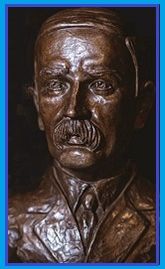
The bust of Lybster's William Alexander Mackay given as an honorarium by Receativo de Huelva, the club he founded and of which Charles Adam was the first President.
But Recreativo de Huelva know how to honour. In a gala held in December 2023, indeed the William Alexander Mackay Gala, to those it deemed worthy was given as the club's highest honour an inscribed bust of the man himself. - IPCW
Johnny Madden
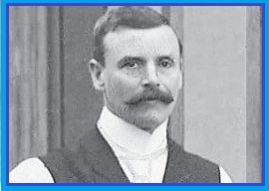
One hundred and five years ago this man, Johnny "Jake" Madden left Scotland for Prague never to return. He went as the Dumbarton-born, ex-hometown, Celtic and Scotland player and he became in the Czech the "grandfather" of the Slavia club, its trainer and servant for not far short of fifty years. As such he was the first top-class player, once the boots were hung up, to take his footballing, indeed Scottish footballing skills, long-term beyond Britain. For what he did in and for Prague he is honoured to this day. At the Slavia ground a stand is named for him. A mural-portrait dominates the club-reception. And even in death in his adopted home he is clearly remembered. Slavia, Celtic and Dumbarton colours proudly adorn his still well-maintained grave. It is worth a visit just to see what can be done if there is a will, because in the town of his birth there is zip. - IPCW & AF
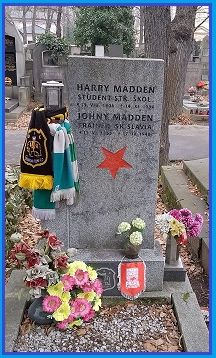
Johnny Madden grave in Olsanky Cemetery Prague. He is buried with his son, see map.
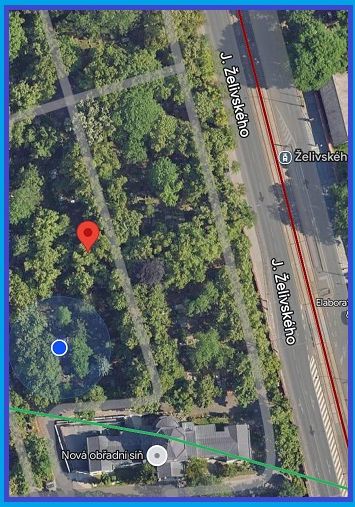
----------------------------------------------------------------------
As the "Lawman" is laid to rest,
Roddy Forsyth's Tribute to him

A young man sits at his desk in the offices of Aberdeen County Council, meticulously drawing a plan for a bin shed which is to be constructed behind a housing project. It is 1958, the young man is 18 and he is living the dream – of being an architect. His name is Denis Law and he knows he is lucky to have his job, because he suffers from strabismus, a condition in which one’s eyes face in different directions, and his employers were dubious about his suitability until they asked him to attempt a test drawing which he accomplished in tidy fashion.
Had this scenario really taken place, our record of Law would be confined to dusty files in a municipal archive. “I used to draw street plans in my school jotters,” he told me over a beer in Rapallo when we were covering Scotland’s participation in Italia 90. “It was a real thing for me. I loved playing football but it didn’t seem like something I could do for a living.”
However, the trajectory of a lifetime can be diverted by seemingly innocuous circumstance. In Law’s case, it was the fact that Archie Beattie, brother of Andy, the manager of Huddersfield Town, happened to be in Aberdeen to visit a relative and he chose to take in a youth game while in town. Although he thought that Law was an unlikely looking prospect, Archie was struck by his skill on the ball and recommended him to Andy, who was sufficiently impressed to offer the 15-year-old a contract and pay for an operation to correct Law’s vision.
The rest is legend.
Law had now embarked on the construction of a unique career and the lines and angles which he would master existed, not on graph paper, but in the unfolding drama of football contests, where he would establish himself as the greatest player Scotland has produced. That must inevitably be a partly subjective judgement but it assumes significant weight when it comes from the most successful manager in British football history.
"He was the best Scottish player of all time,” said Sir Alex Ferguson, on hearing of Law’s death at the age of 84, last week. It is January 2025. “He was a fantastic player. He epitomises Scotland, fighting away, having a fight in an empty house. He was an incredible human being."
The statistics of Law’s career reinforce Ferguson’s call. Law made his debut for Huddersfield at the age of 16 and at 18 he won the first of 55 Scotland caps (at a time when far fewer international matches were scheduled than nowadays), in a British Home Championship victory over Wales at Ninian Park, where he scored in a 3-0 win.
His tally of 30 goals in 55 Scotland appearances remains a national record, equalled only by Kenny Dalglish over almost twice as many games – 102 in total. Dalglish, the only other player to vie with Law as best Scottish footballer, said upon hearing of Denis’s passing: “Others can have their opinions but, for me, he was the hero.”
Law also racked up a portfolio of club records by scoring 18 hat tricks for Manchester United – in the modern era Wayne Rooney is tops with 8 - and he netted 46 goals in 1963-64, a tally which remains unsurpassed at Old Trafford. That season he was named European Footballer of the Year and he is still the only Scot to have won the Ballon D’Or. The iconic image of his scoring feats was of Law’s ability to appear stationary in flight when heading the ball and punching the air with his jersey cuff gripped inside his fist whenever he found the mark.
That said, Law was possessor of one distinction which rankled with him for the rest of his life. He played in the Scotland side battered 9-3 by England in the Home Championship encounter at Wembley in 1961. As a Scot, living and working south of the border during England’s triumphant World Cup campaign five years later, he was the butt of many taunts and famously – or notoriously, depending on your allegiance – played a round of golf on an otherwise deserted course while Alf Ramsey’s players secured the trophy against West Germany.
His painful recollection of the 1961 fiasco was only partly exorcised by Scotland’s 3-2 victory at Wembley in 1967, England’s first reverse as world champions. Law wanted badly to inflict a much heavier defeat but could not dissuade the equally strong-willed Jim Baxter from cavorting around the pitch, socks rolled down to his ankles, playing keepie-uppie rather than inflicting humiliation by helping rack up an emphatic score.
A factor not usually mentioned in Scottish accounts of the event was that – in those days before substitutes – England played with only eight effective players because of injuries sustained during the match by Jack Charlton, Ray Wilson and Jimmy Greaves. At half time the Scots led 1-0 from a Law strike and in the dressing room he beseeched Baxter to devote his energies to the infliction of tangible damage by way of goals.
“Jim wasn’t bothered,” Law recollected 30 years later. “He was just saying, ‘Aye, aye, right. We’re taking the piss out of them.’ We could have scored at least five that day.”
The following year, the immortal triumvirate of Law, Bobby Charlton and George Best propelled Manchester United towards a European Cup triumph. Law, though, had to sit out the victory over Benfica at Wembley because of injury. Meanwhile, Scotland’s failure to reach the finals of either the FIFA World Cup or Uefa European Championship for 16 years after 1958 kept him off the stage of the major international tournaments.
He did make a single appearance at the 1974 World Cup finals against Yugoslavia, in the 2-0 victory over Zaire, but he was clearly past his peak and the game marked the last outing of Law’s international career, prior to his retirement from football the following season.
His strongly developed individualism had been in evidence when he chose to play, at either end of his career, for Manchester City, having been idolised between times by the Manchester United faithful as ‘King of the Stretford End’. It had also motivated him to sign for Torino in 1961 when wages in Italy far exceeded the pay scale of English clubs, but the ingrained defensive negativity of the Italian game frustrated Law to the point where he walked out on the club and returned to Scotland until Matt Busby paid £115,000 (a record fee at the time) to bring him to Old Trafford.
When his playing career came to an end, there was speculation that Law would go into management, but the suggestion was never entertained by those who knew him well. When the eminent Aberdonian journalist, Jack Webster, suggested to the Aberdeen vice-chairman, Chris Anderson, that the club should bring their native son to Pittodrie as manager, Anderson replied that Denis could not organise a tea party, far less a football club.
Instead, Law became a football pundit, principally for the BBC, and I had the immensely enjoyable good fortune to work with him at three World Cup finals and many domestic and European games involving Scottish clubs. We could not walk a street at a Scotland game abroad without him being beseeched by the Tartan Army for autographs and pictures and he invariably complied with good humour, although I once saw the combative side of his nature surface when a supporter tried to take a photo of him in a hotel urinal.
The intrusive fan was left in utterly no doubt what would happen to his camera if he took the snap – and retreated prudently in hangdog fashion.
The most poignant feature of Denis’s later years was the affliction of dementia, that curse of far too many players who thrilled us with their ability to head a football.
But on the positive side of the balance sheet of achievement, Scottish dialect has given us the perfect description of Denis Law, as he was perceived during his predatory peak as the country’s highest scoring striker. He was gallus.
The definition of gallus is a perfect ABC of his character and talent - adventurous, bold and cheeky. Denis Law was a gallus law unto himself.
RIP the Lawman, architect of football fantasy. - RF
----------------------------------------------------------------------
Lady Florence Dixie
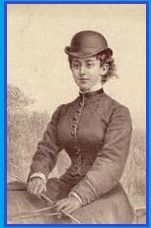
In 1895, as Lord Kinnaird, President of the FA, and William McGregor, founder of the Football League, Perthshire-men both, controlled English football so Dumfries-shire's Florence Dixie nee Douglas became first President of the again English-based British Ladies FC, the World's first women's football club. As such she added to her already pioneering work as traveller, female war-correspondent and writer the health and well-being of women through sport, see The Ladies' Game and Roddy Forsyth's article, Lady Florence Dixie. At her married home in England she is honoured with a plaque. At her birthplace here in Scotland there is as yet nothing to recognise her and her role in the beautiful game. With your help that can be rectified. - RF
And read Roddy's piece on"Lady Florence Dixie, women's football pioneer"
The Brazilian Scot(t)s

The smiling face above is that of Archie Scott. He is a Brazilian, who lives there in a suburb of Sao Paulo. But he is also a great-grandson of Tom Scott, one of three men to have taken football at much the same time (1894) to South America's largest nation, in his case to Campinas and Jundiai in Sao Paulo state. Nor is it coincidence that all three were Scots, Archie's forebear born in Glasgow but buried in said Jundiai or even that his grandfather and great uncles were also pioneers of football in Sao Paulo itself. For more detail click here with more to come. - IPCW
----------------------------------------------------------------------
plus:
John Harley
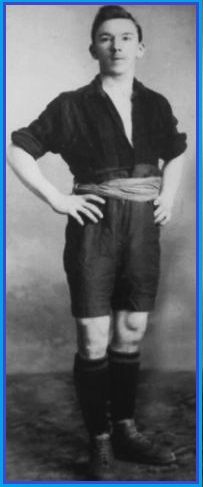
There is a small part of Scotland that is forever Uruguay. It is in Cathcart, a few stones throws from our national football stadium, Hampden Park, and is the birthplace of one of the most important figures in international football. In South America he is known as "El Yoni". Here it was simply John or Johnny Harley. But it was under his influence that his adopted country developed its style of play, one that in the 1920s took it to successive Olympic Gold Medals and in 1930 victory the first World Cup. His contribution to the World game deserves our recognition. - IPCW
______________________________________________
Place
The Belfast City Cemetery Tour
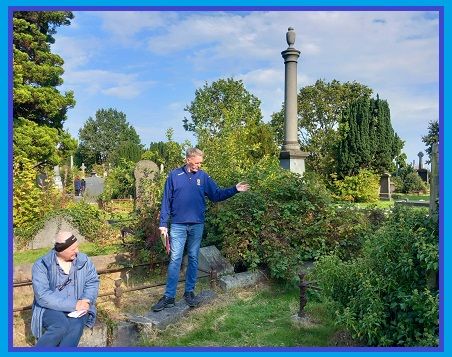
Recently, SFHG member Alistair Firth, along with local historian Peter McCabe, conducted the inaugural tour of graves of prominent footballers in Belfast City Cemetery. There are many footballers of importance buried within the huge Victorian cemetery – ranging from Scottish internationals (including Robert Parlane), Scottish-born Irish internationals (including Bob Morrison), Irish internationals (including their first goal scorer and those who played in the first British Championship against Scotland in 1884) and Scottish players who influenced the local game (Marshall McEwan).
A number of people who attended were very knowledgeable about the history of the game and there was a lot of interesting debate during the tour. It is hoped that the feedback will stimulate further interest in future tours and that another one will be written for Dundonald Cemetery later in the year. It is also hoped that we can get interest in the tour as an event for the delegates at FootyCon25 which takes place in June2025 at Windsor Park. Any monies raised will be used to fund future grave restoration and maintenance. For more information contact Ali Firth. - AF
----------------------------------------------------------------------

Pride in Place
There is in what is now a part of Rio de Janeiro this statue. It alone is a dozen feet high, golden and clearly of a footballer, whose left boot is placed on a globe on the country, from which he came, Scotland, and his right above Brazil, the country, to which he went and from which he never returned. The player is Tommy Donohoe, who was and remains, exactly a century after his death in 1925, a figure of immense local, civic pride. The whole monument, thirty feet in height and standing in front of a shopping-mall that was once the mill, in which he worked for thirty-five years, is always pristine.
And such has been the impact of the man of gold that word spread back to where he was born and bred, Busby in Renfrewshire. Indeed, it proved enough there also to inspire not a statue but a bust, not a dais but a plinth but an again a civic reaction like no other in this country, so far at least.
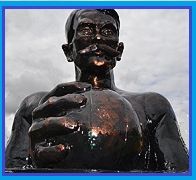
But Bangu is not a wealthy place. Much of its population packs itself onto rickety trains morning and evening to work in Rio city. In that it is not unlike modern Busby. However, its fate has not been to be folded into Glasgow's somewhat gentrified Southern Suburbs. It is sprawling, suburban Brazil, even somewhat shanty. It is also post-industrial. The textile industry that had brought Tommy there has gone elsewhere. In that is it little different to many Scots town, where there was once everything from coal and steel to thread and lace and much in-between. But its does have passion in its past, the people of that past, in a game that those people brought with them and implanted, indeed enough for them first to invest serious money in honouring memory and for Busby, to the tune of £40,000, then to be lifted up by the same wave.
Nor is Bangu alone in recognising the importance of Scots-based memory. In Santiago local football enthusiasts make an annual pilgrimage (See article immediately below) to the graves of the Ramsay family, all five of whose sons were born in Chile and played football in its capital, with three instrumental in the foundation there not just of clubs but also officiating. But in Bo'ness, where their father, Alexander, and their mother, Jessie Frew, grew up, boy and girl next-door, little or nothing seems known of them nor, no fault implied, is there recognition of George Eaton, the also local taker of the game to Finland.
And then there is Prague. The outside of the Slavia Prague stadium is clad with pictures of some of it great players, its foyer lined with murals of the greatest of them all and one other, the Scotsman, for whom a stand is also named, seen and known as the "grandfather of the club. He was Johnny Madden, another to leave and not return, and in 1905 the first elite player turned coach to take the Scottish game, indeed THE game, abroad. Moreover, his grave at the city's Olsany Cemetery is the object also of pilgrimage by supporters of the Czech club and others notably Celtic. But in his town of his birth and that of his first club, Dumbarton, there is as yet nothing, more's the shame but again not blame. It, indeed it and Bo'ness are just two locations of a number where, perhaps more Busby- than Bangu-style and so for a relatively small investment, civic pride might be created in person and place, where it would not go amiss and there is currently nothing. - IPCW
----------------------------------------------------------------------
Aguilas and El Rubial
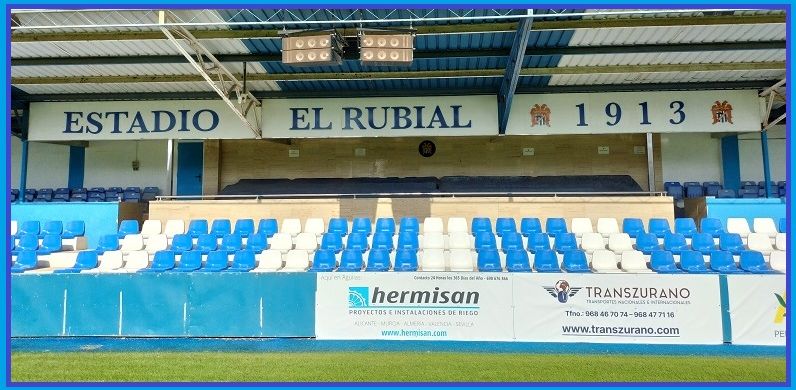
There is one football place in Spain that is forever Scotland. It is the beautiful El Rubial, all blue and white for a reason, the oldest football ground on the Iberian Peninsula still in use and the Murcian home currently of Aguilas F.C..
And the reason for the connection is John (Juan) Gray, born Kelso, raised in Edinburgh but for thirty years a resident of the Spanish town, as well as founder, funder and trainer of its first two, undefeated teams. - IPCW
The Chilean Founders
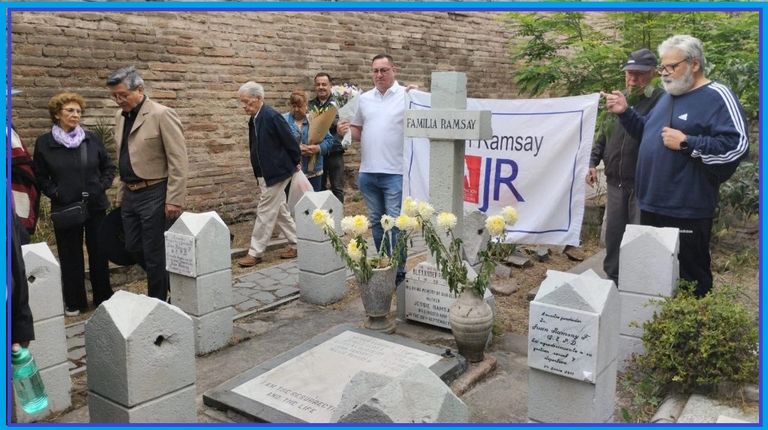
Four Scots families took football to Chile, the Scotts, the Gemmills, the Reids and the Ewings to Valparaiso to found the Chilean Football Association in 1895, a second generation of Ewings and the Ramsays a decade later to lay the base for the game in Santiago. Each year the Ramsays are honoured for what they achieved with pictures of the celebration supplied by Our Man in Chile, Sebastian Nunez Mardones, Yet neither they nor any of their compatriot contemporaries are lauded in their home-land, although their origins are known. Nor are they alone with the question, why not? - IPCW
______________________________________________
Thinking and Thinking-On
and again if you find this site interesting and use any of its content, please remember that both research, plaques and particularly preservation and restoration do not come free,. So, if you can make a contribution generally via founder member, Alistair Firth, to SFHG funds rather than a specific appeal, one commensurate with the value you have extracted from our work so far, then do not be shy.
Alistair is pictured above on the left, holding the flag with Joe Taylor's great grandson, Colin Taylor, on the right. Account details are to be found here by clicking on:
____________________________________________
SFHG Aims
- - to continue, aid and enlarge the research done by us and serious others on the Scots contribution home and abroad to the World game and post it here on-line, a site which, as our own time allows, we are constantly building.
- - to honour on-line and in the media with biographies and articles by us and significant others and wherever possible physically, at home and abroad with plaques and restorations, those many Scots who have made important contributions at all levels to that same World game.
- - in Scotland itself to encourage the exploration by all those with interest of Scotland's remarkable, indeed pivotal, global contribution to that same World game.
To do this final one we began with the creation of a series of virtual, footballing trails, The History Trails, and, within some, community Rambles, Strolls and Drive-Throughs, that can be followed on foot or by car just as we have done. See above.
And finally we hope that our work will catch the attention, as it has already again both at home and abroad, of still more descendants of those same contributors, and encourage them to come forward to accept proudly the accolades due to their forebears.
______________________________________________
____________________________________________
______________________________________________
Other Recommended Sources
Scottish Sport History
If there is one there is one web-site that has been an inspiration for what the SFHG is trying to provide, comprehensive research into fitba', our football, at home at abroad, it is Andy Mitchell's Scottish Sport History. Since 2012, so for more than a decade, he has produced a veritable stream of impeccably accurate articles and books on many aspects of Scottish sport and Scots in it. It is he, for example, who rediscovered the grave in London's Kew of Andrew Watson. And, although he is not a member of the SFHG, he is seen by us with regard to football as very much a "fellow traveller". So, if you have not done so, please visit his site now by clicking below on:
Andy Mitchell's Scottish Sport History
And we avidly recommend you purchase his definitive Who's Who of all the players, who represented Scotland from the first International game in 1872 to the start of the Second World War. See, buy and read
And there is more.............
For up to two decades a small, dedicated group of enthusiasts has worked away largely without the recognition they deserve compiling data on both Scottish senior and junior football, male and female. They have delved into every aspect of each - clubs, games, players, crowds, trophies - and it is equally available to all for use, support and sheer admiration on:
The Scottish Football Historical Results Archive
plus there is the ever-growing Scotland the Grave, the work of SGHG member Martin Donnelly, with other members Alistair Firth and Mandy Higgins and other chipping in, its records the final resting places of those who have played for the Scotland National Team.
https://www.facebook.com/ScotlandTheGrave/
Very much worth keeping up with too is the personal blog of Richard McBrearty, the Curator of the Scottish Football Museum. He is delving deeply into what exactly is on the tin at:
and the esteemed historian of football in Sheffield, Steve Wood, has, amongst his wide range of excellent research, books etc., posted this self-explanatory video, How Scotland United the Rules of Football. Click on to view. ______________________________________________
See also a book of interest that is not Glasgow nor even Central Belt:
"36-0: The story of John Petrie and the Arbroath men who made world footballing history."
Contact
And perhaps you also have more information to add or personal stories to relate. If so, please contact us on:
E-mail: contact@thescotsfootballhistoriansgroup.org
Or outwith Scotland you might like to pass on that information or perhaps put a question to a reputable historian in the country in question. If so, please see our list of Associate Members.
______________________________________________
